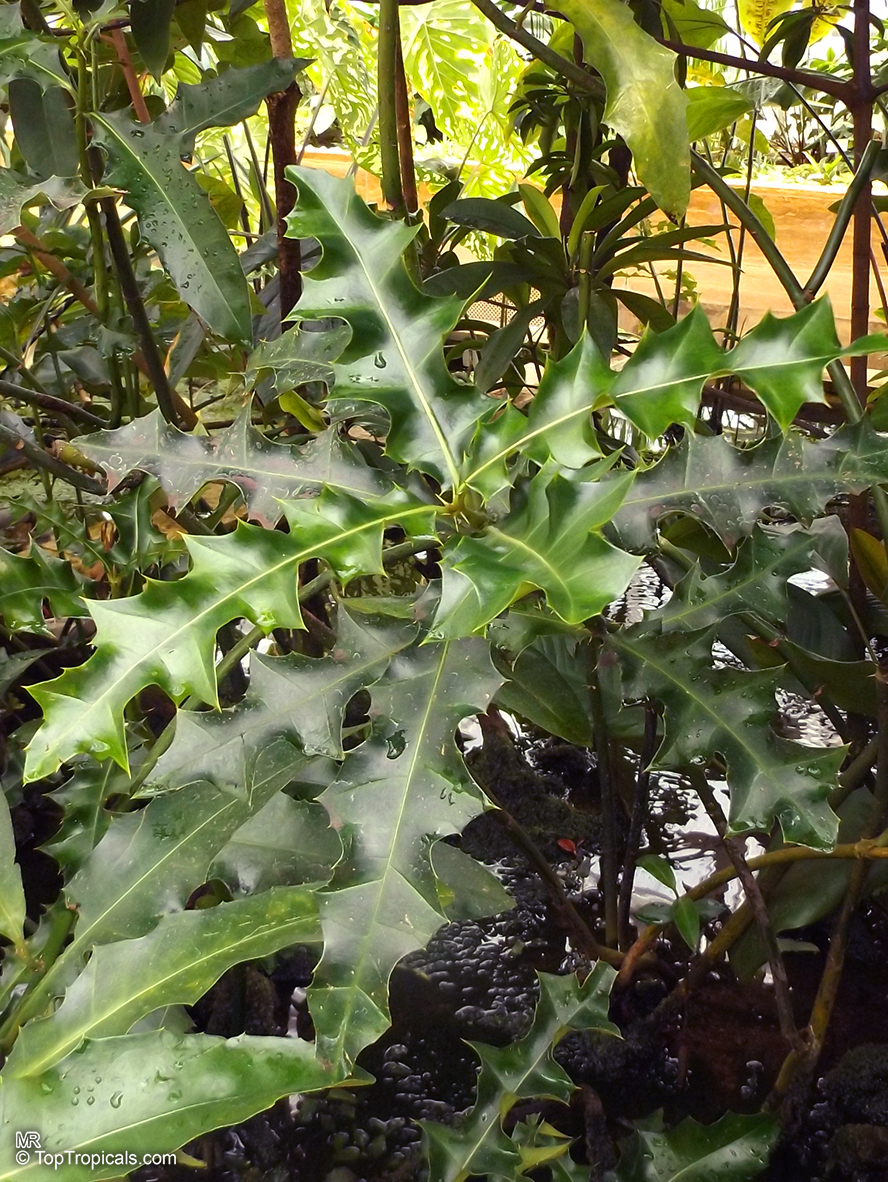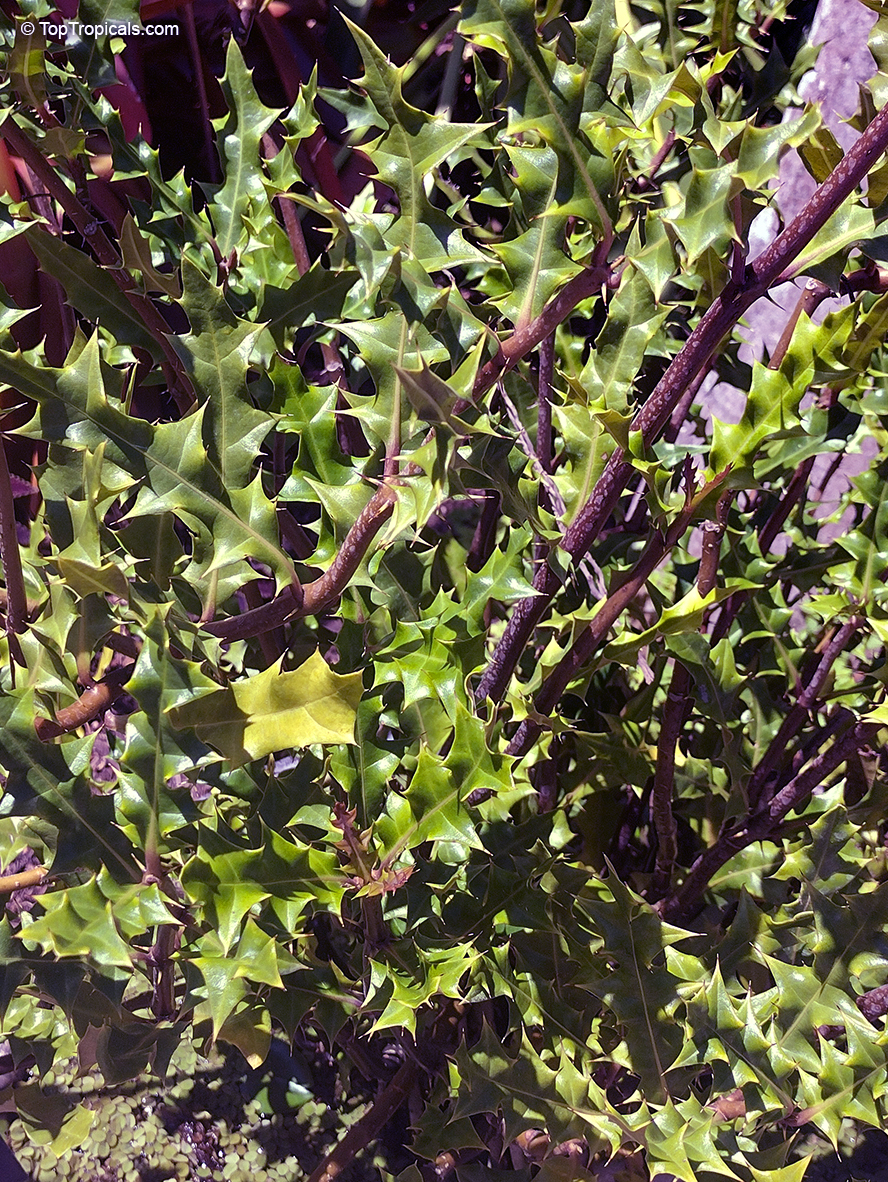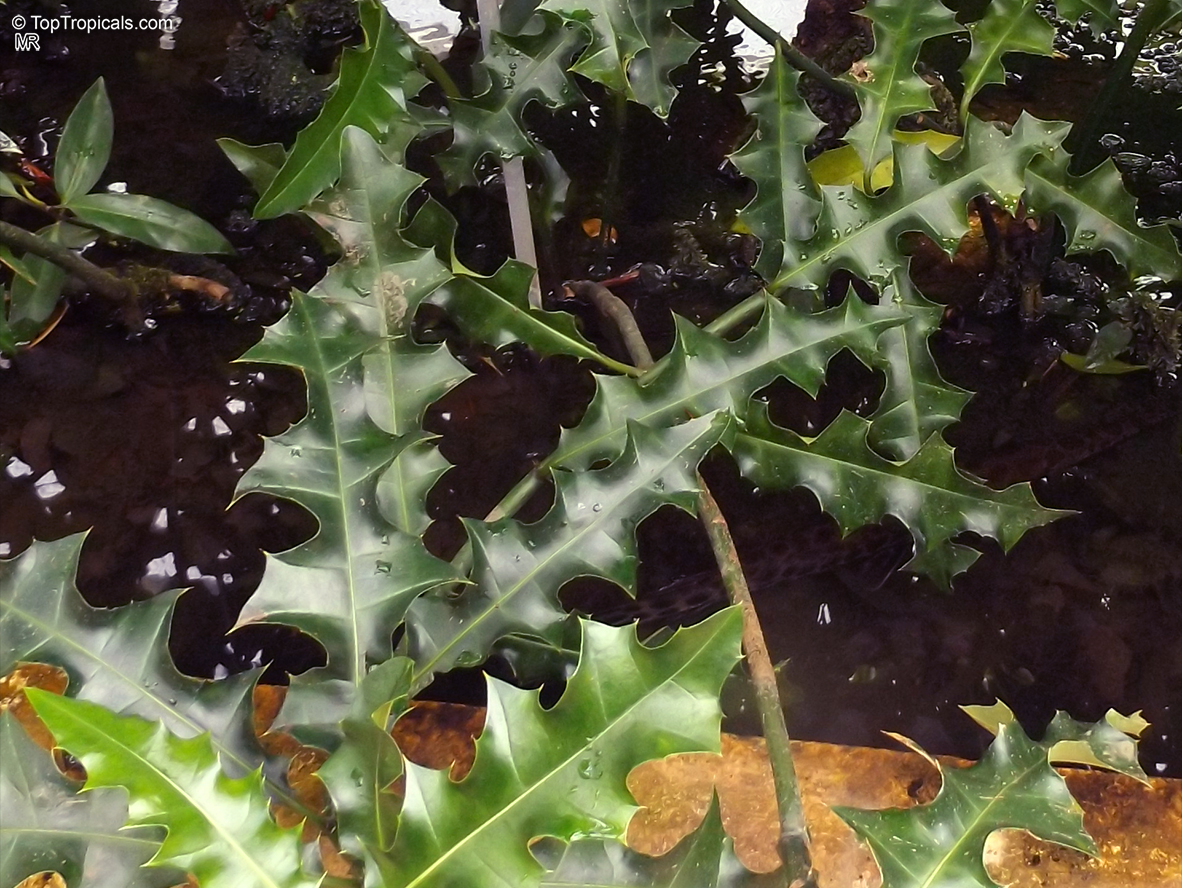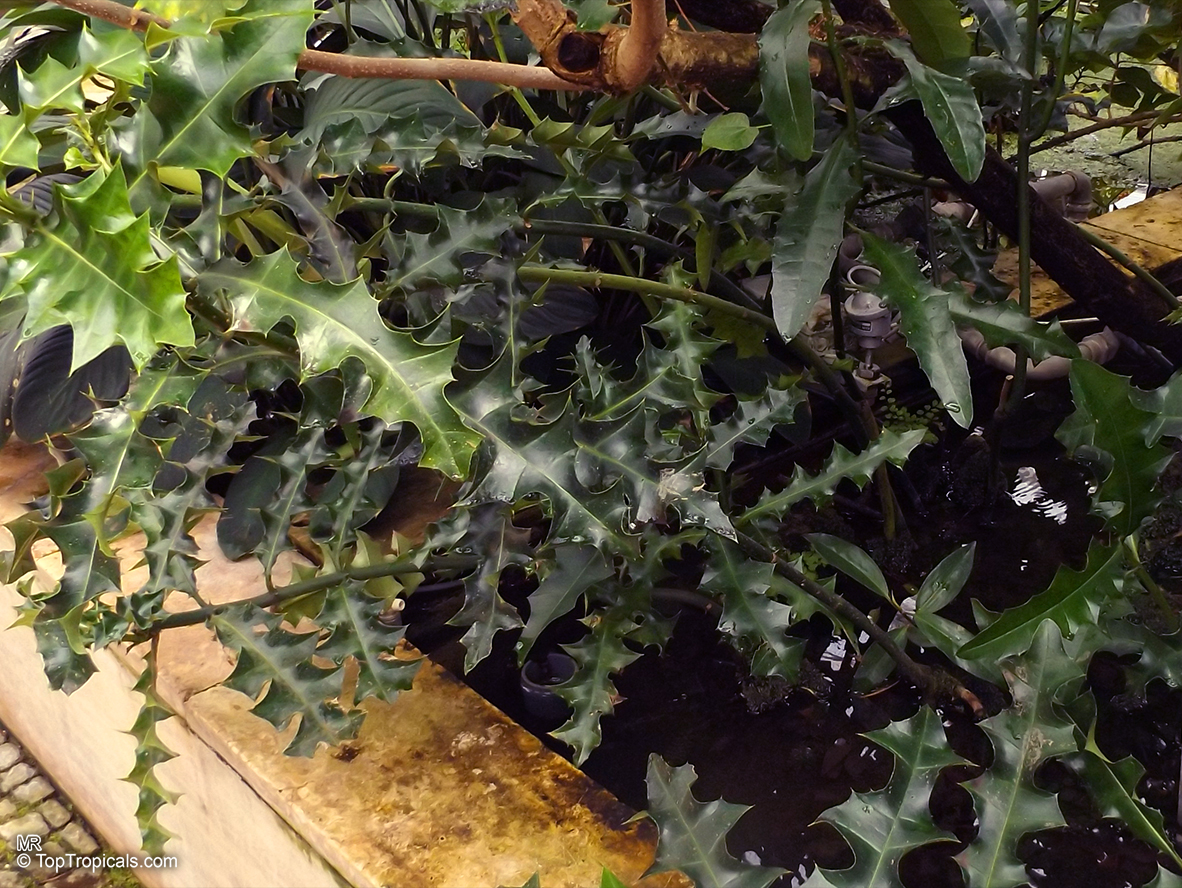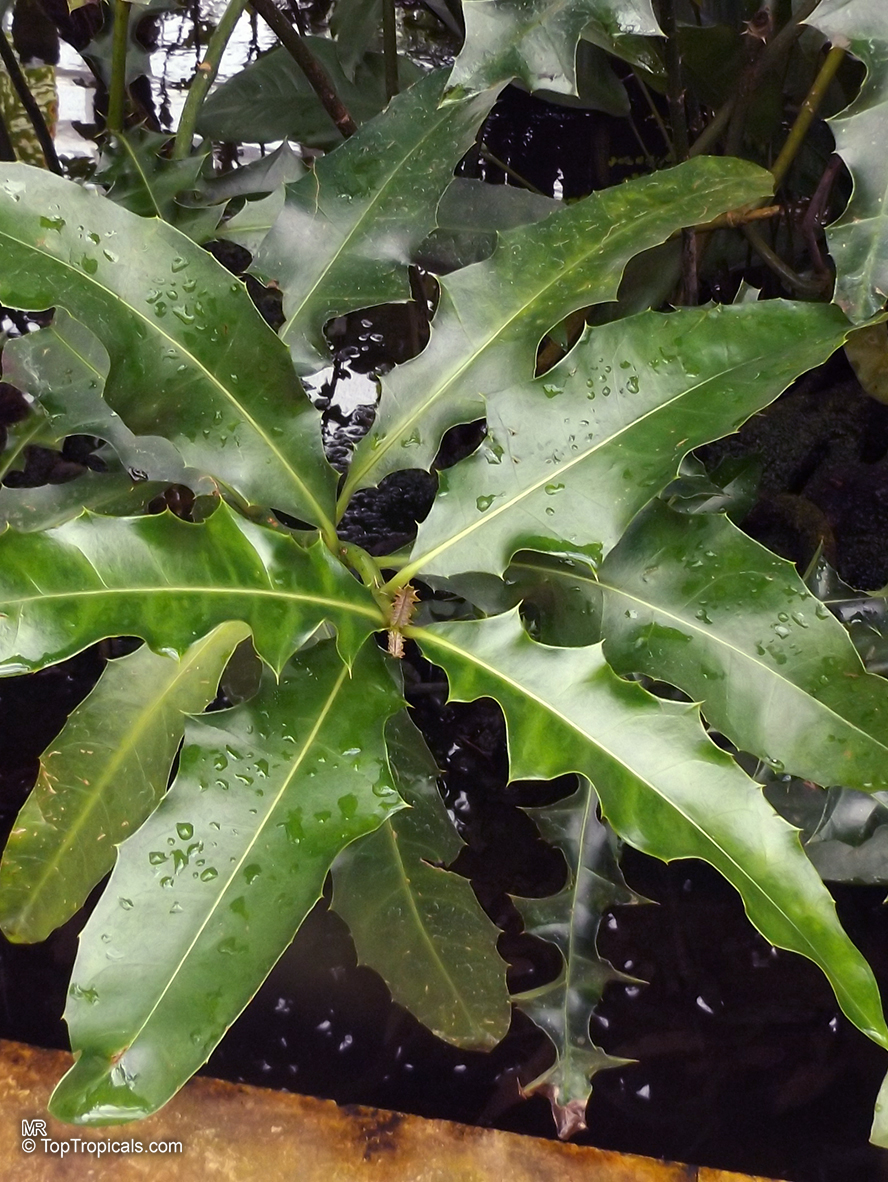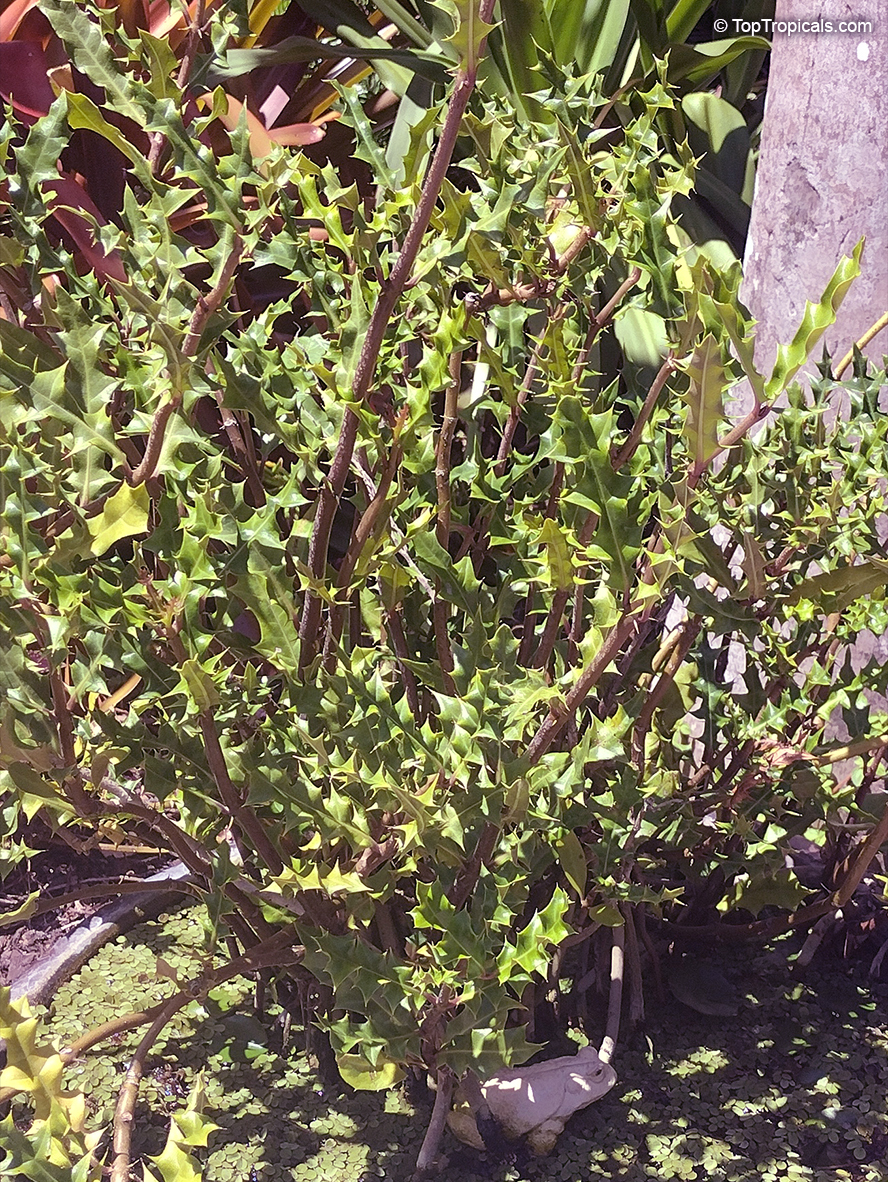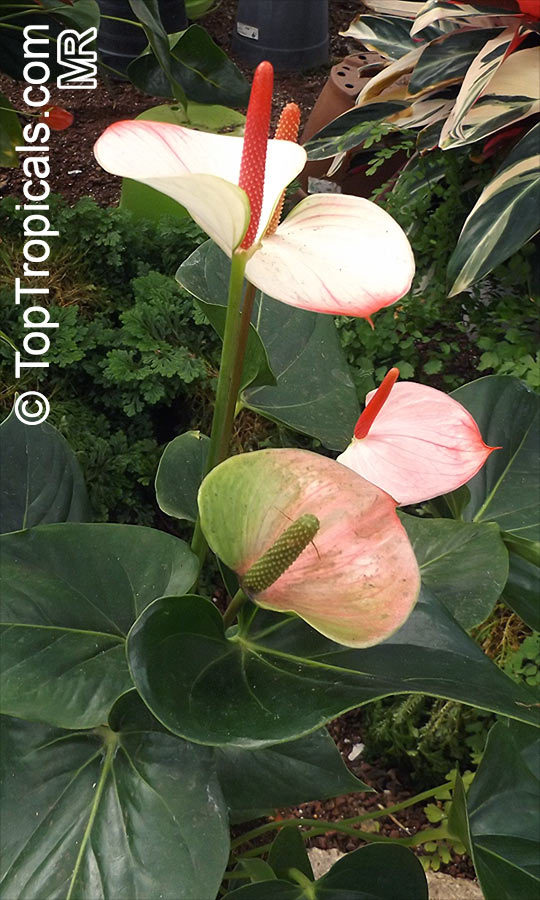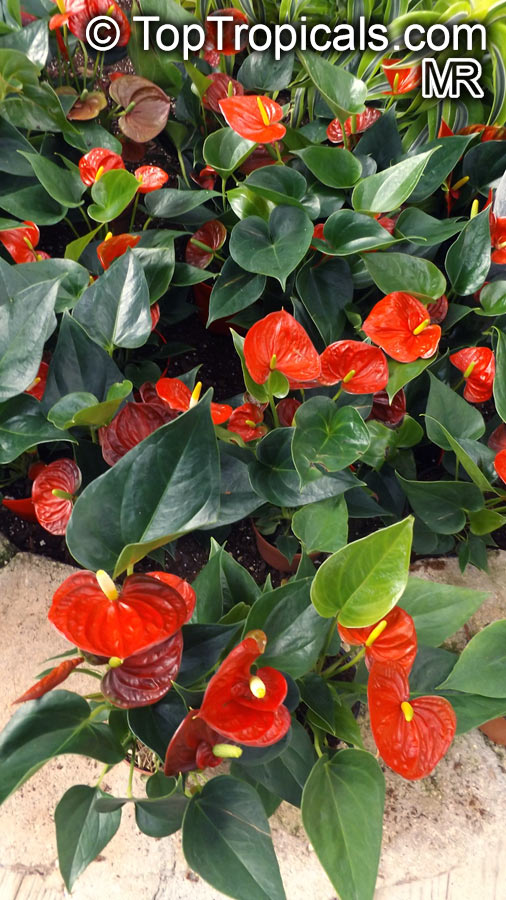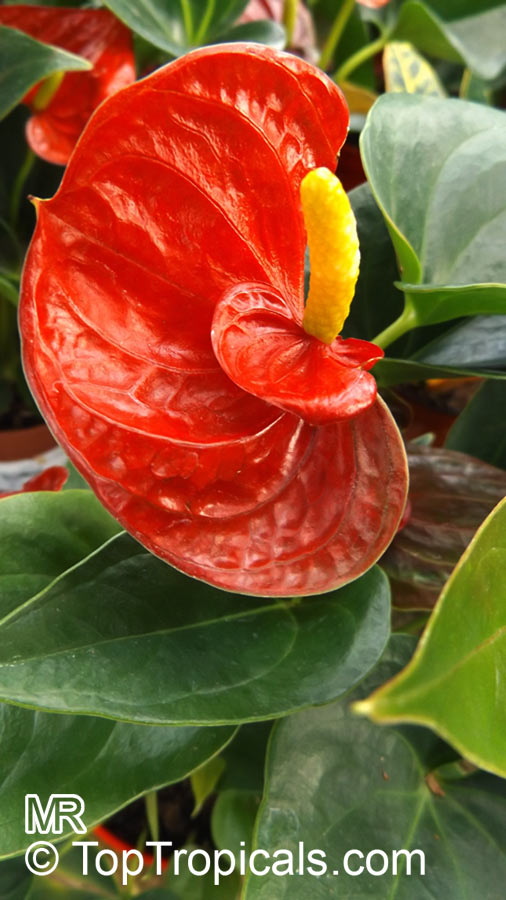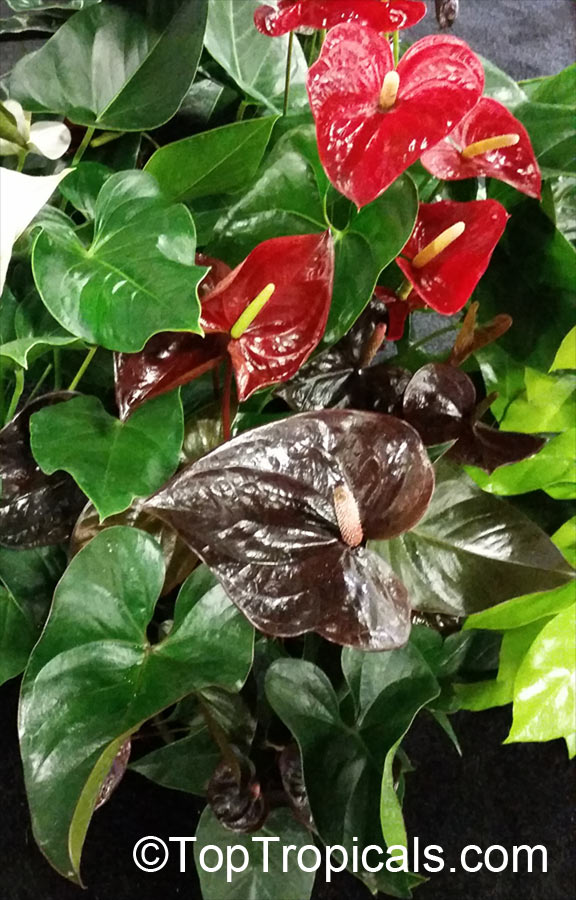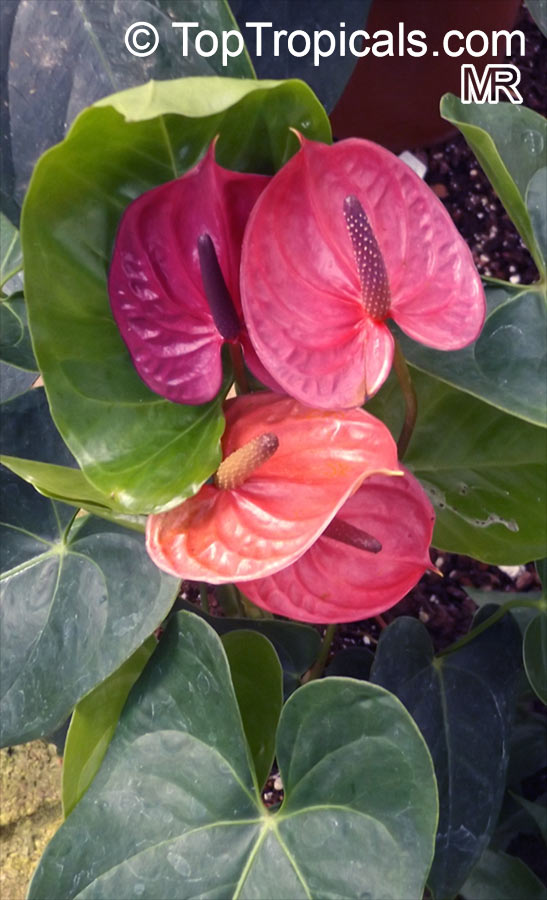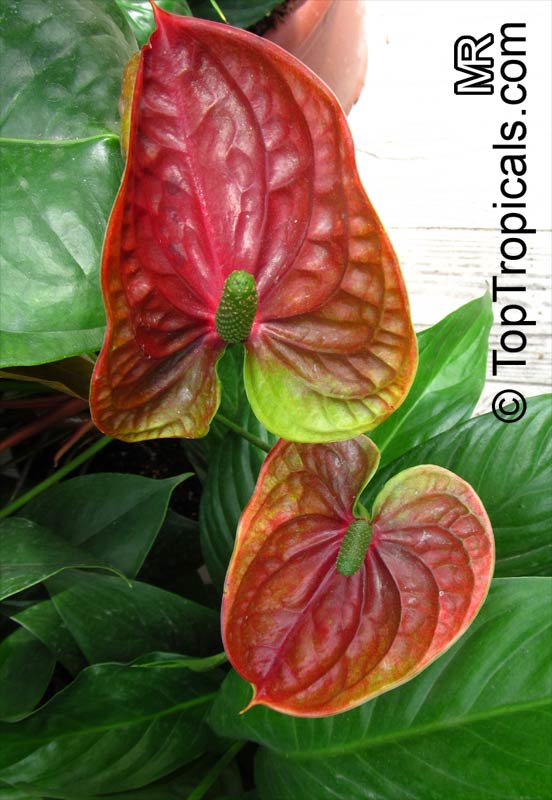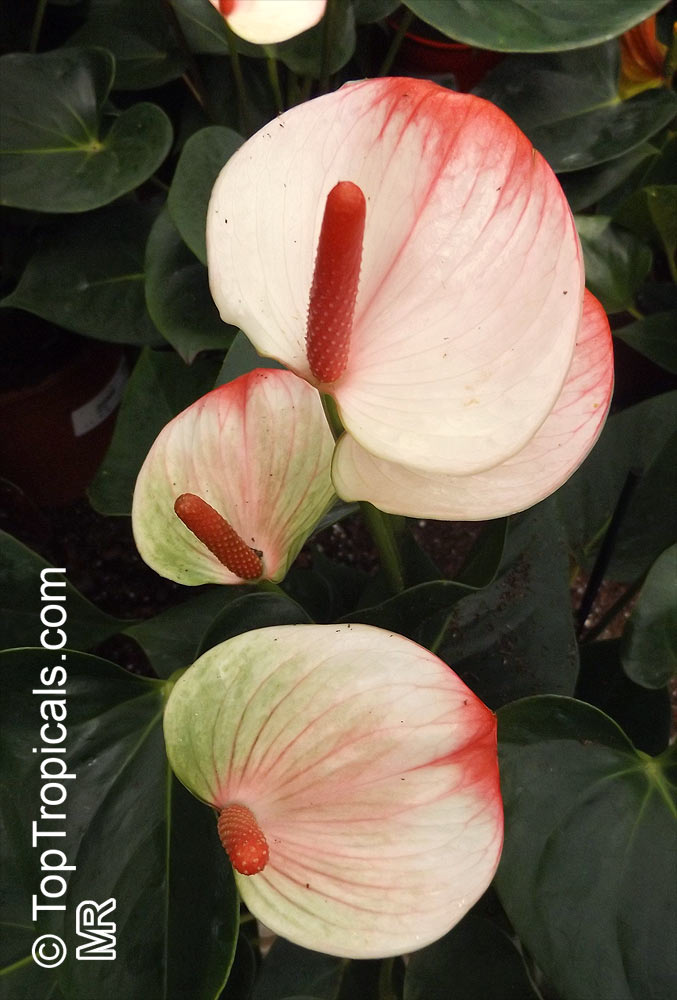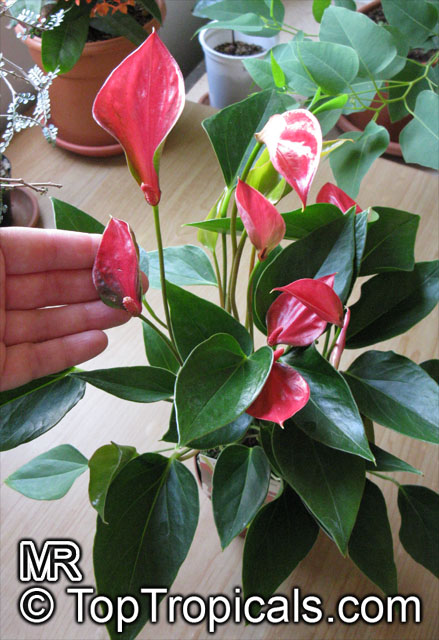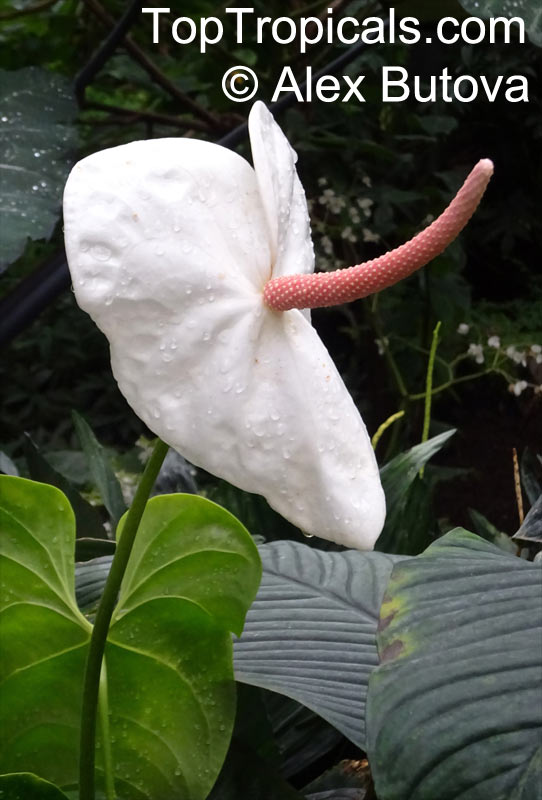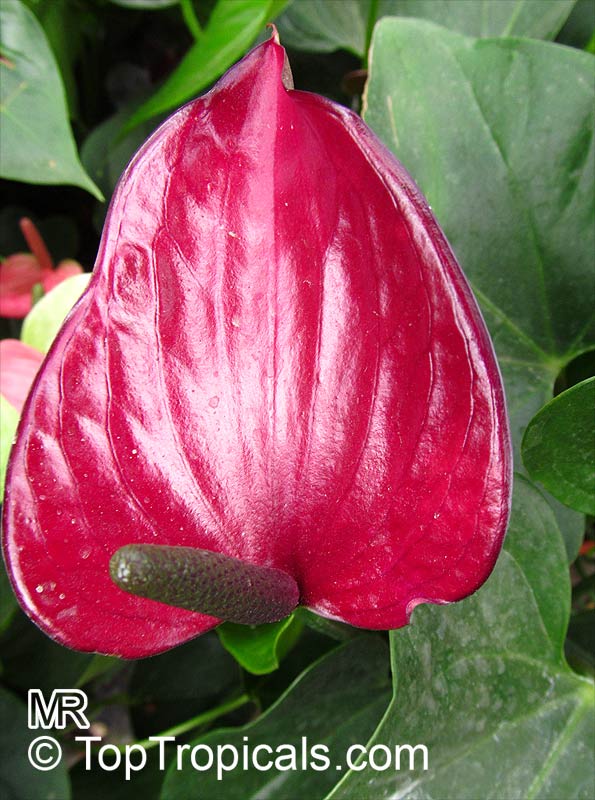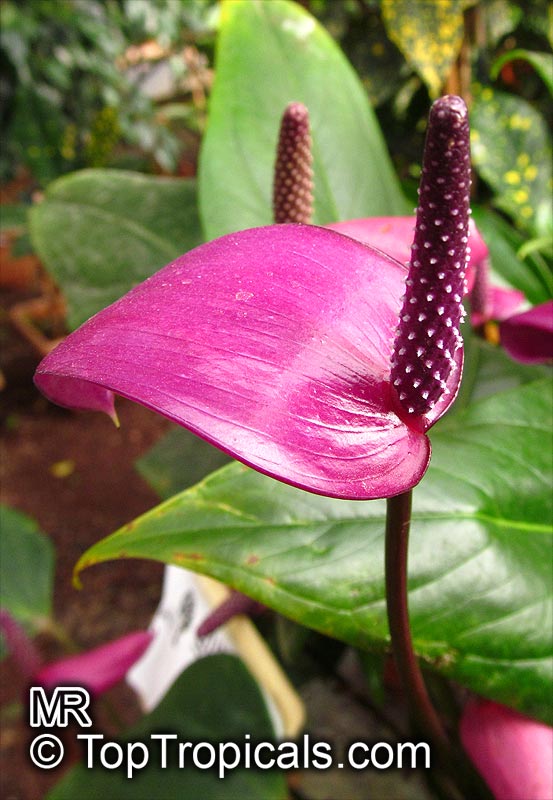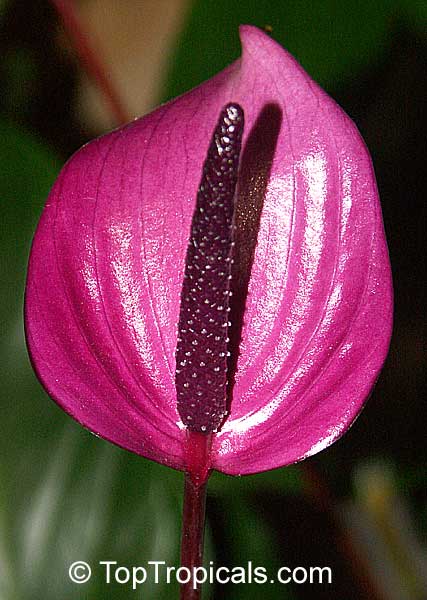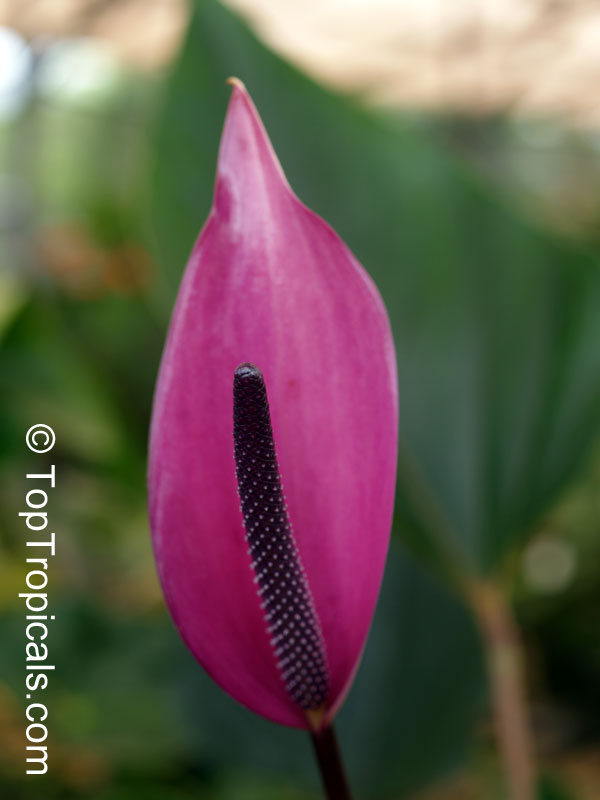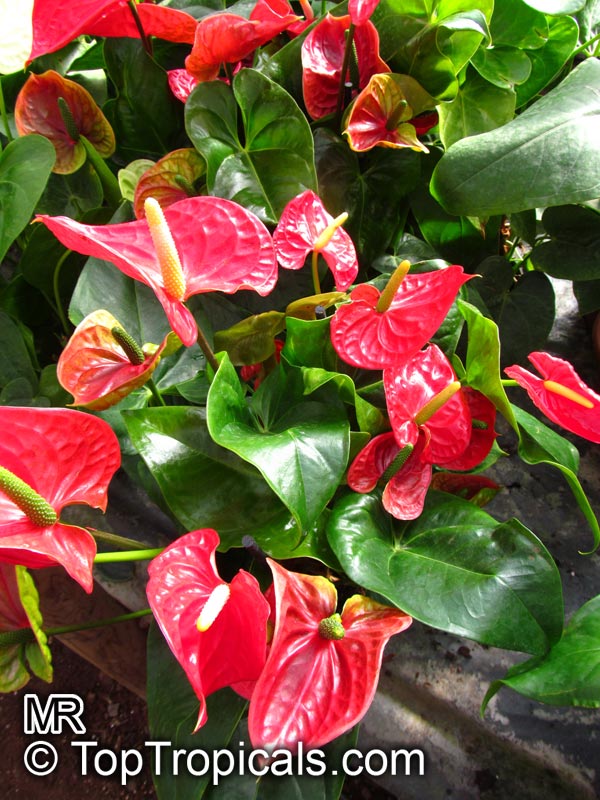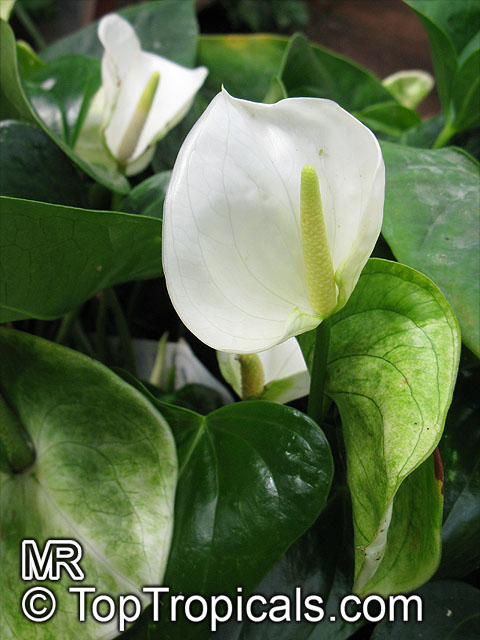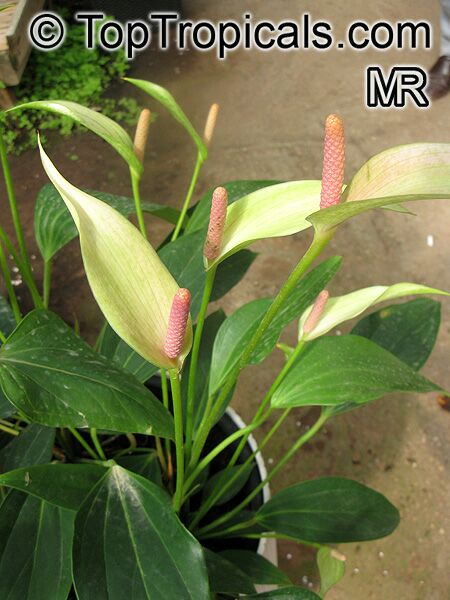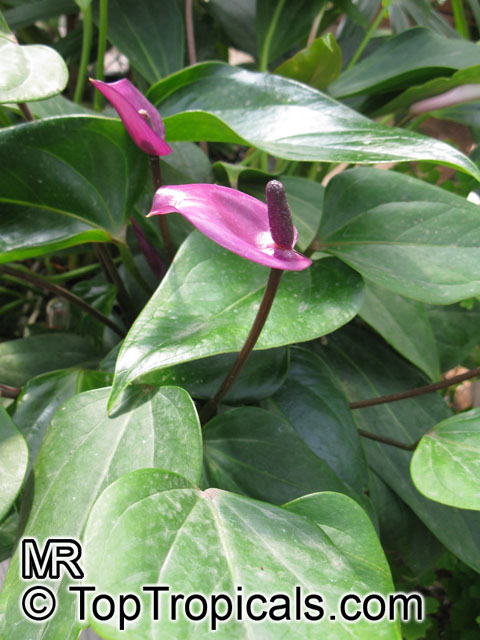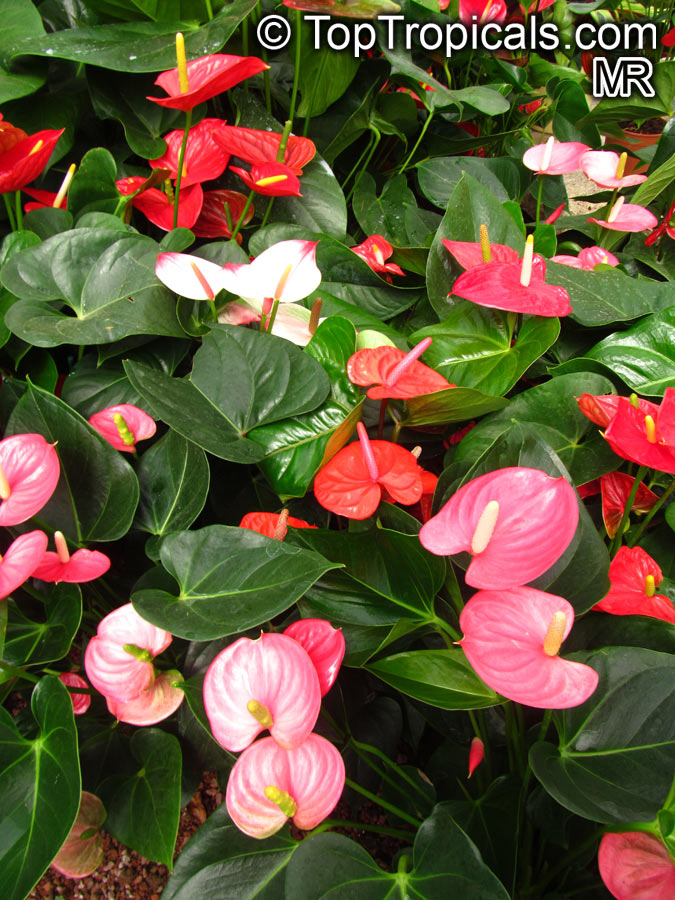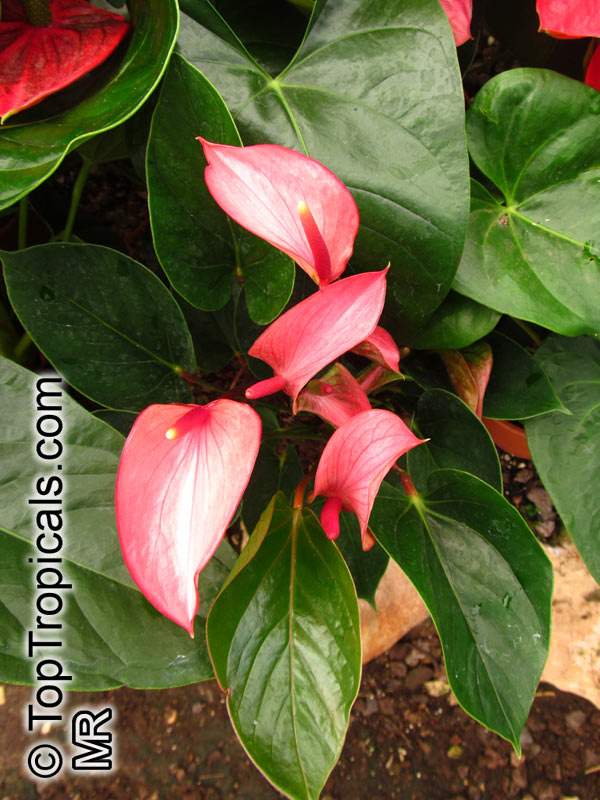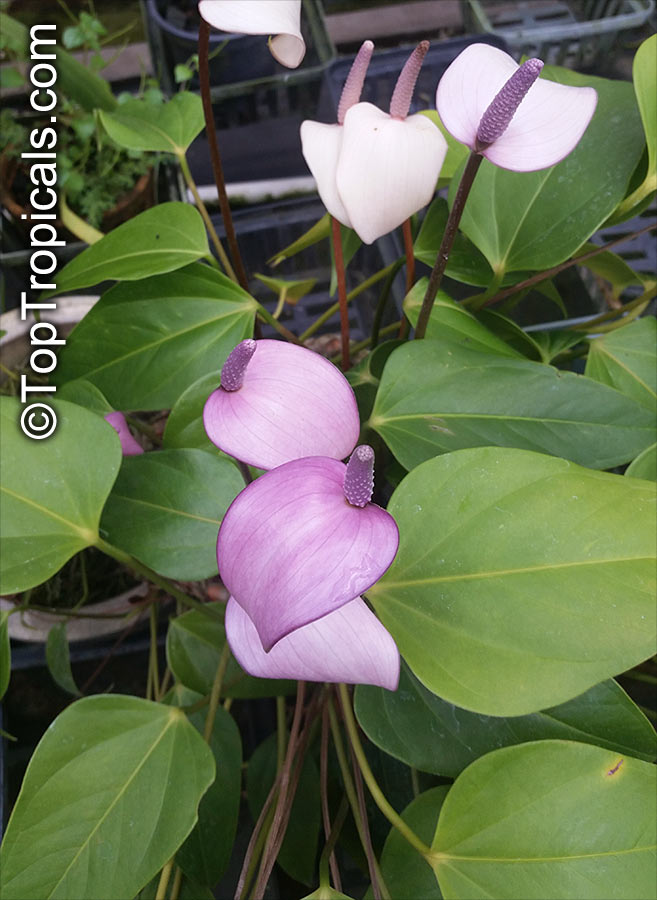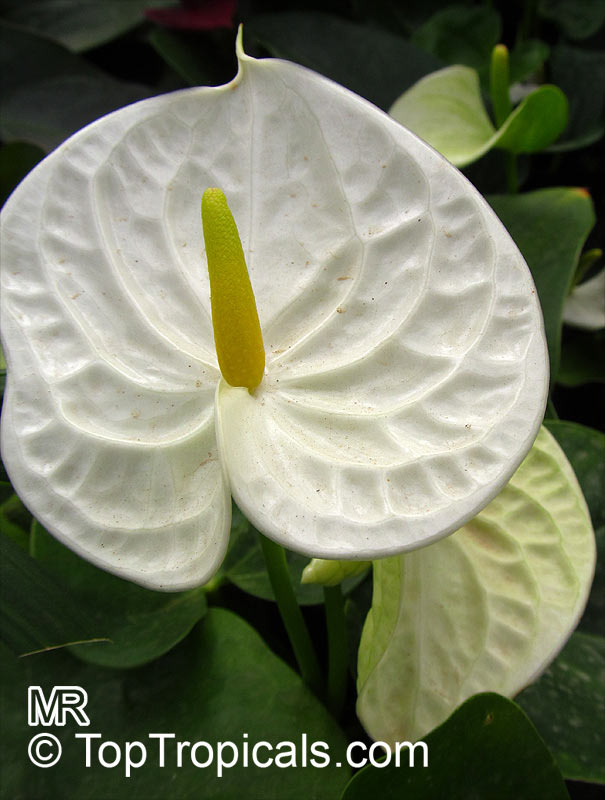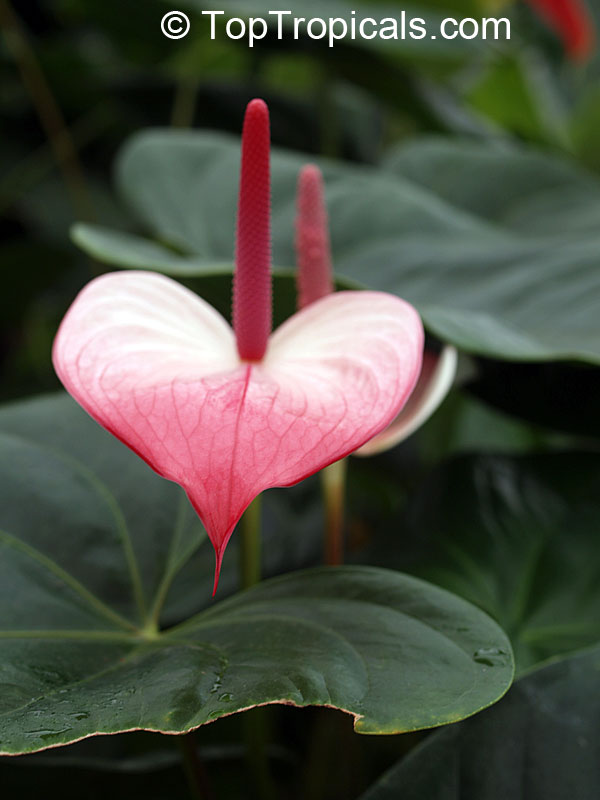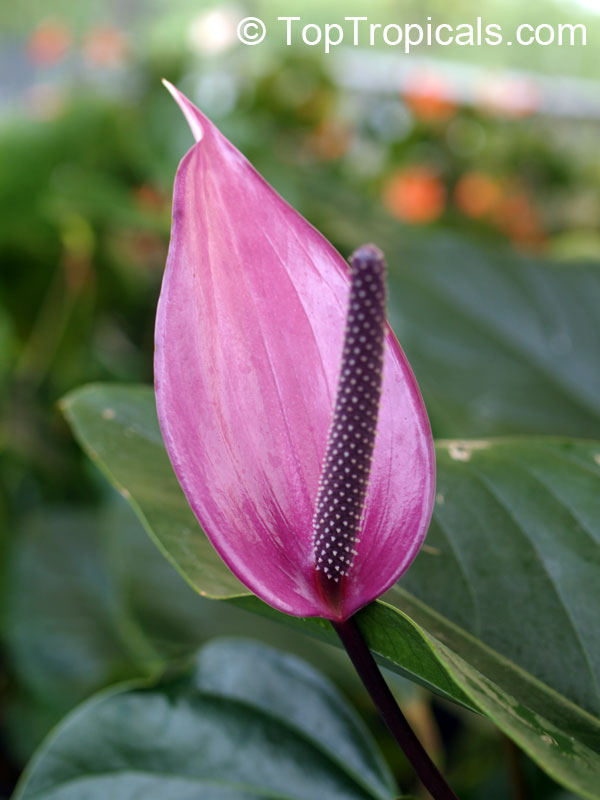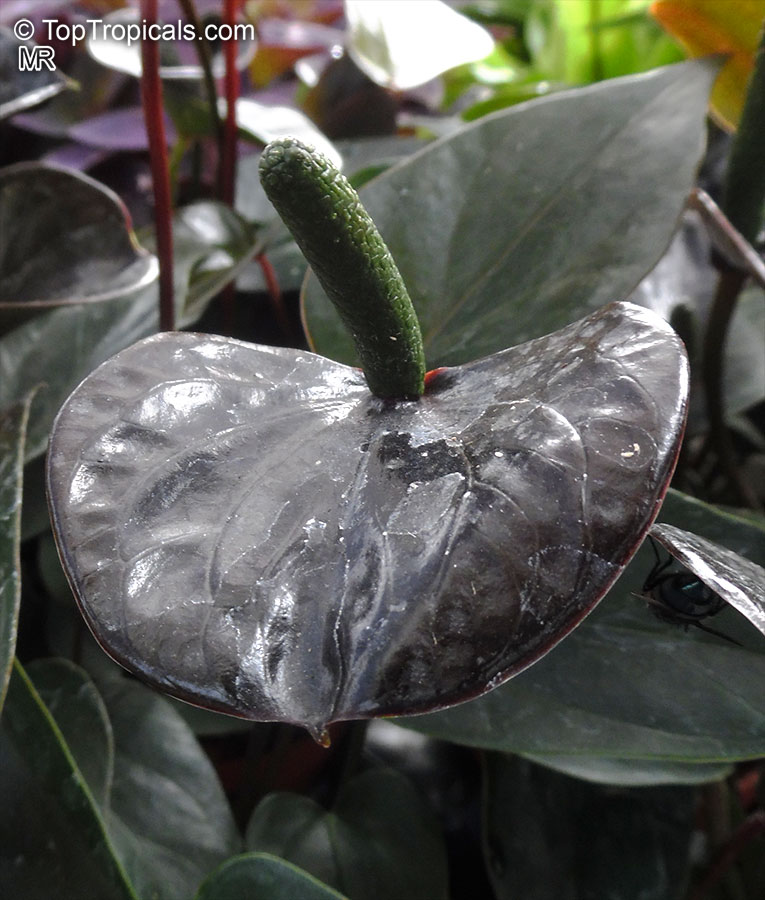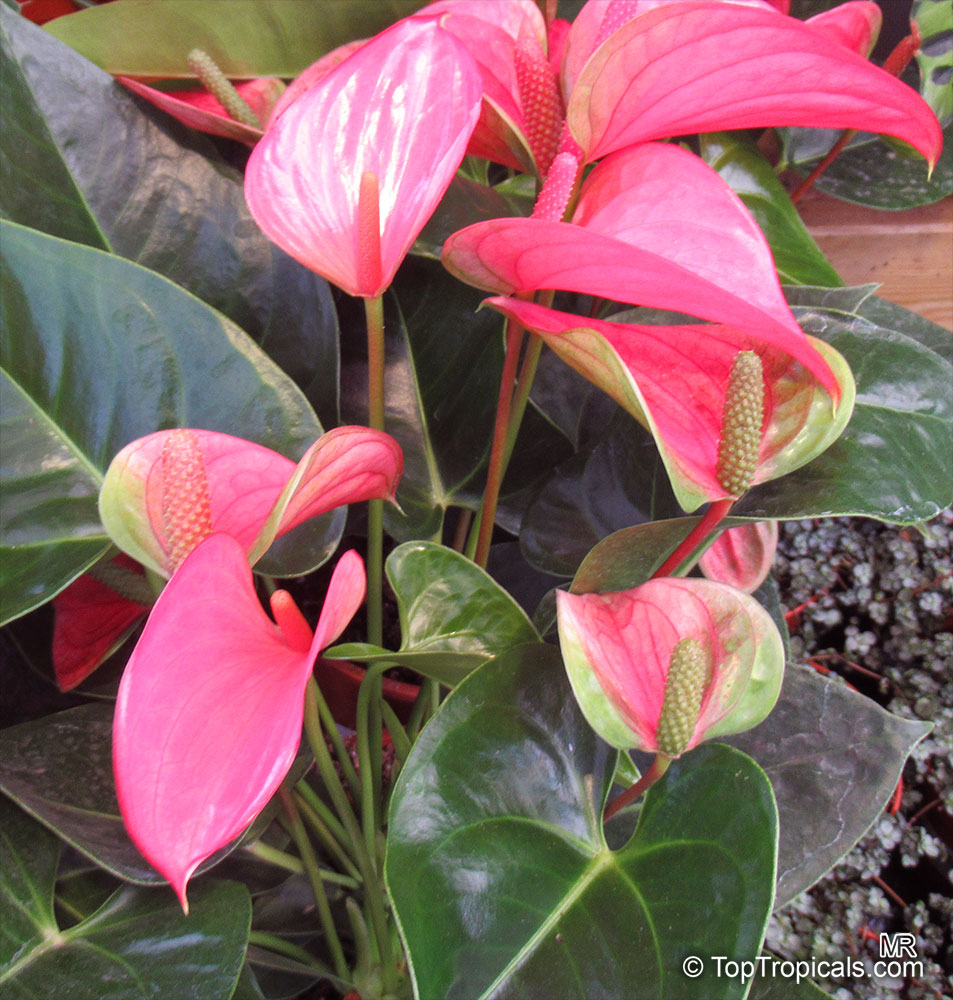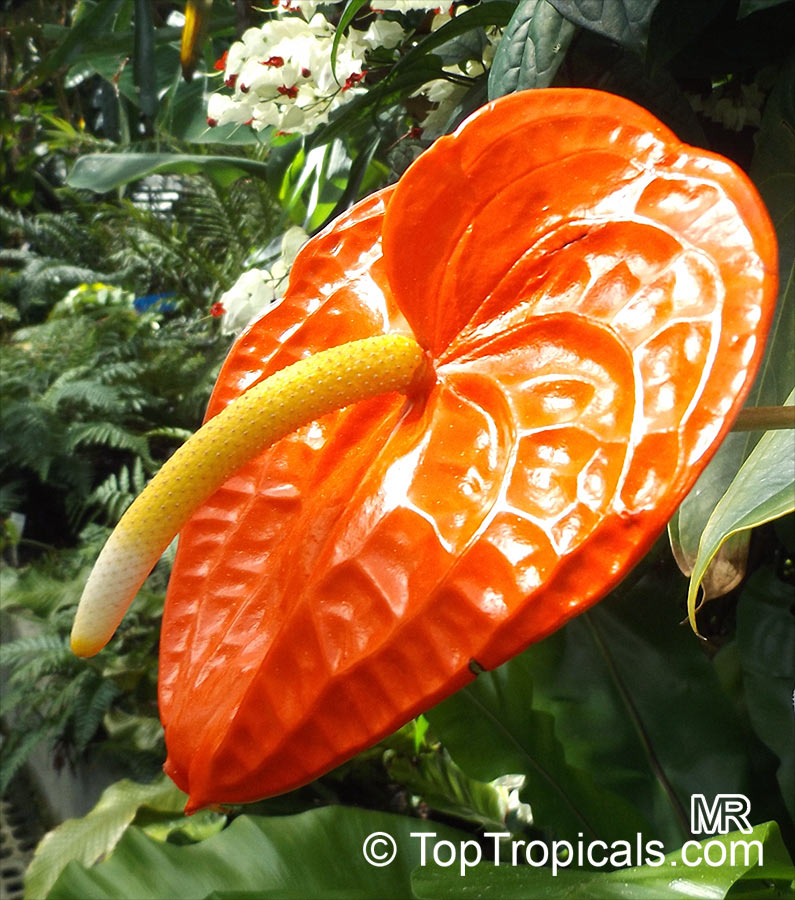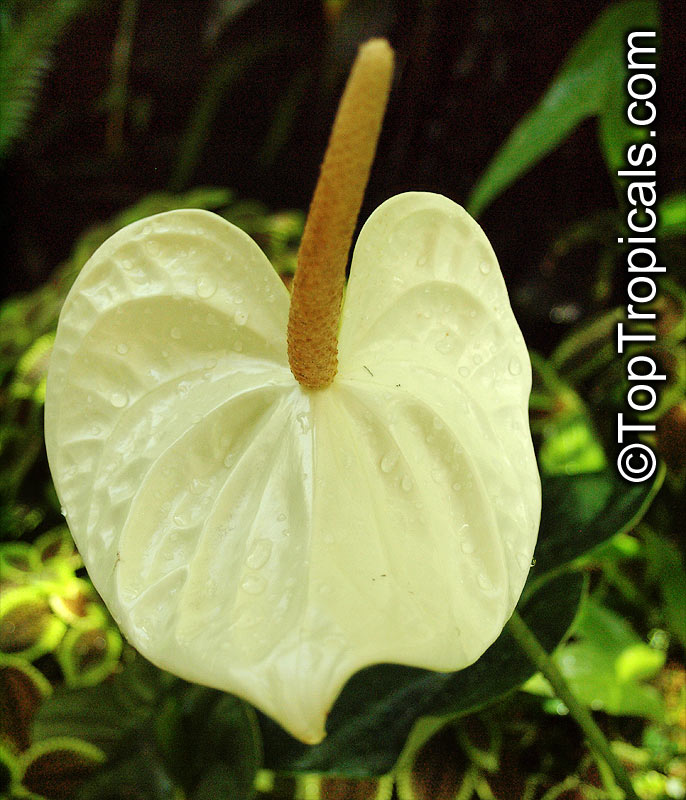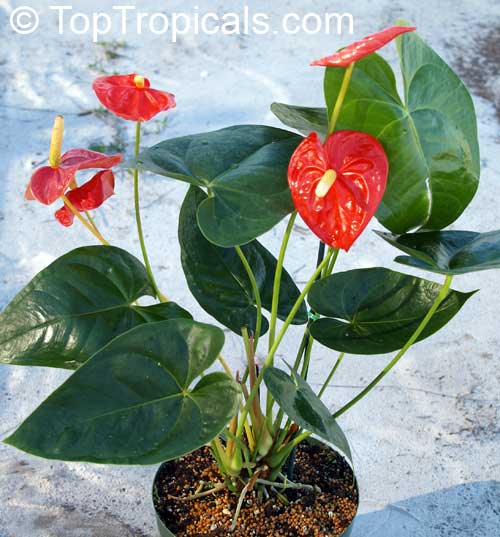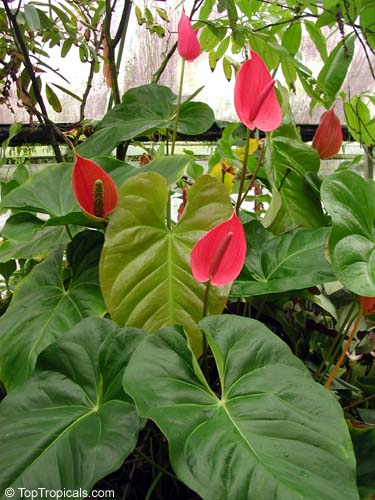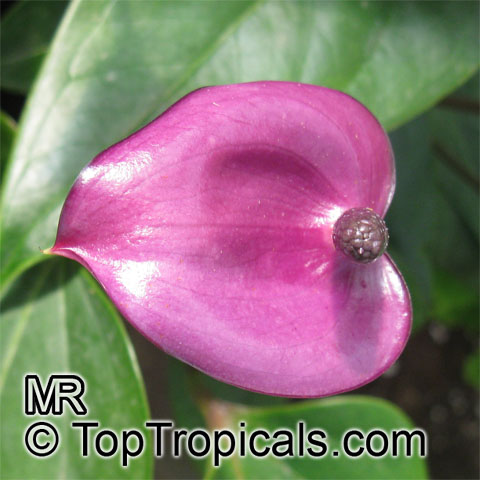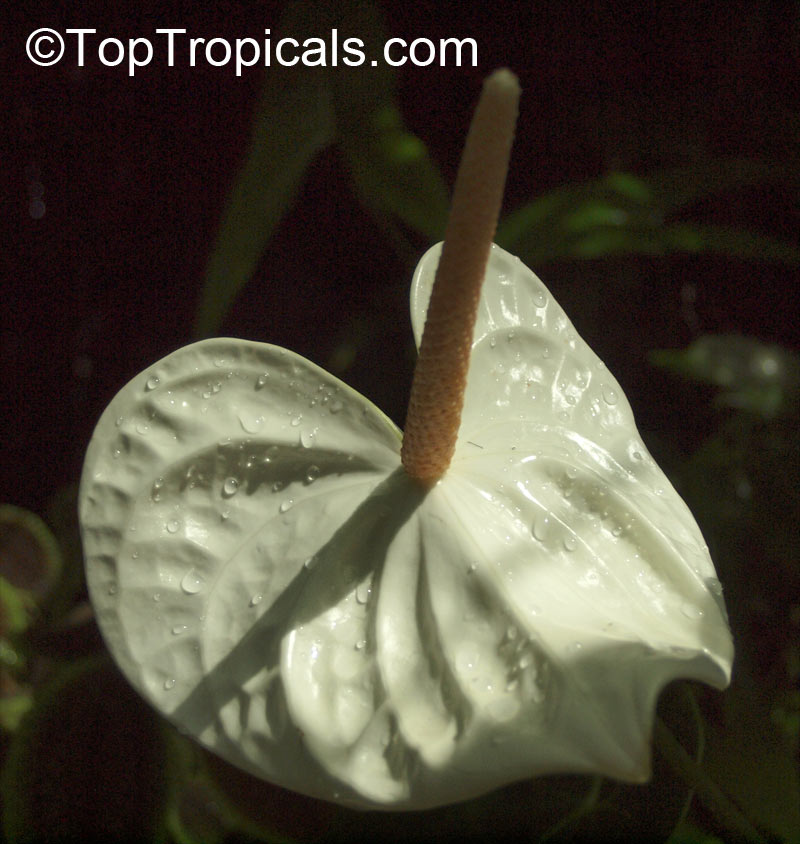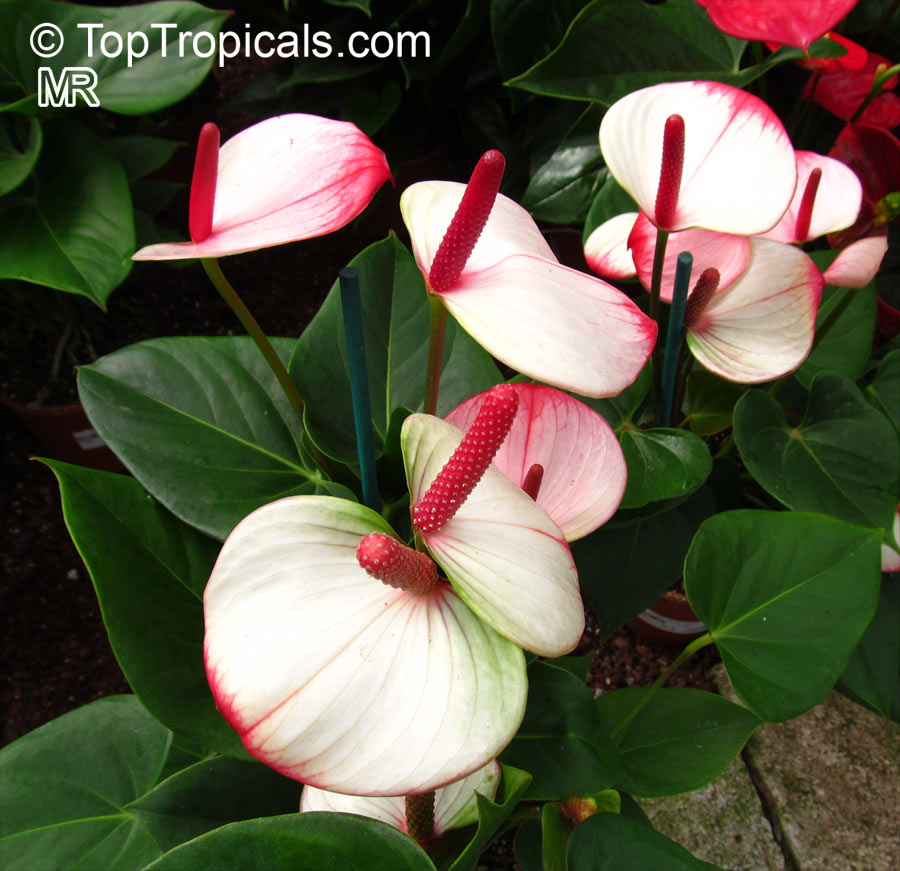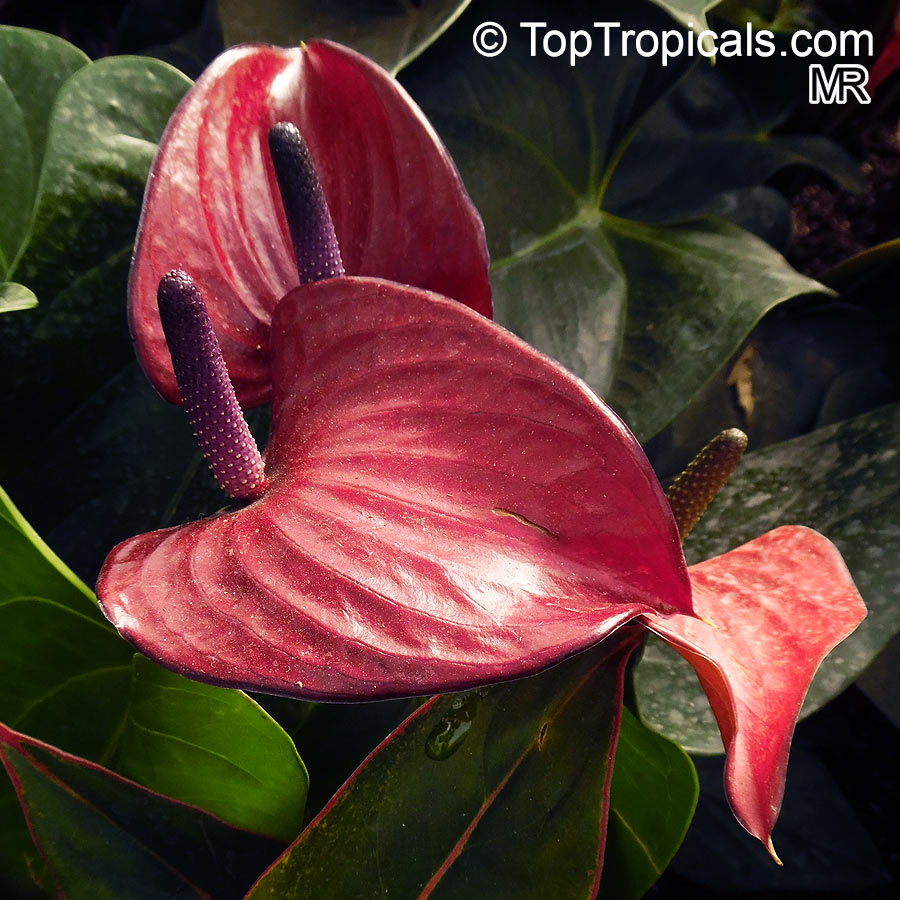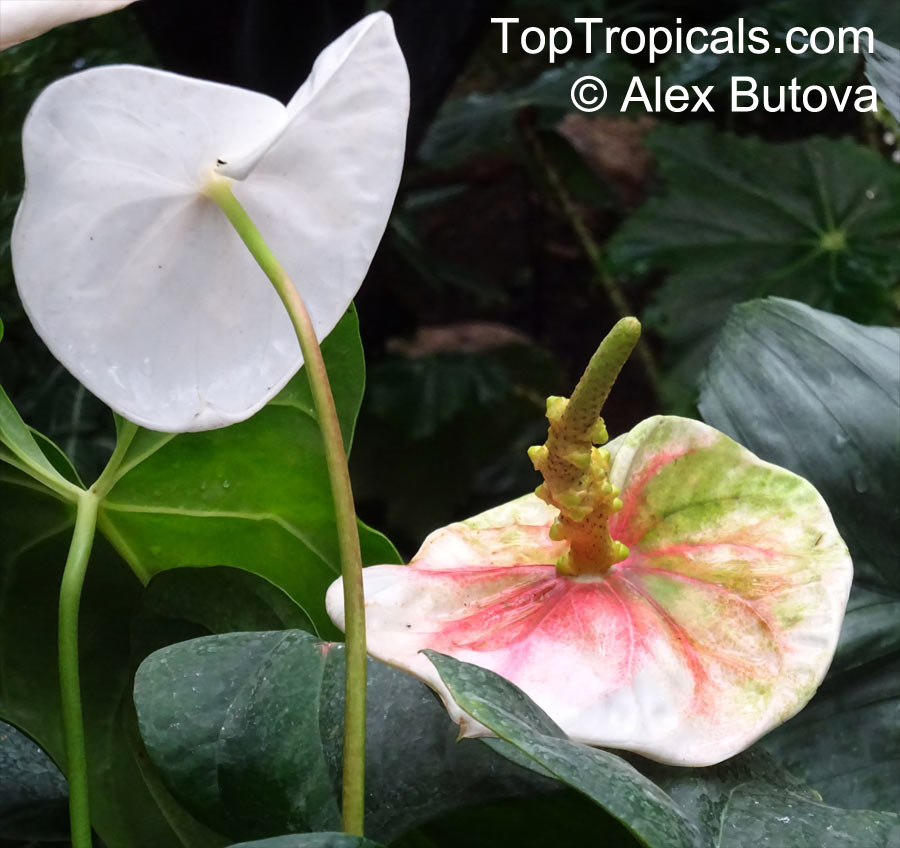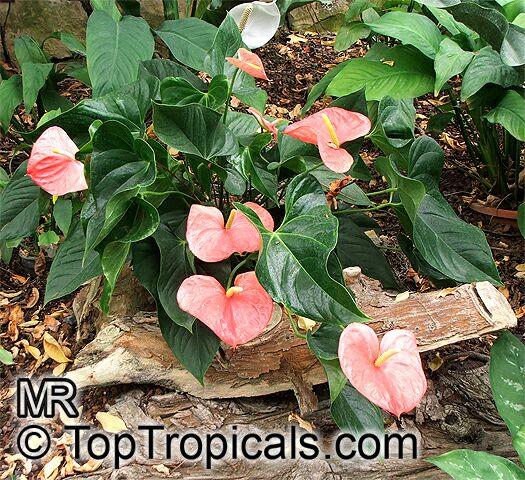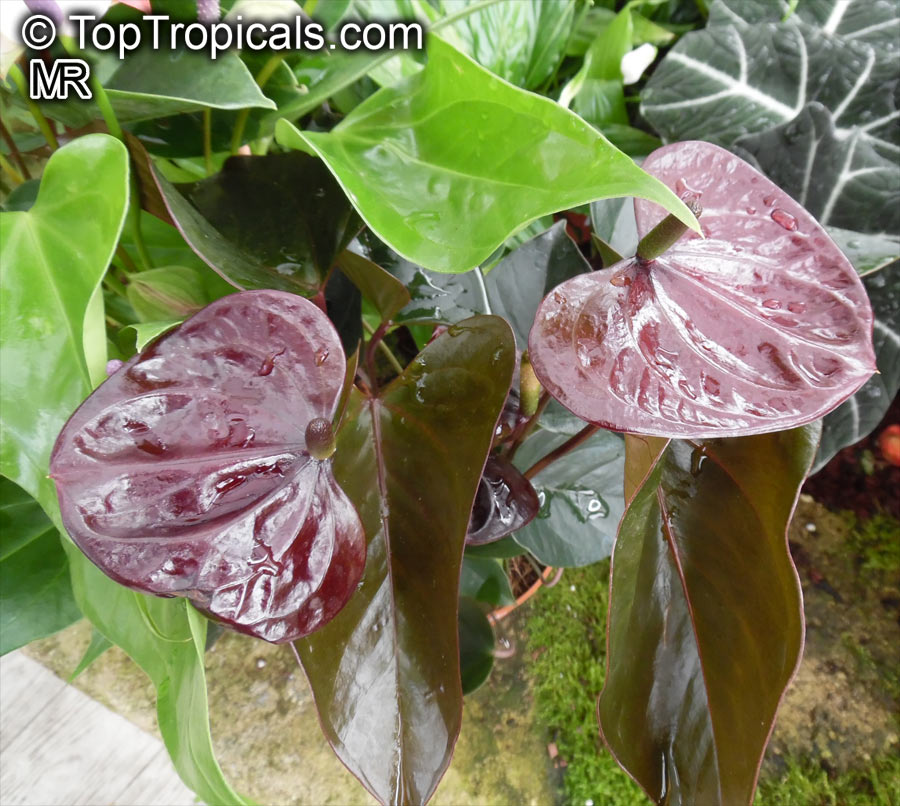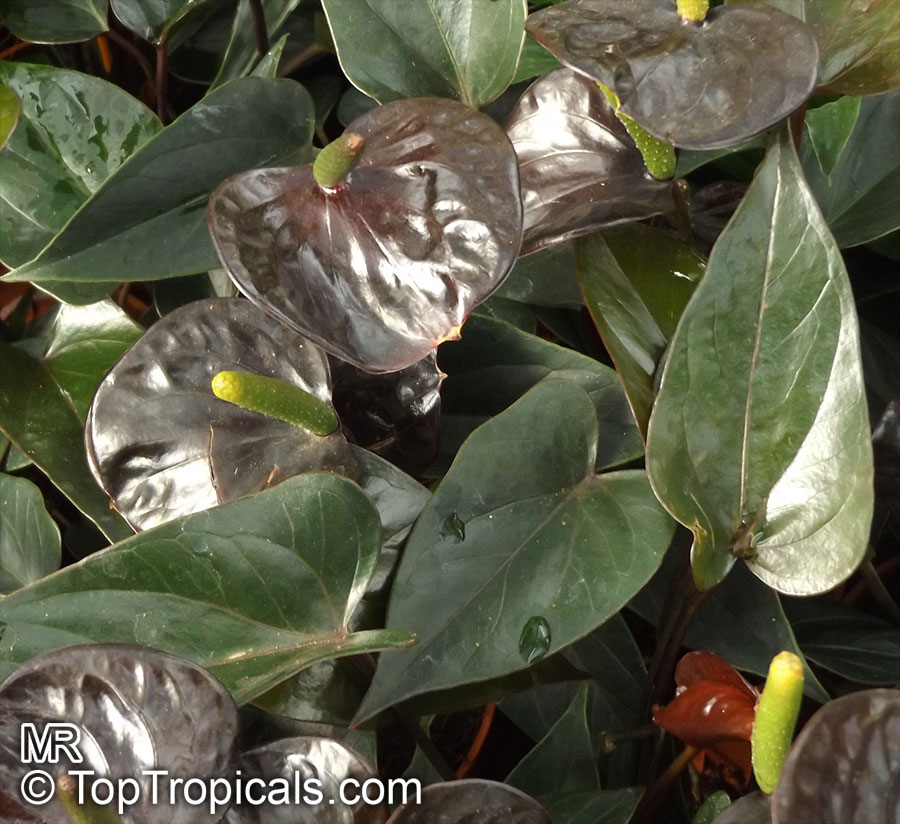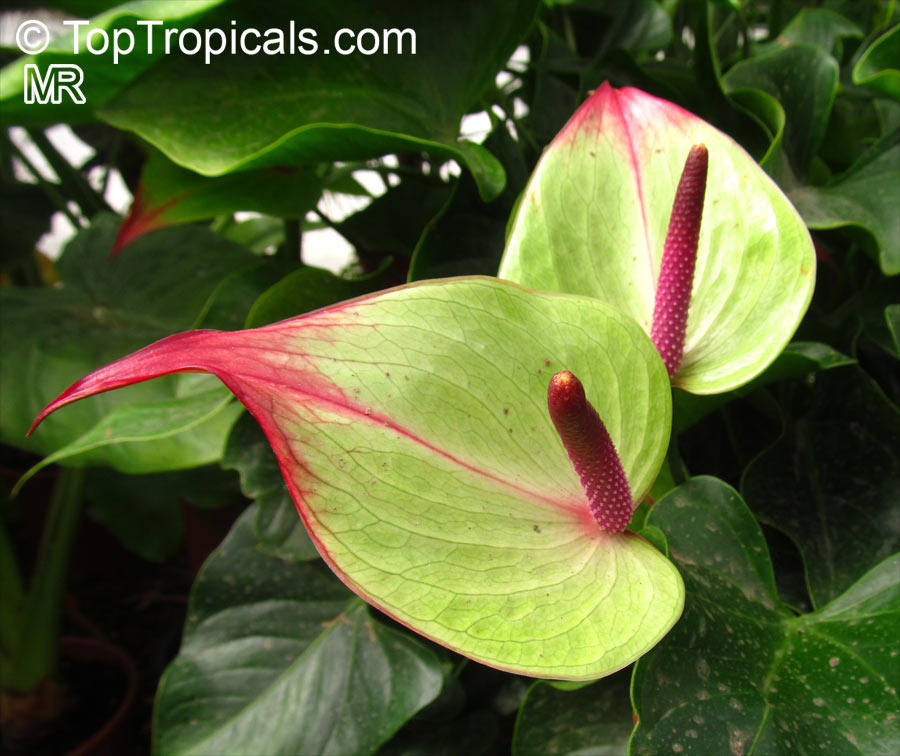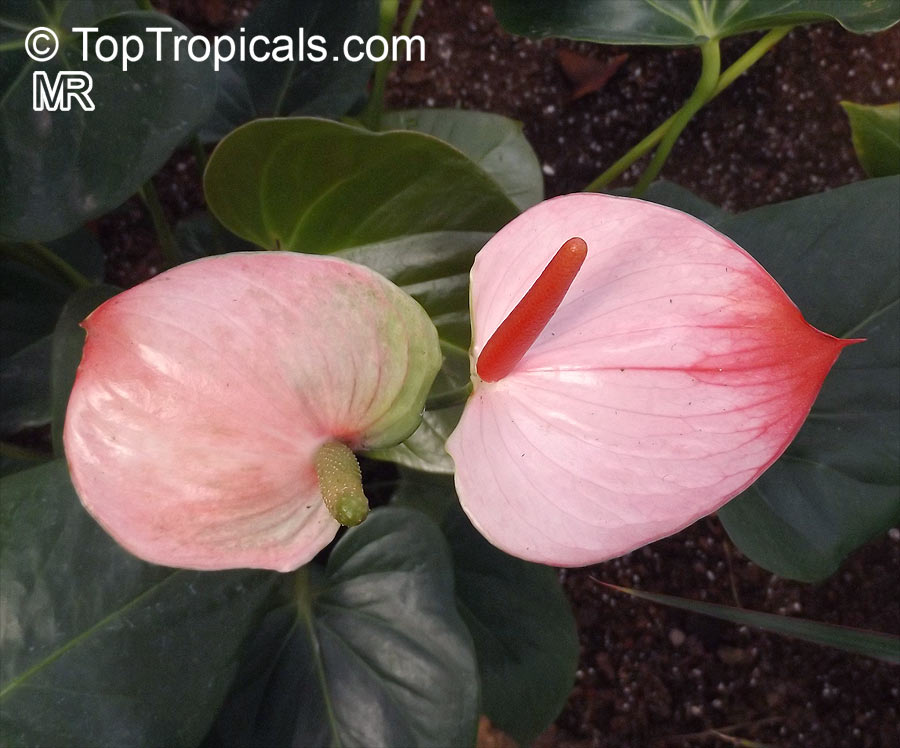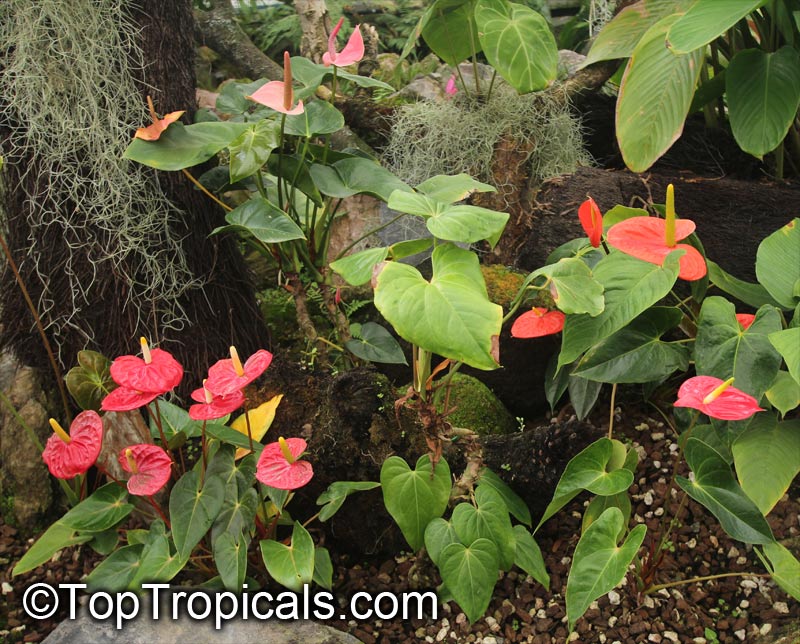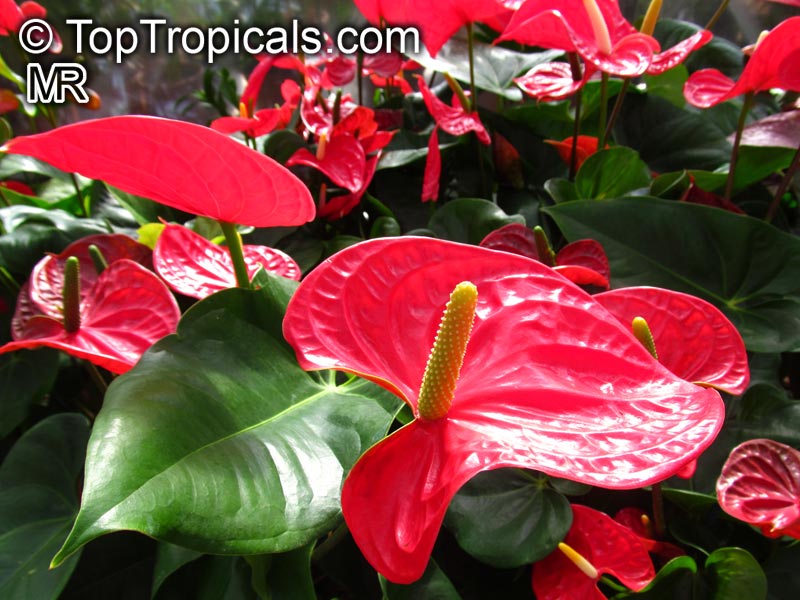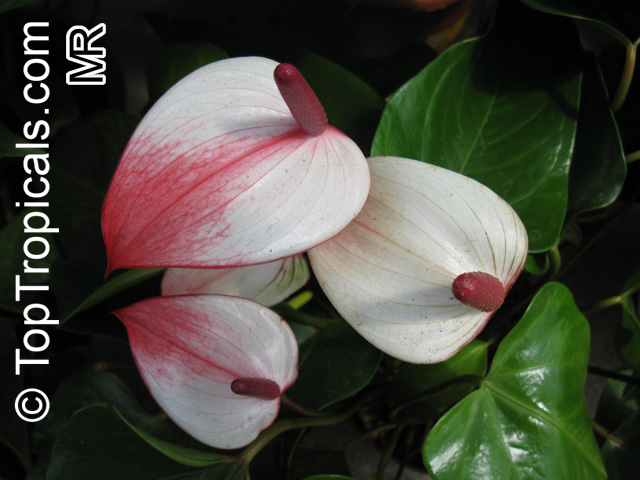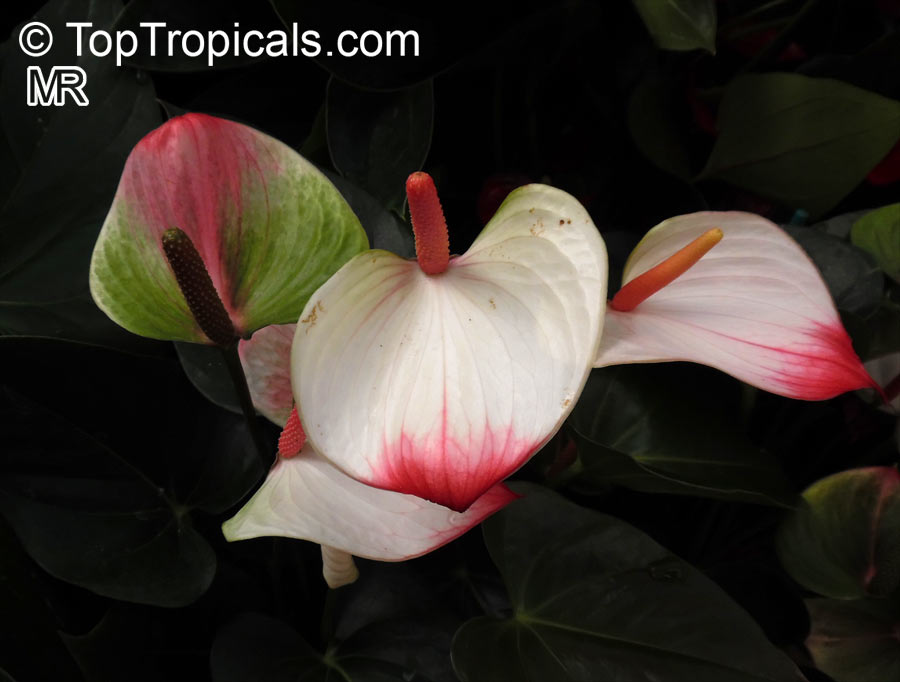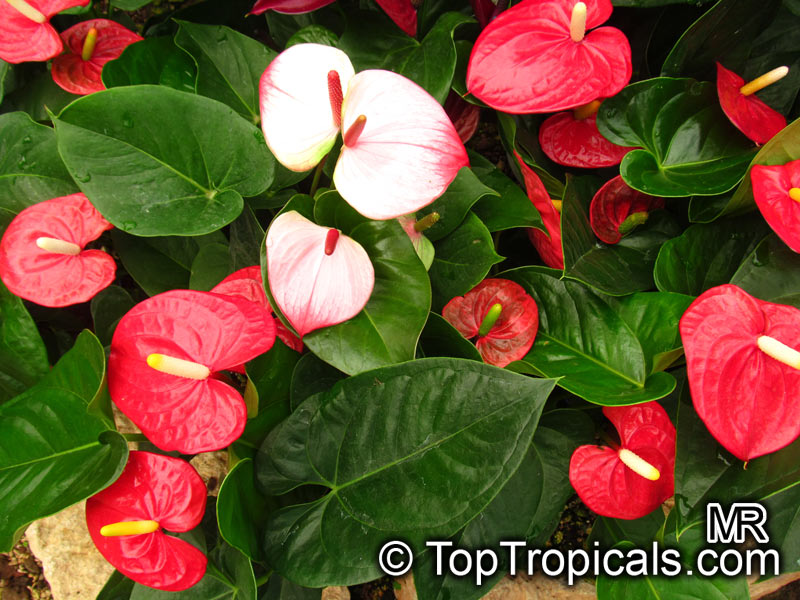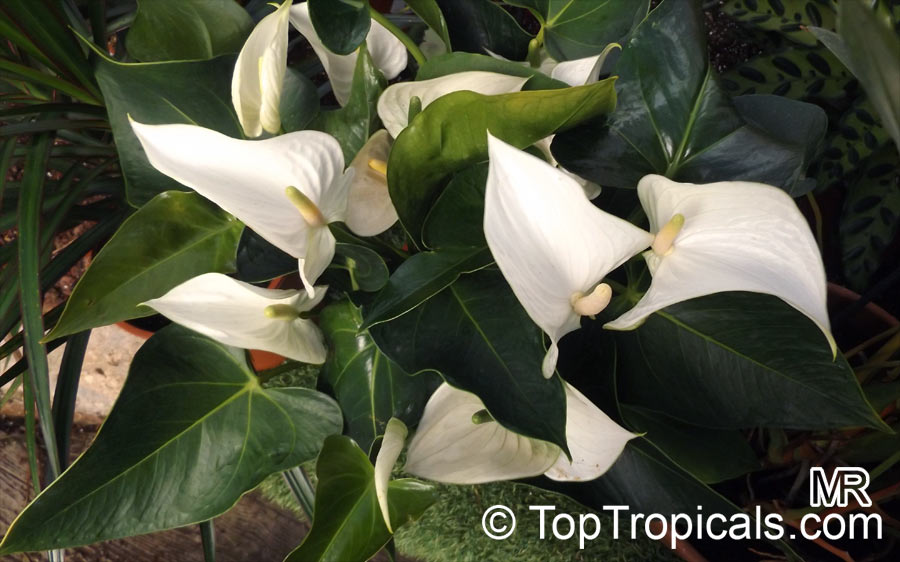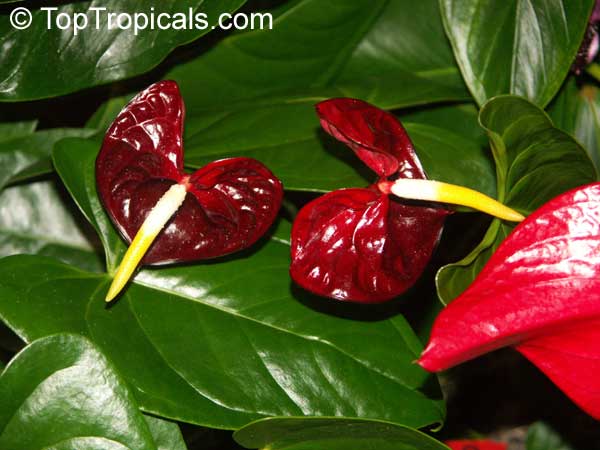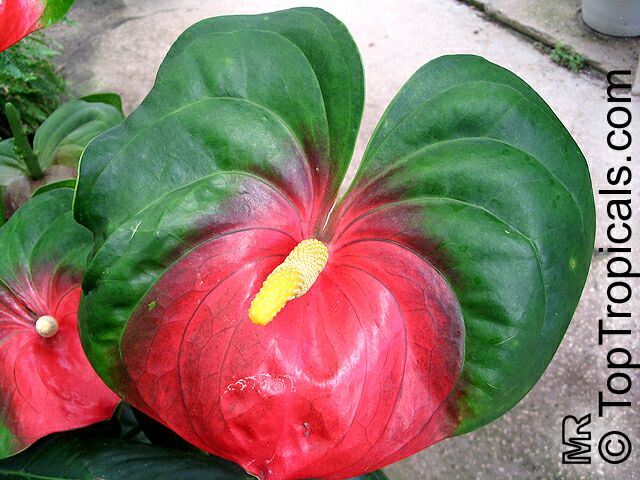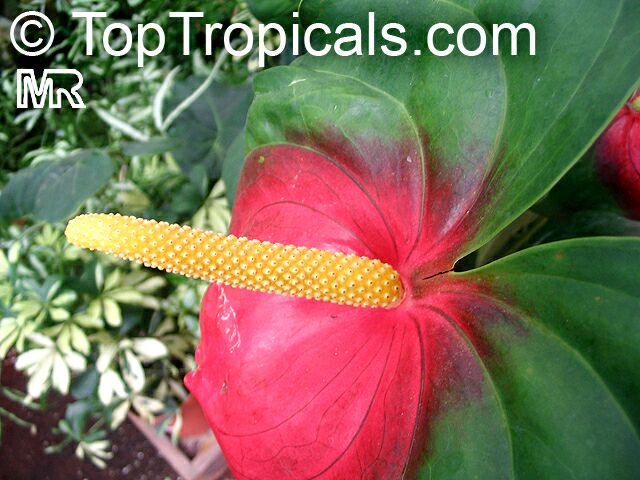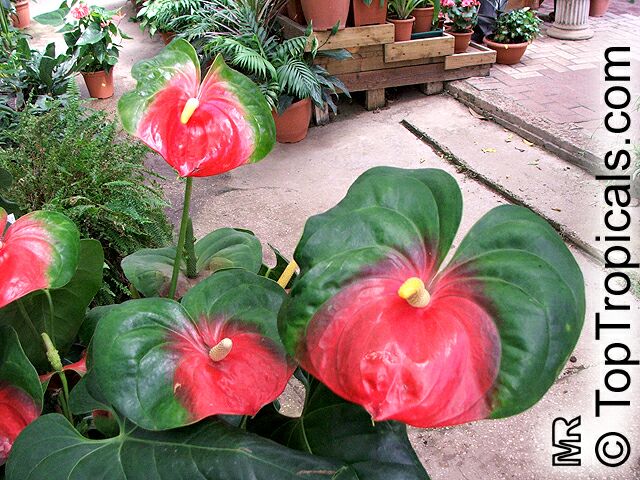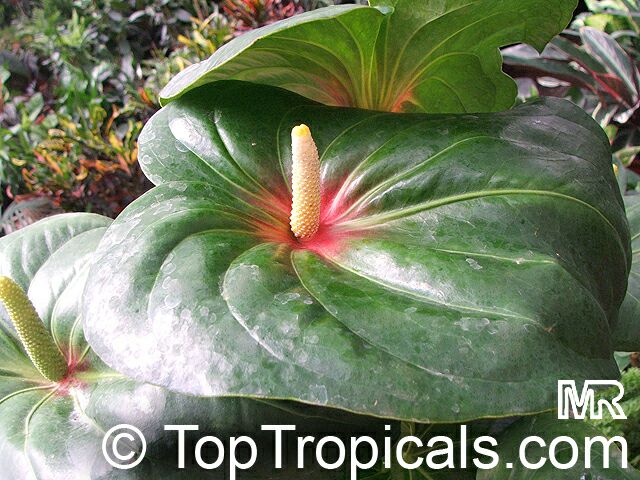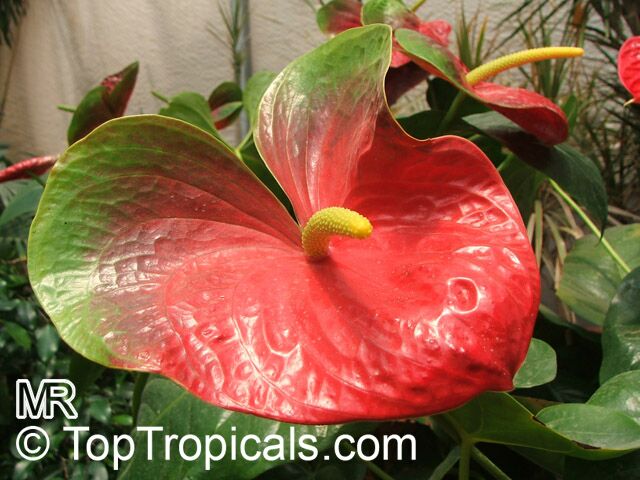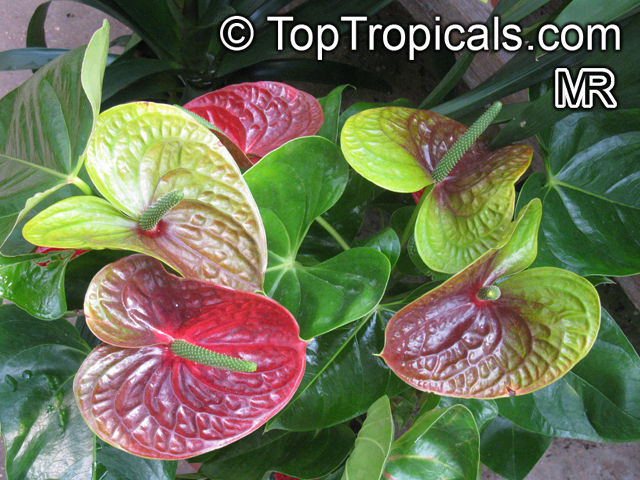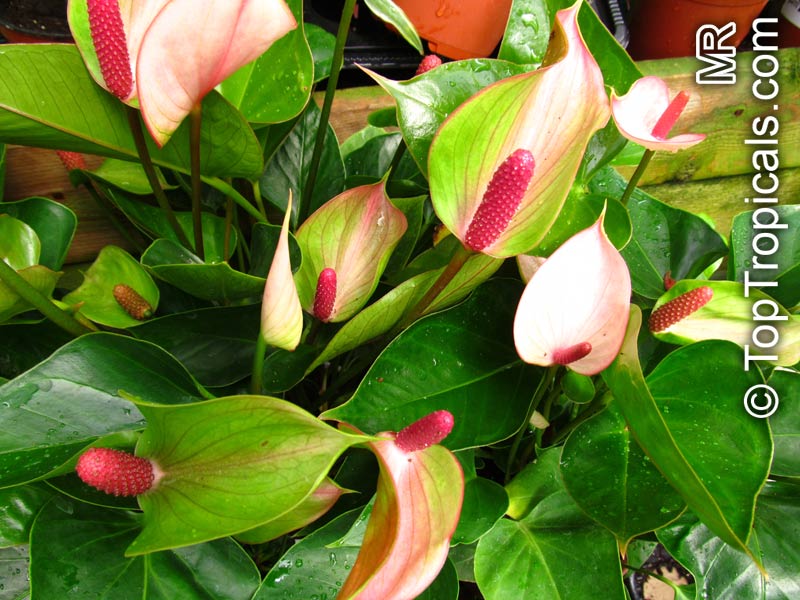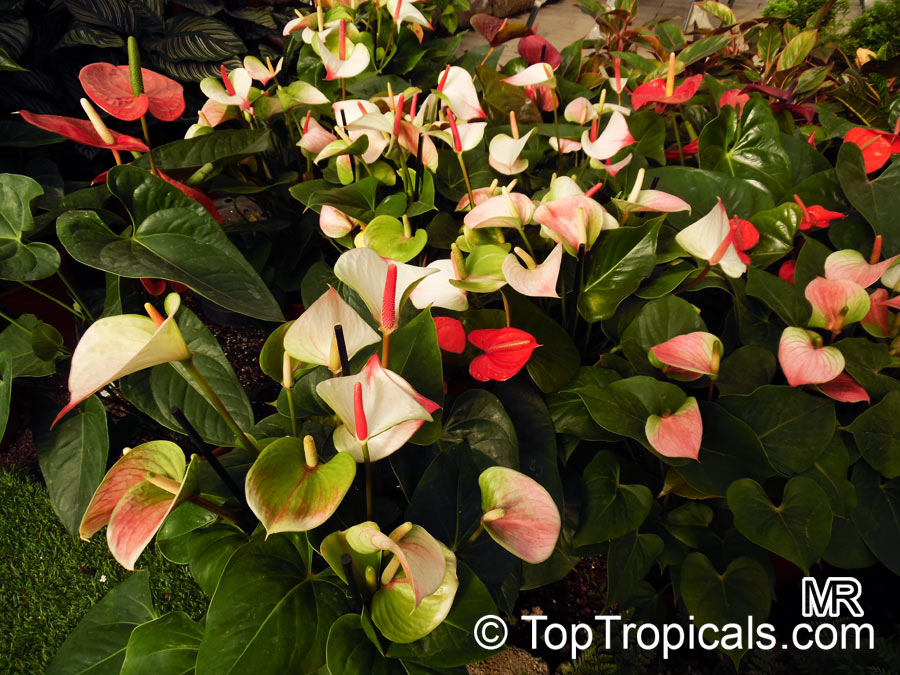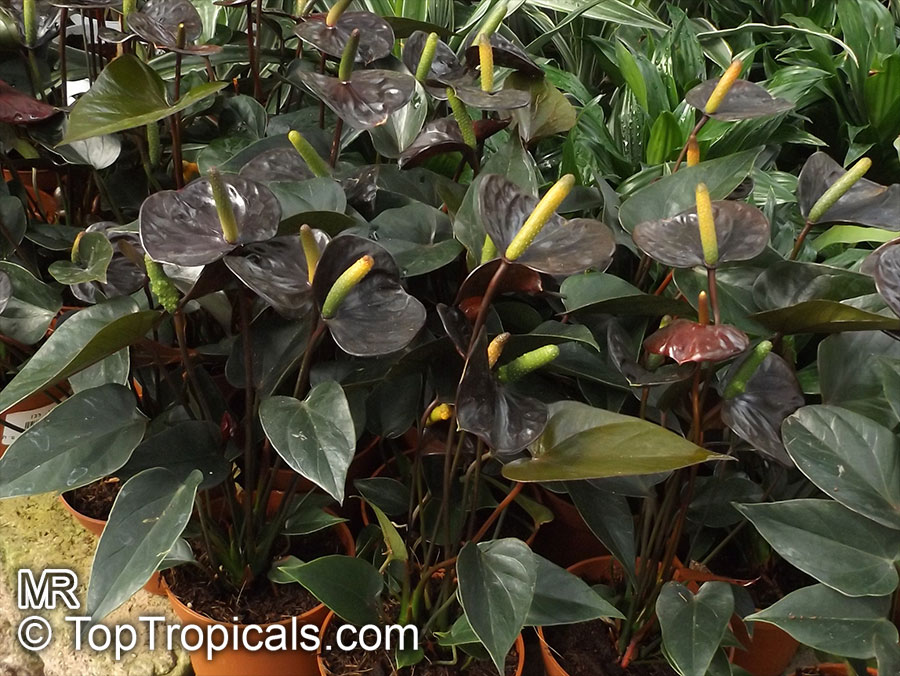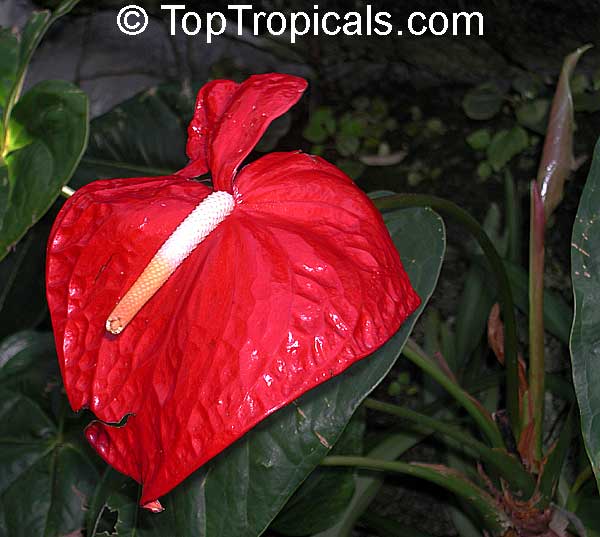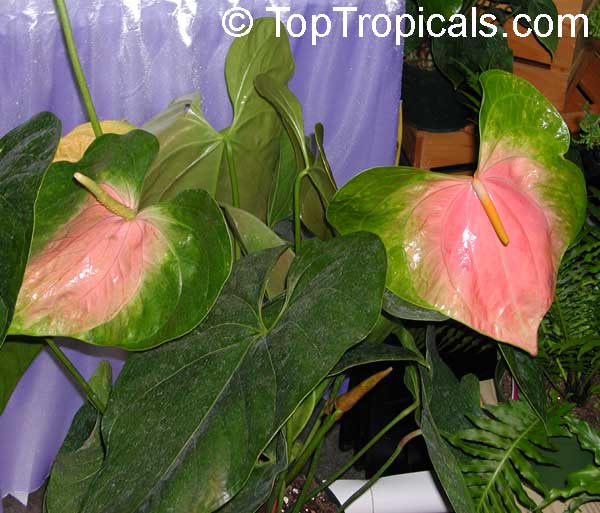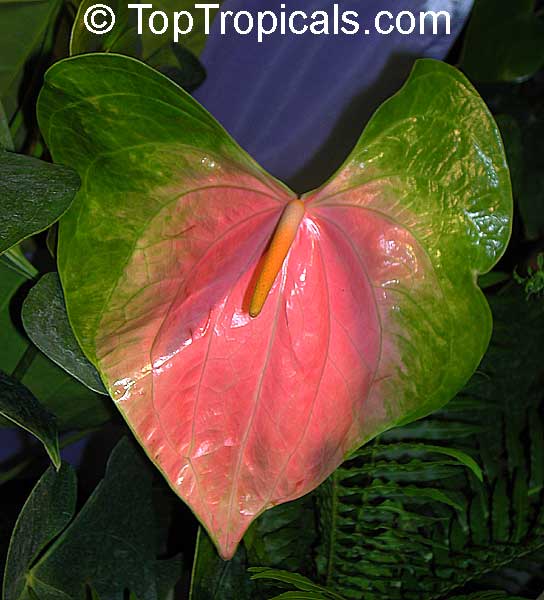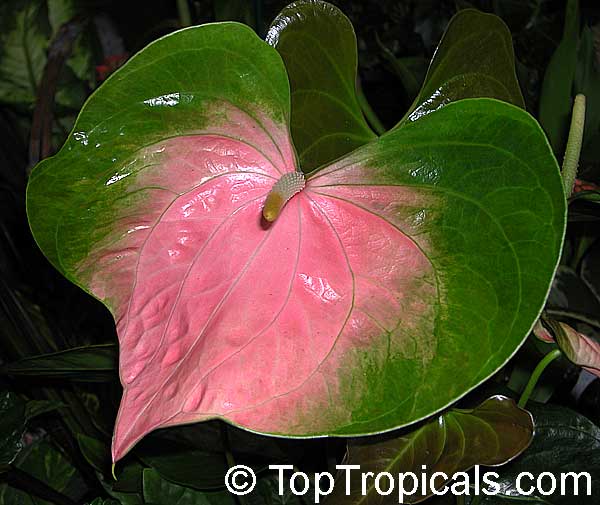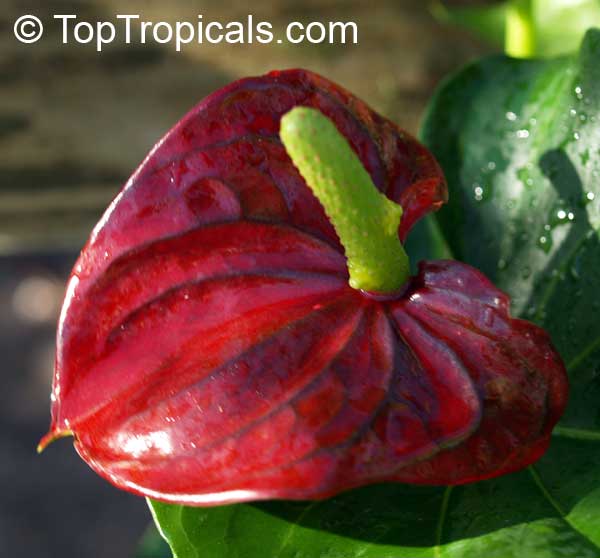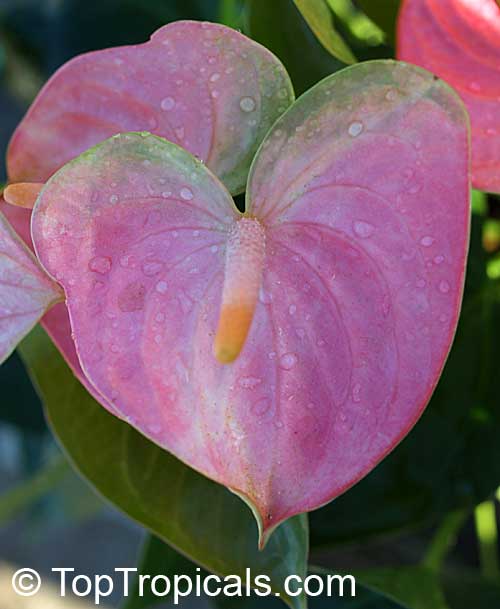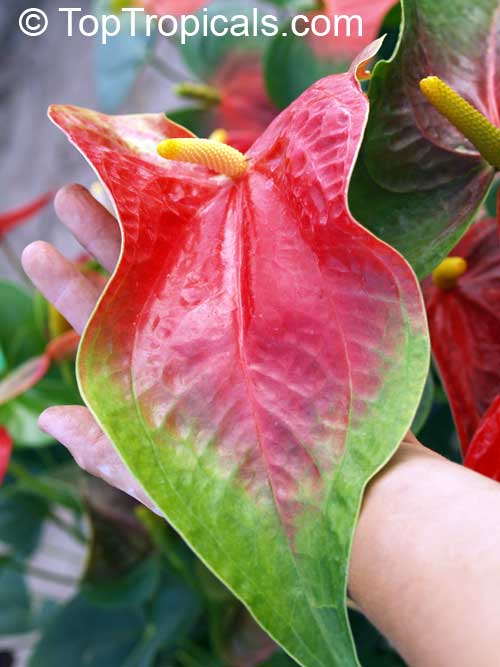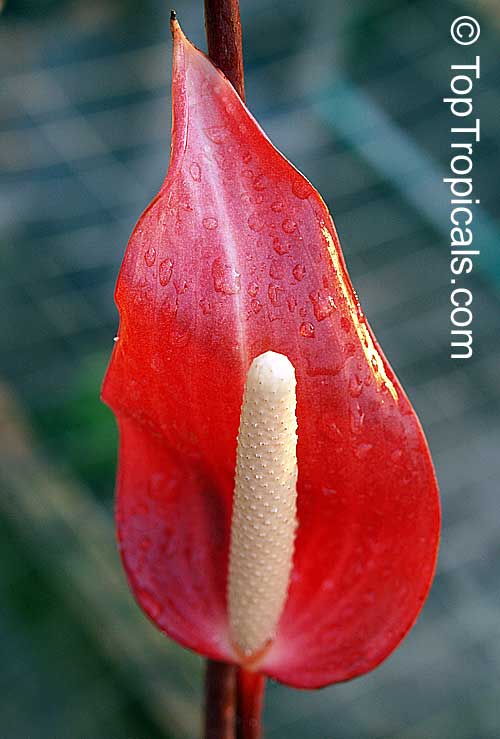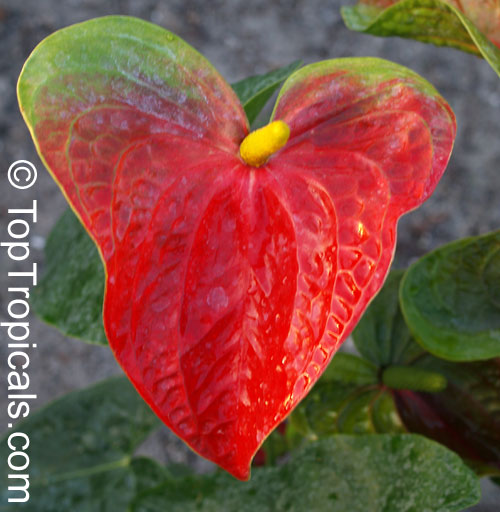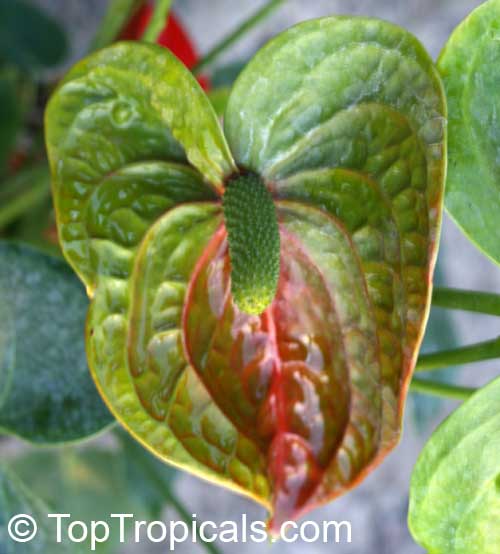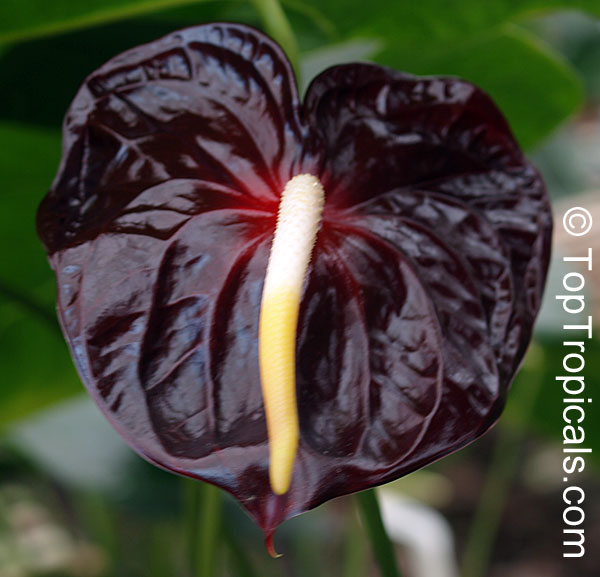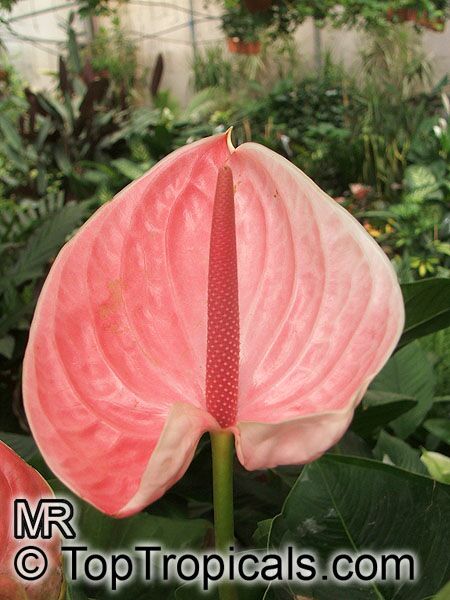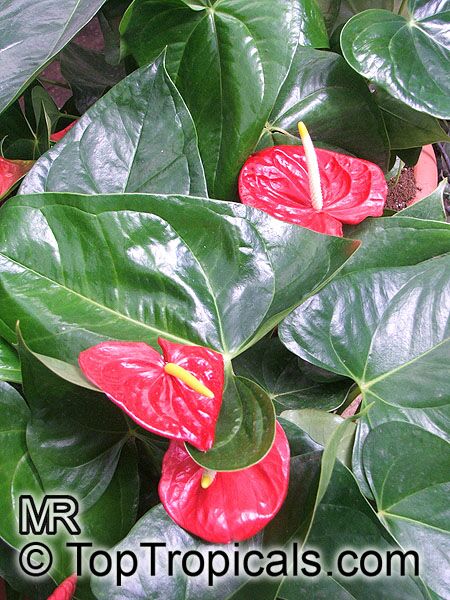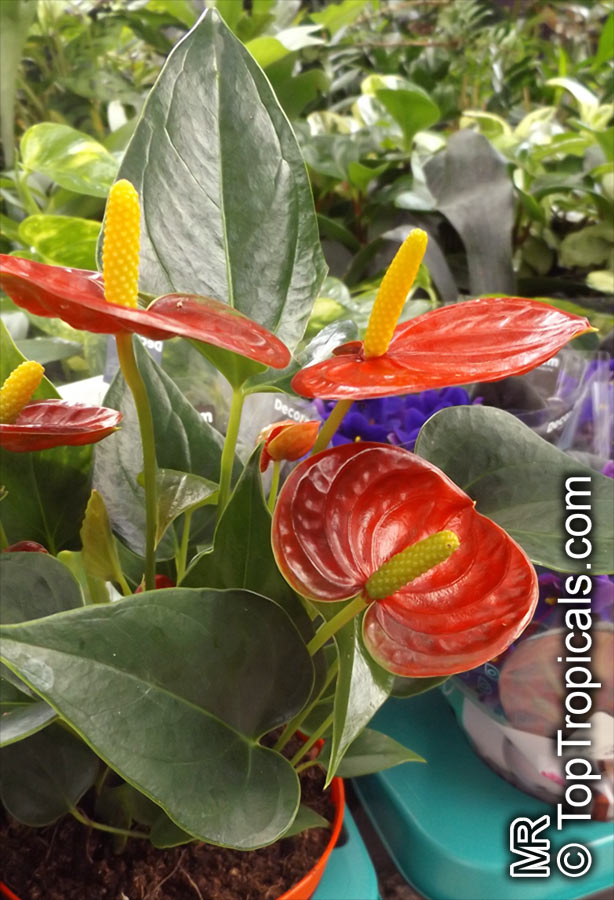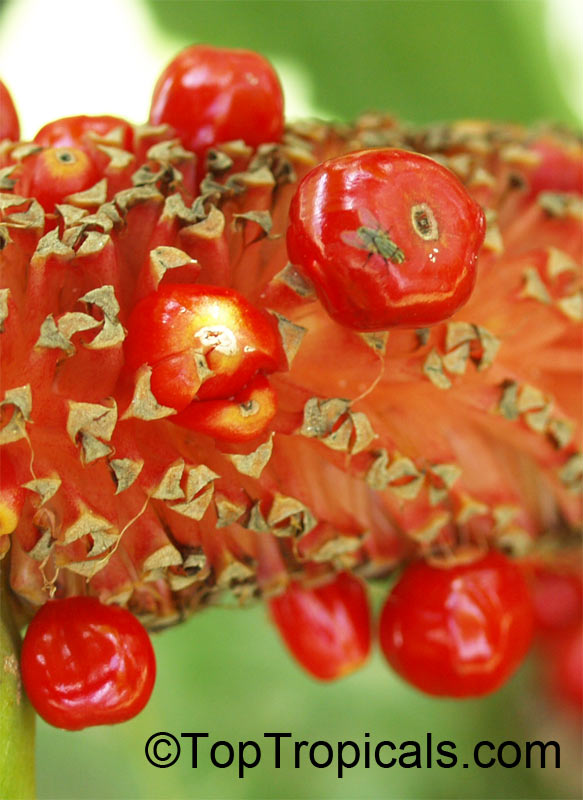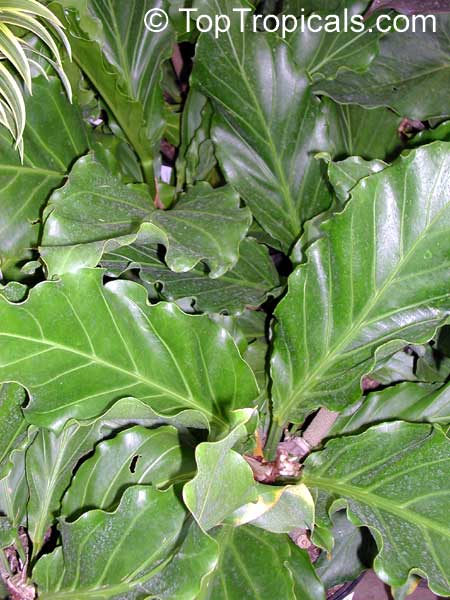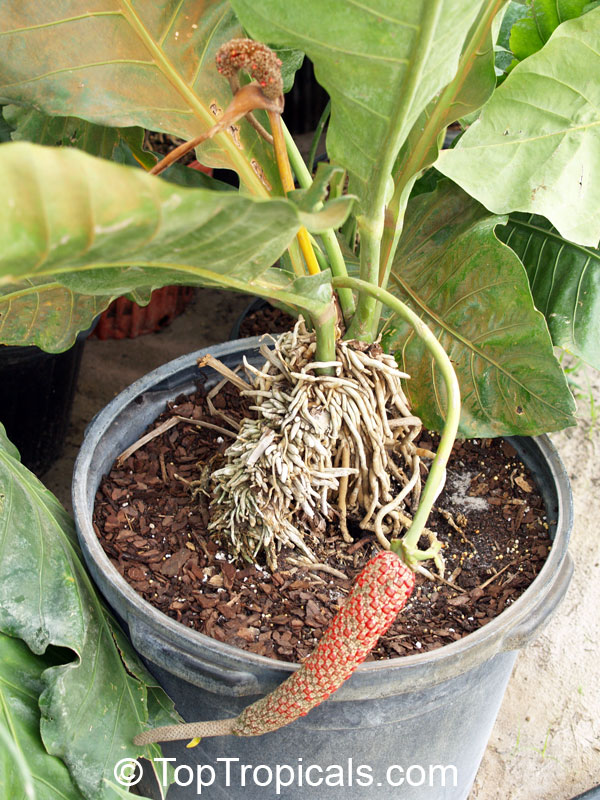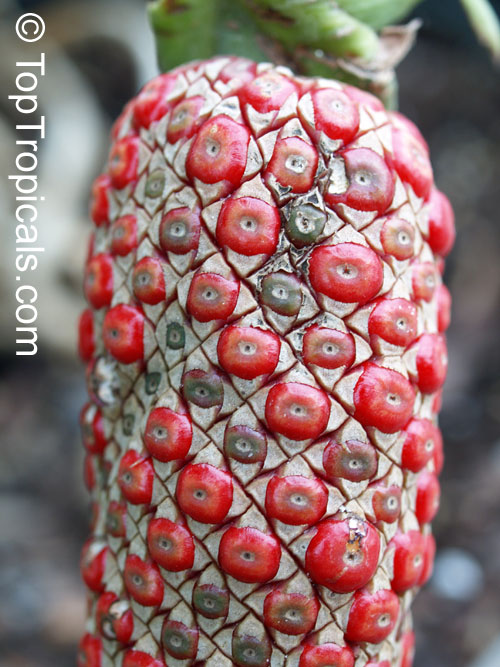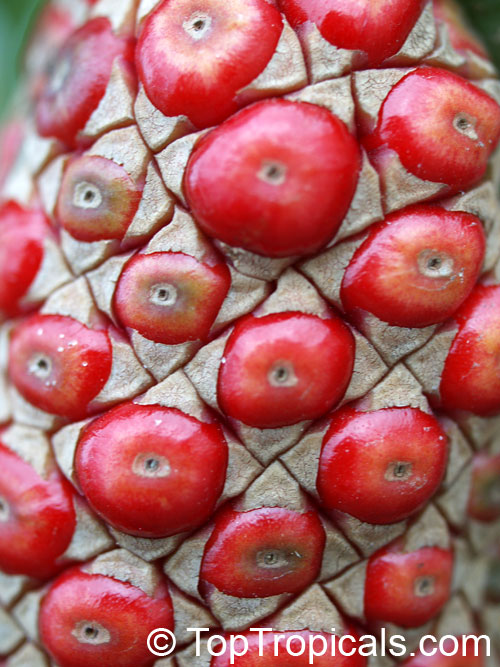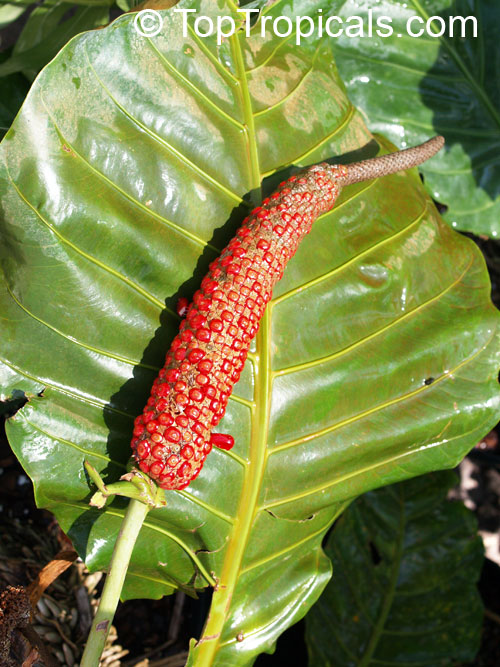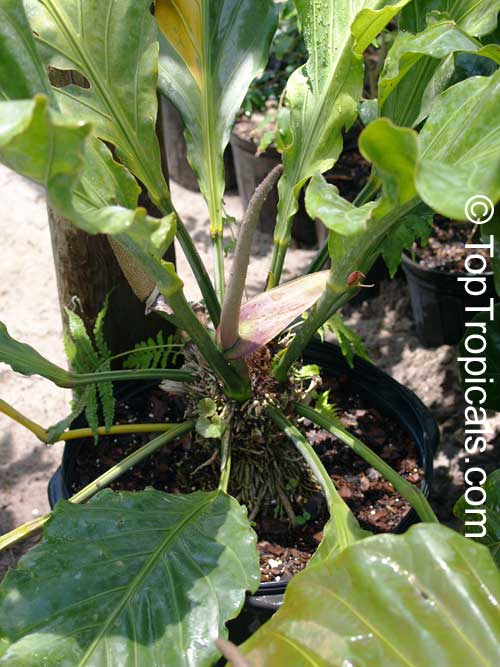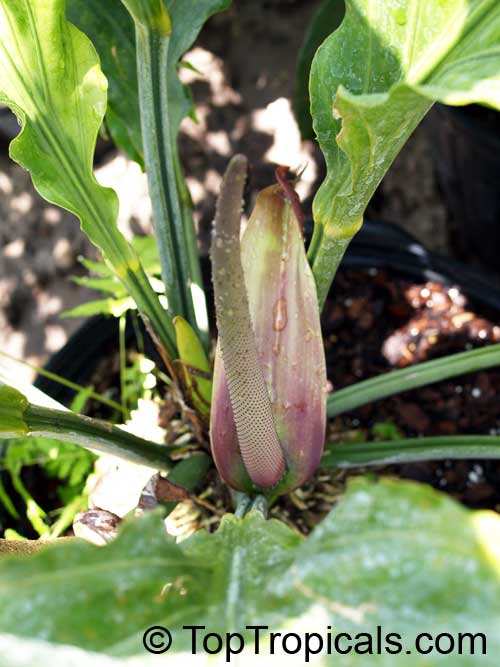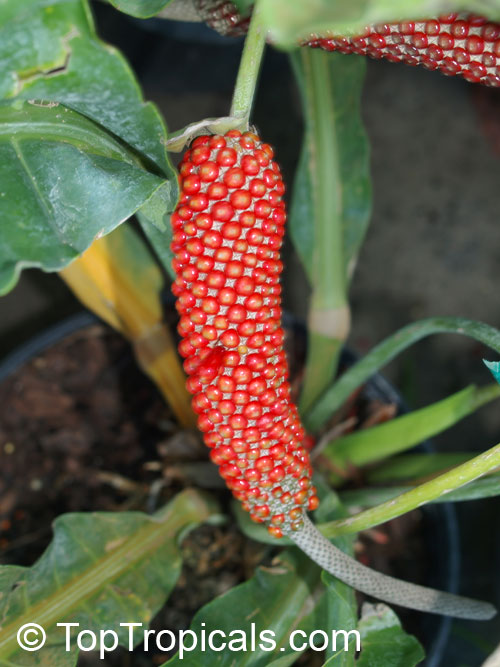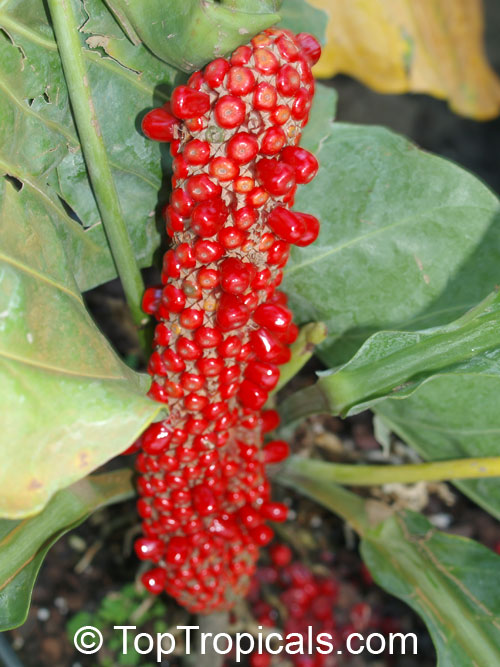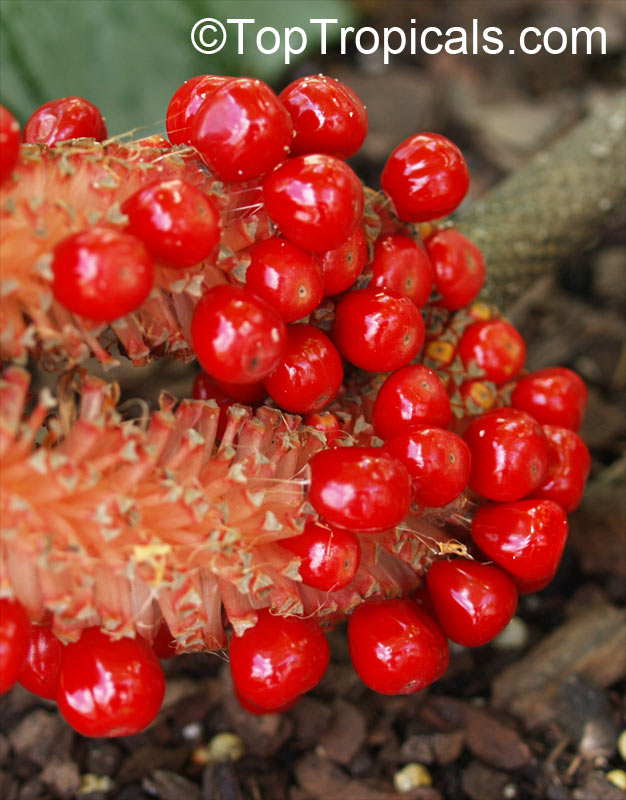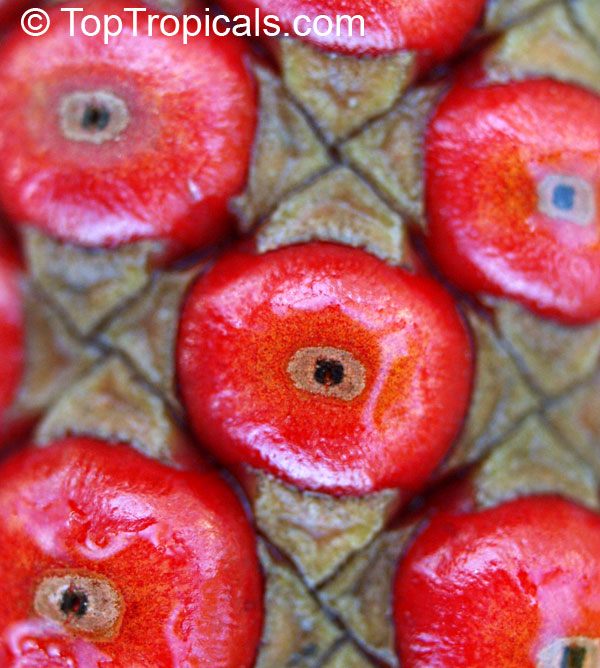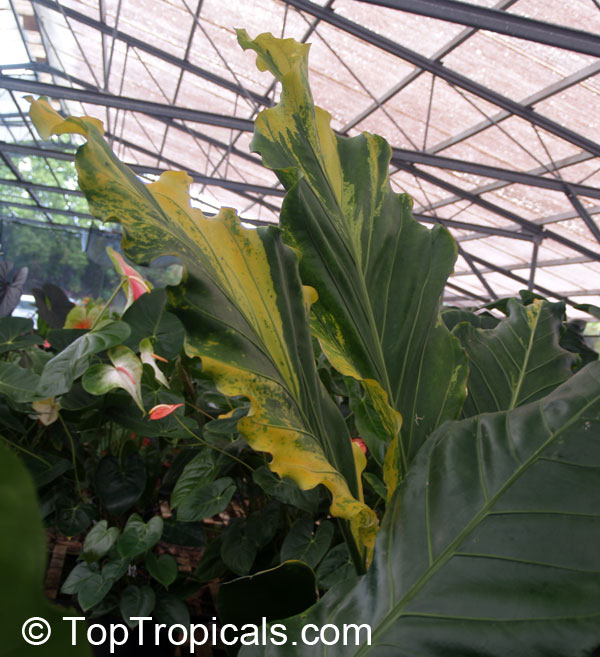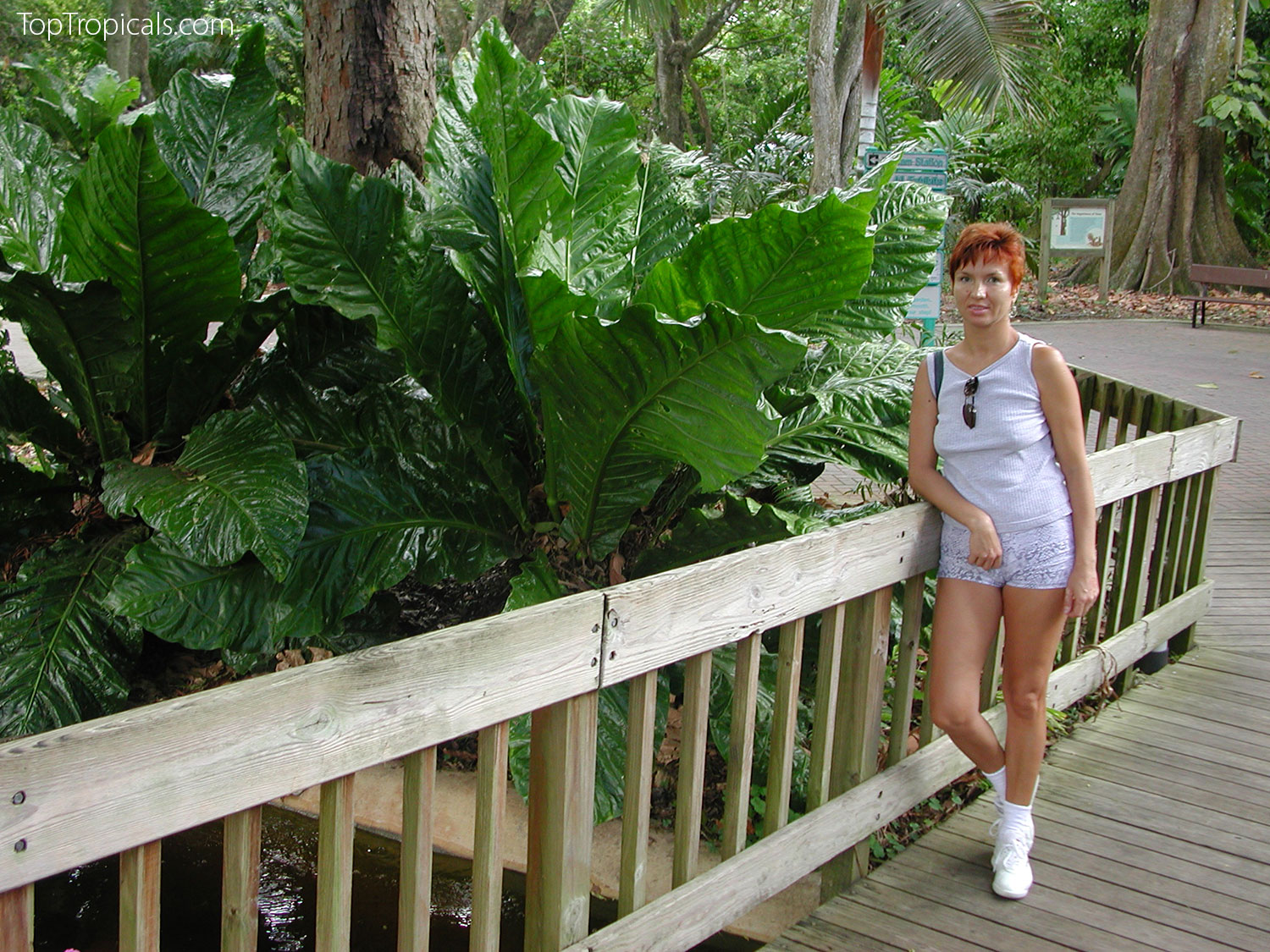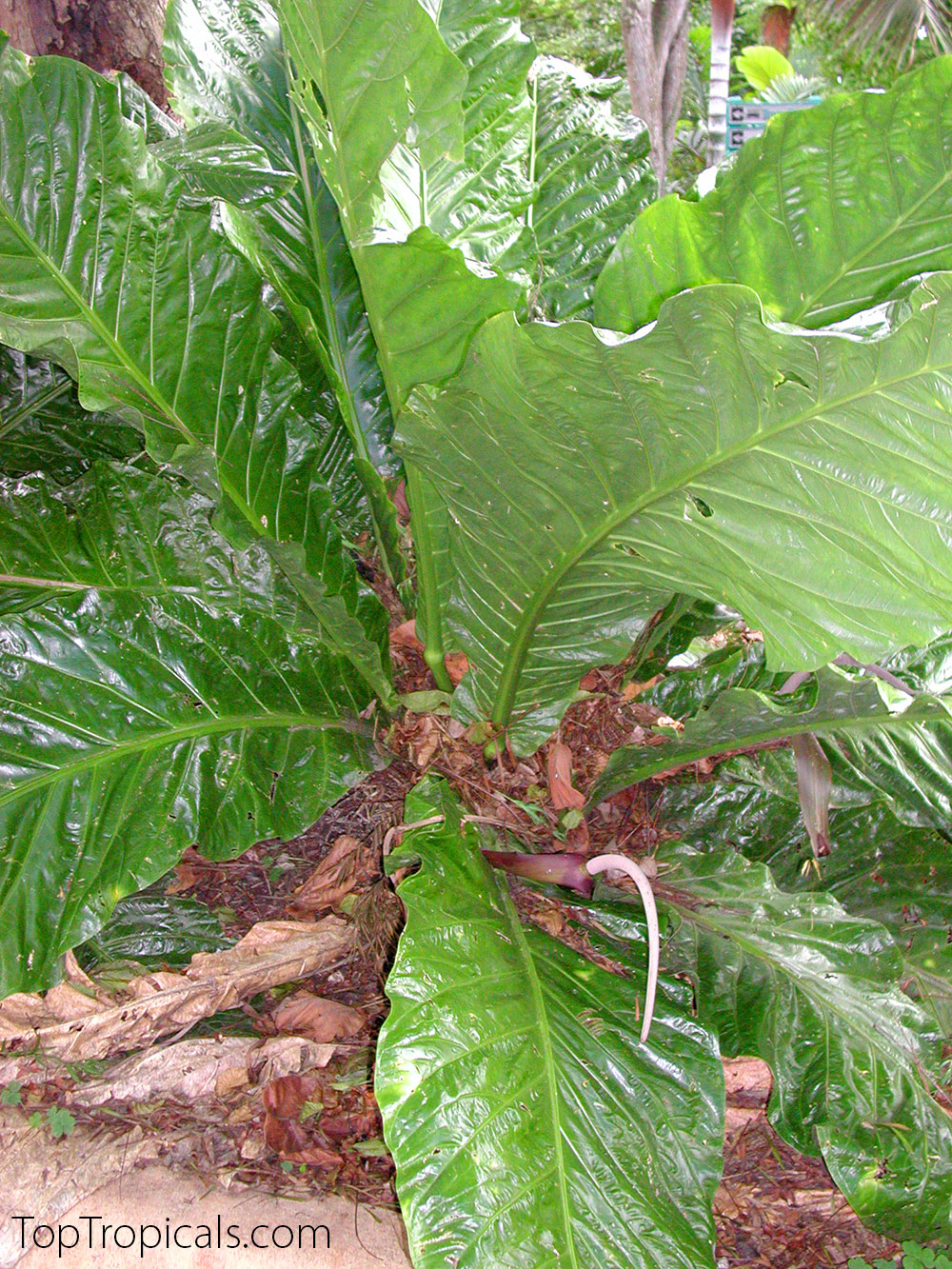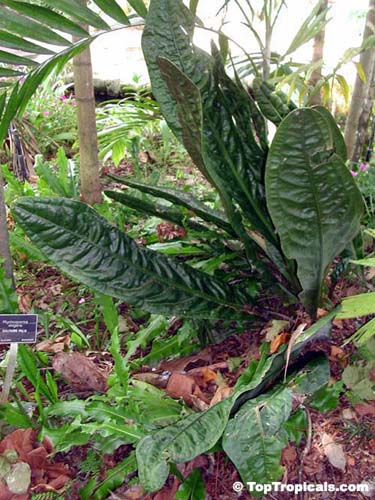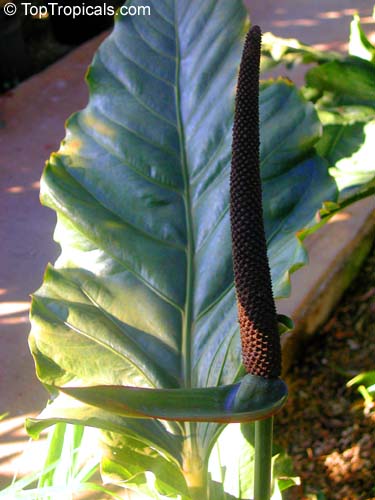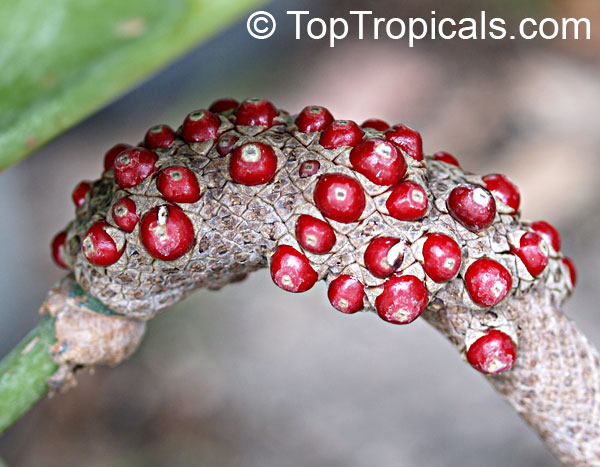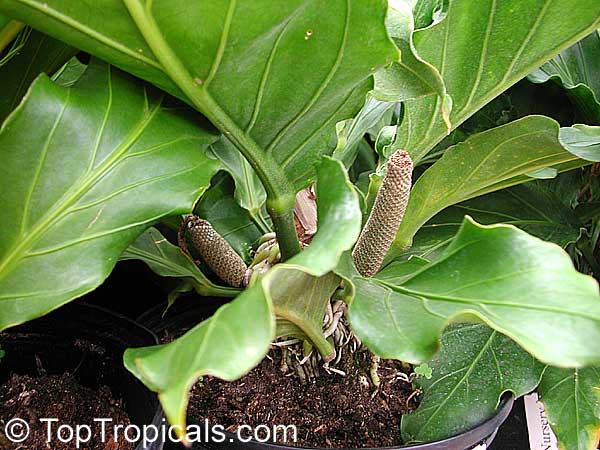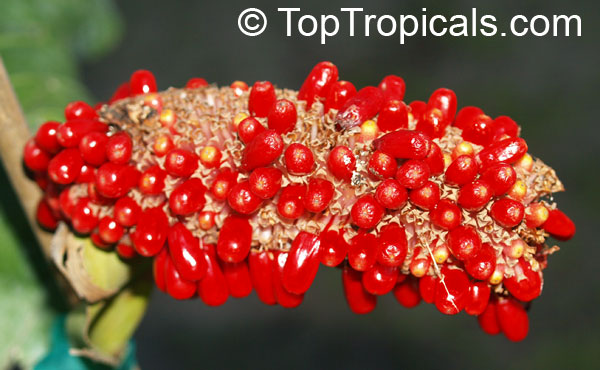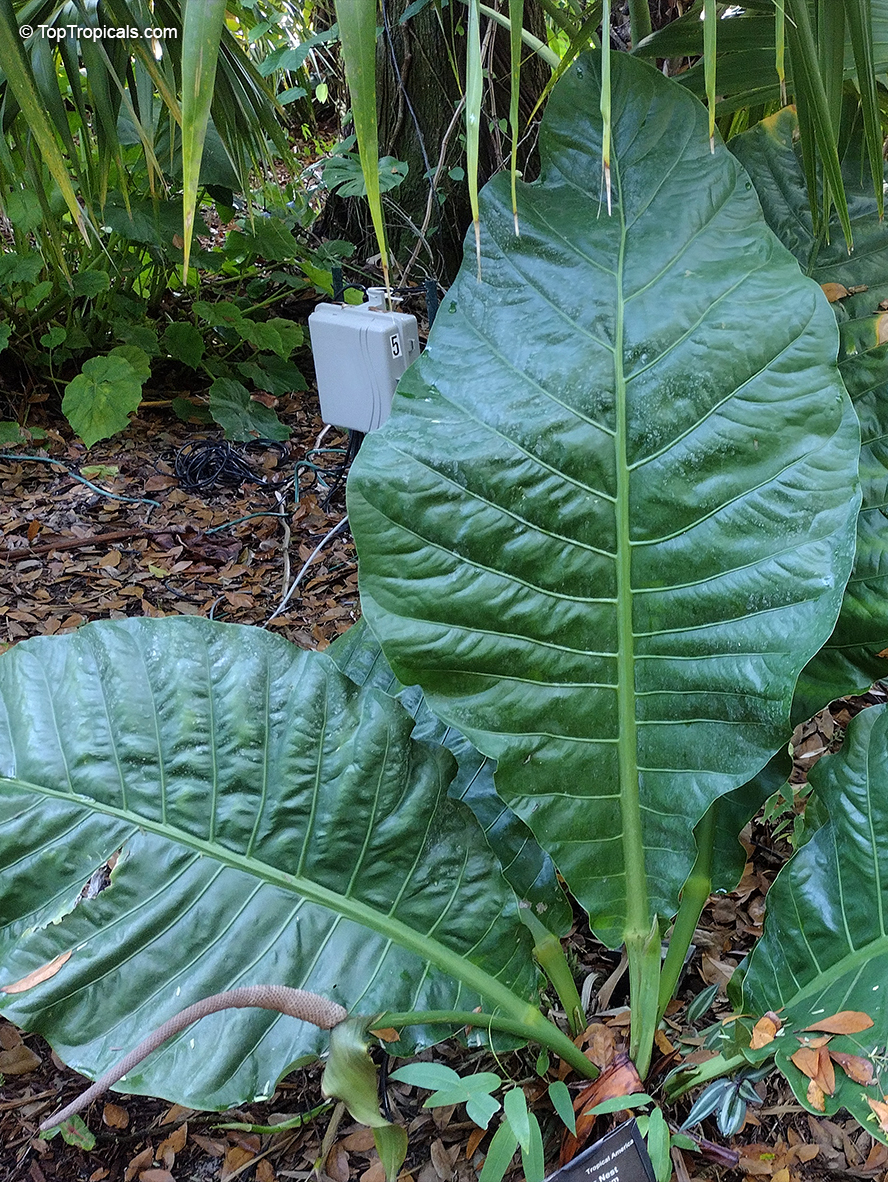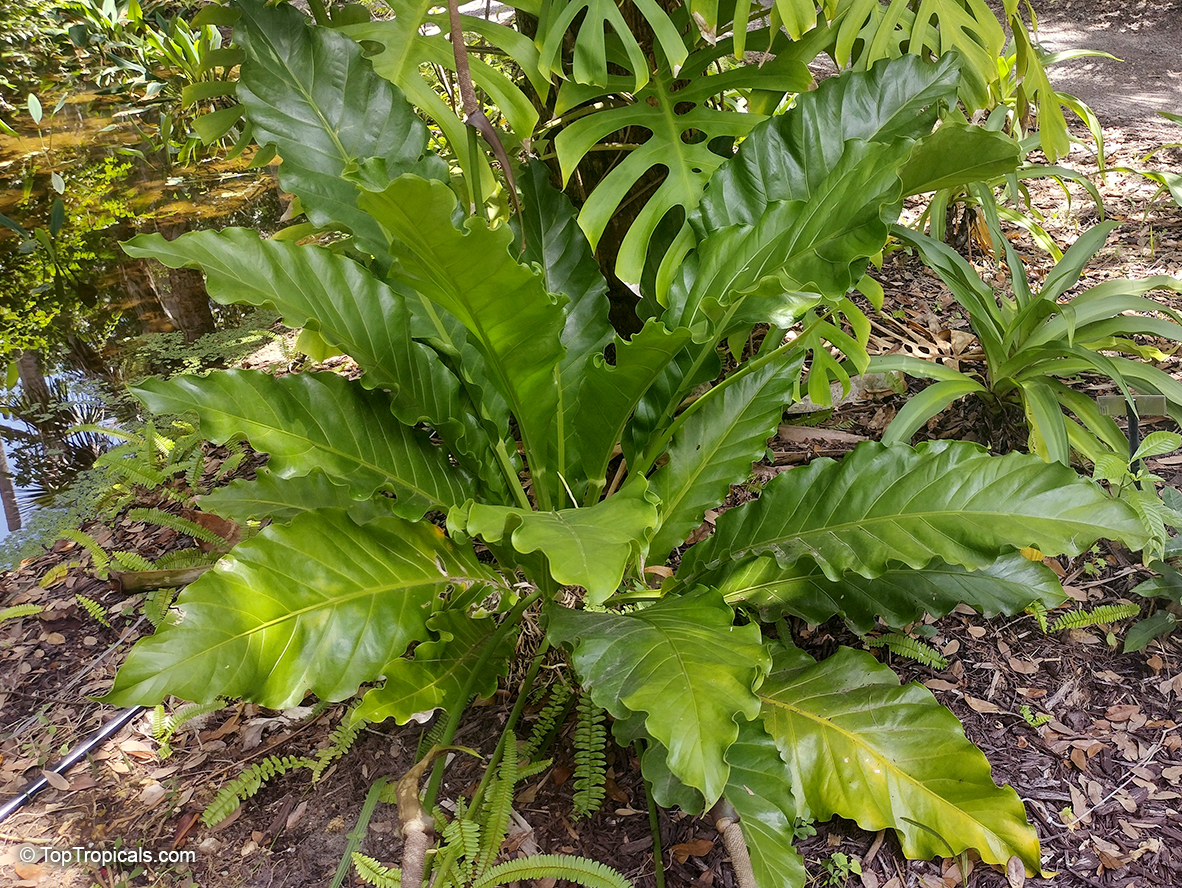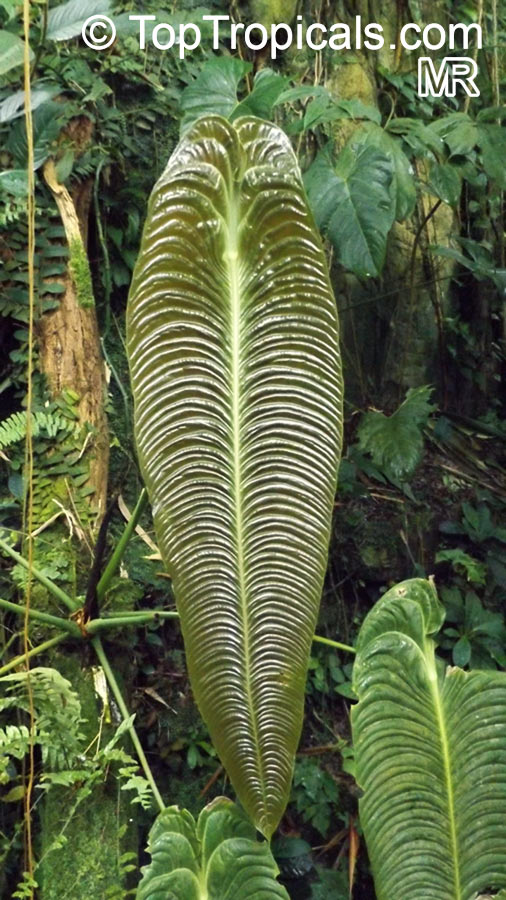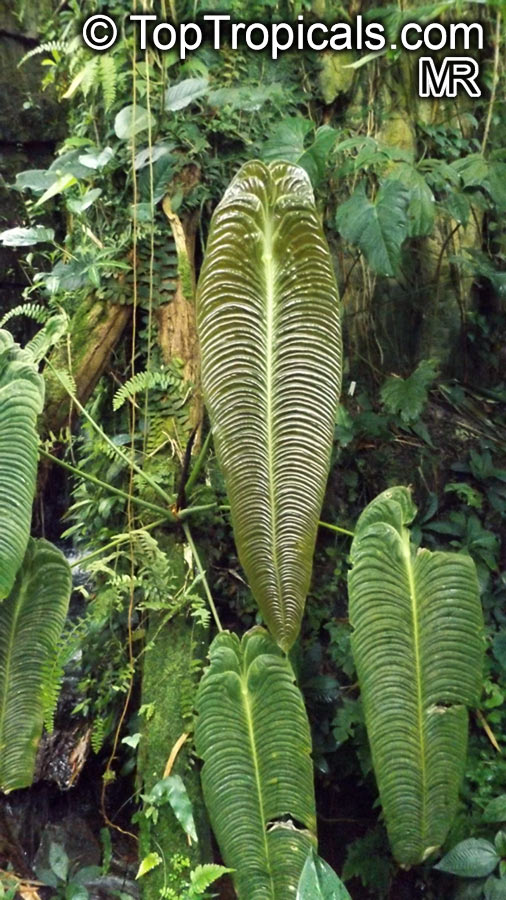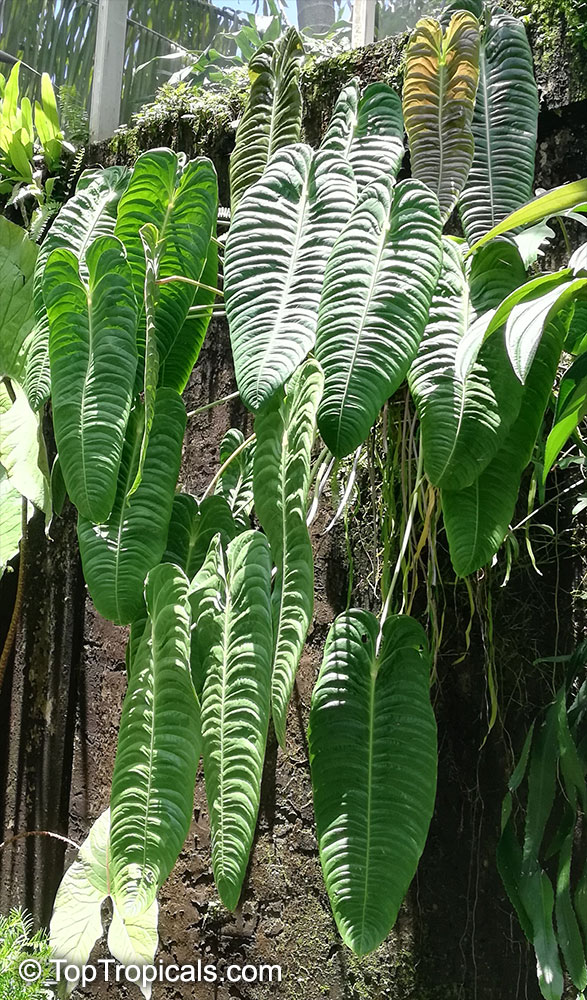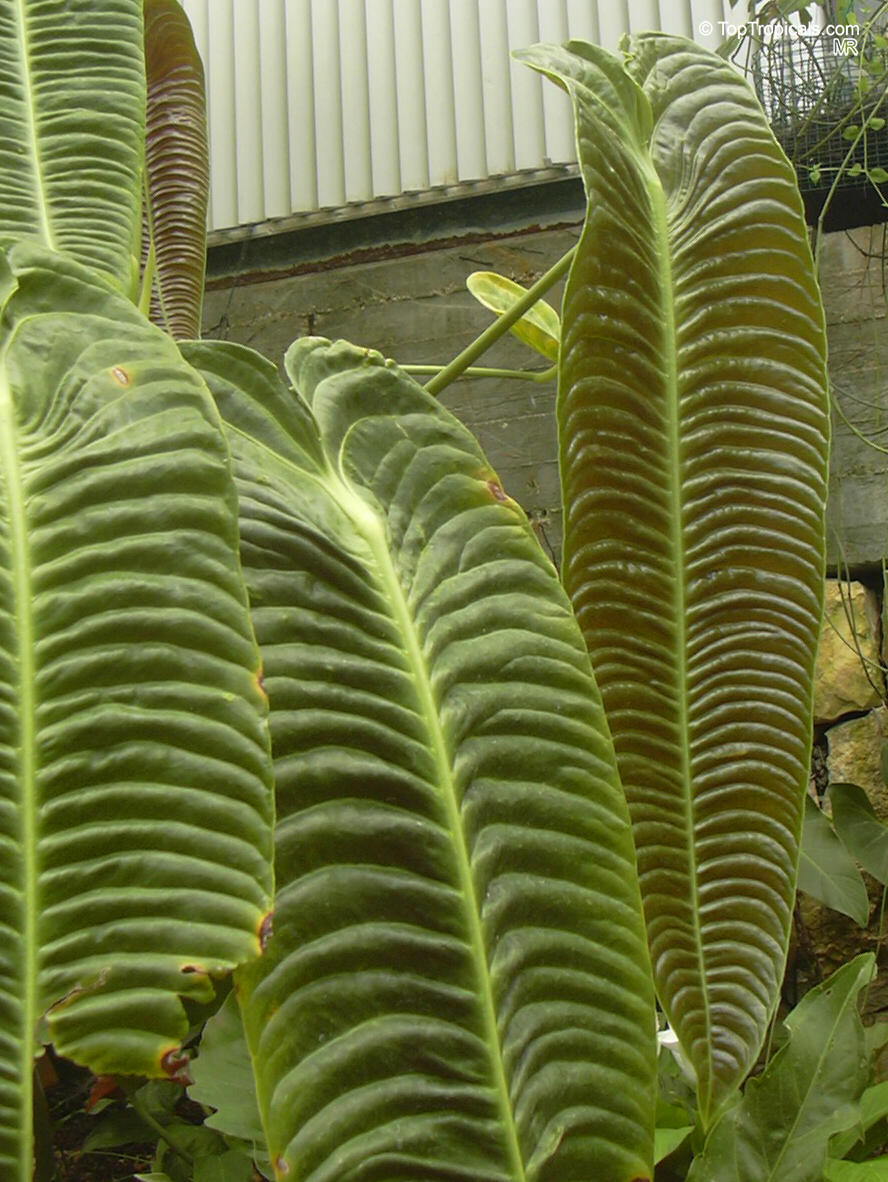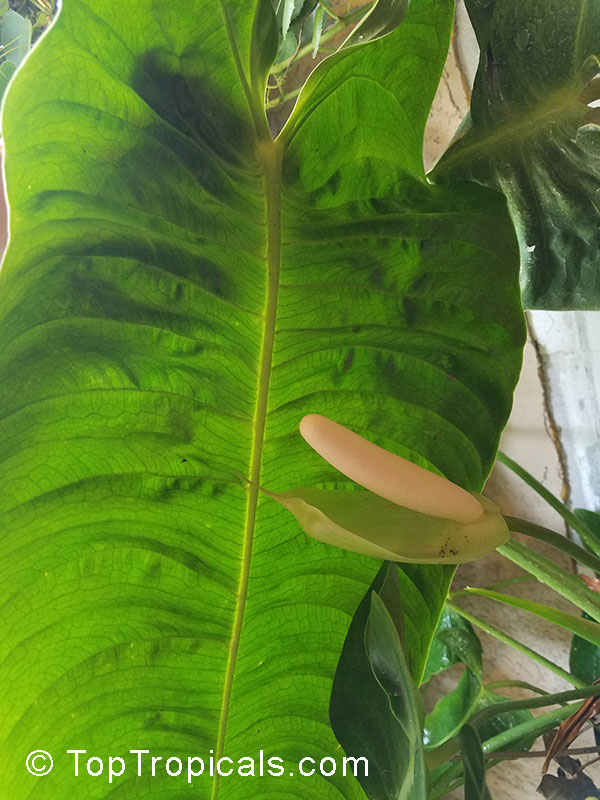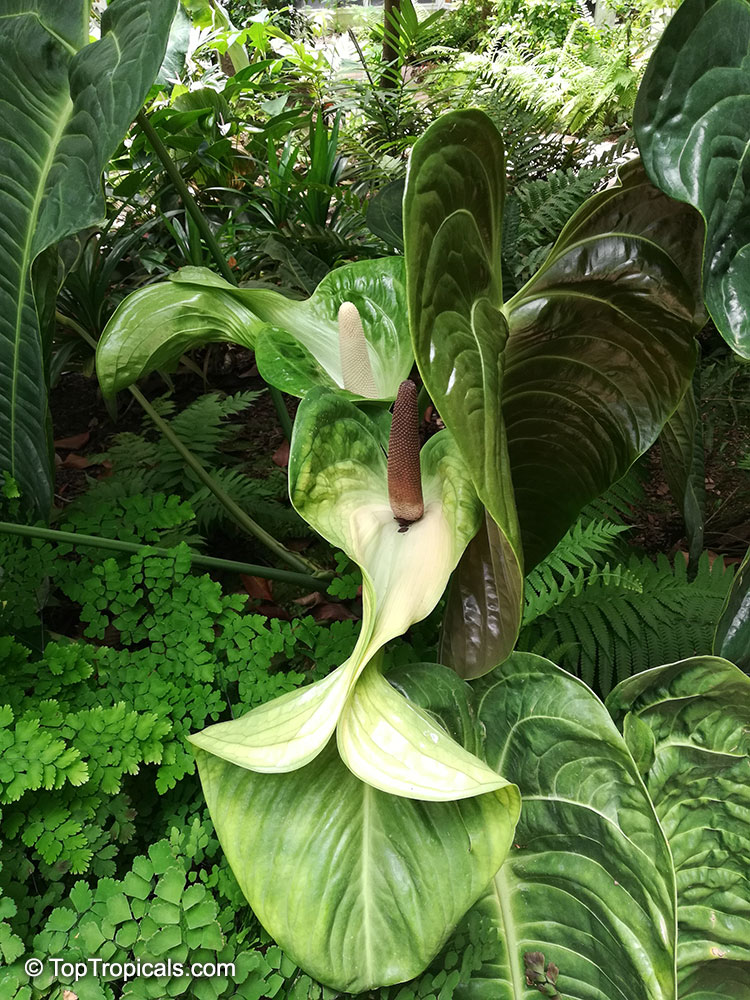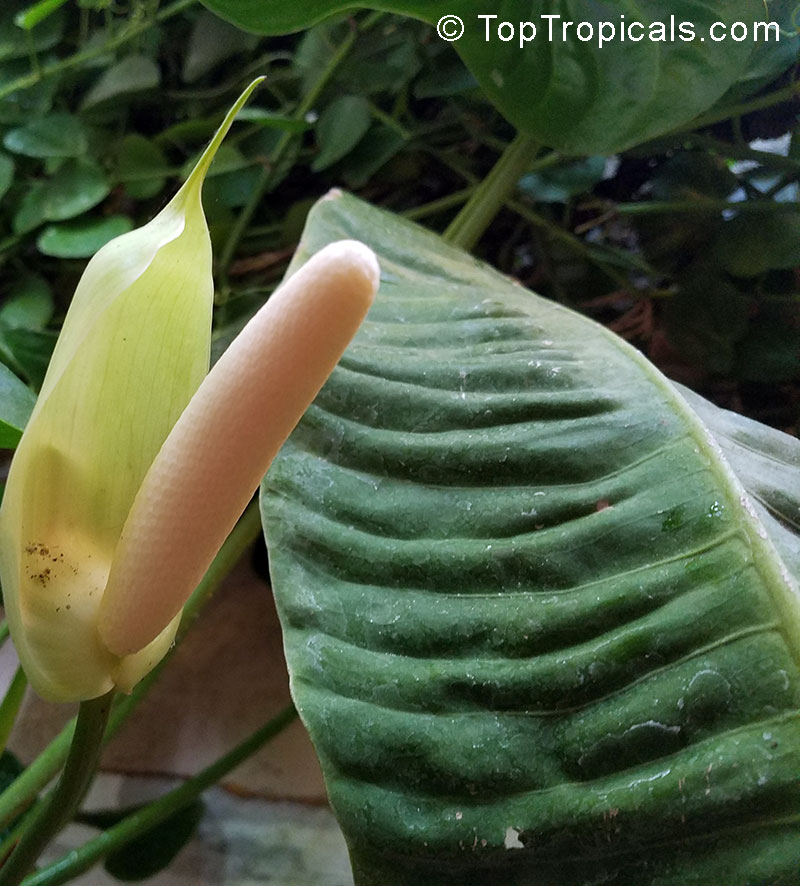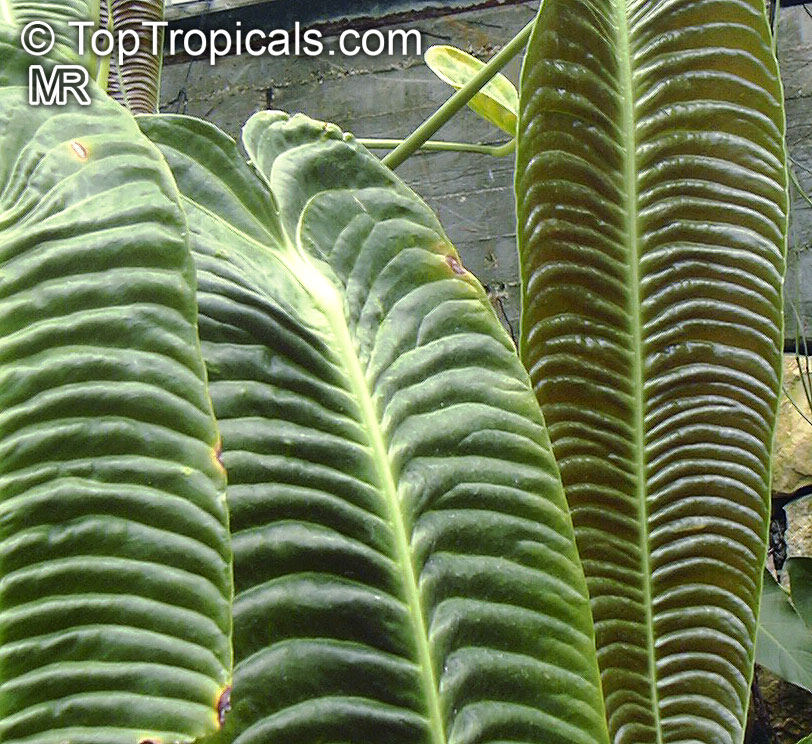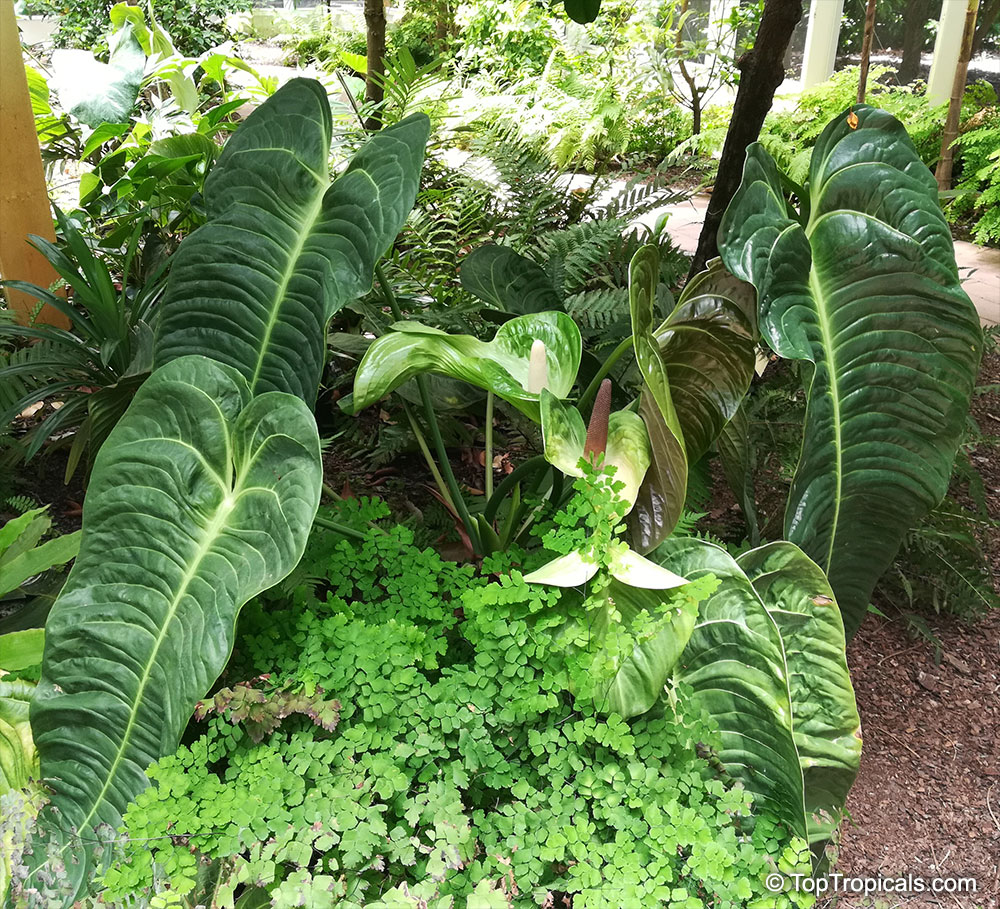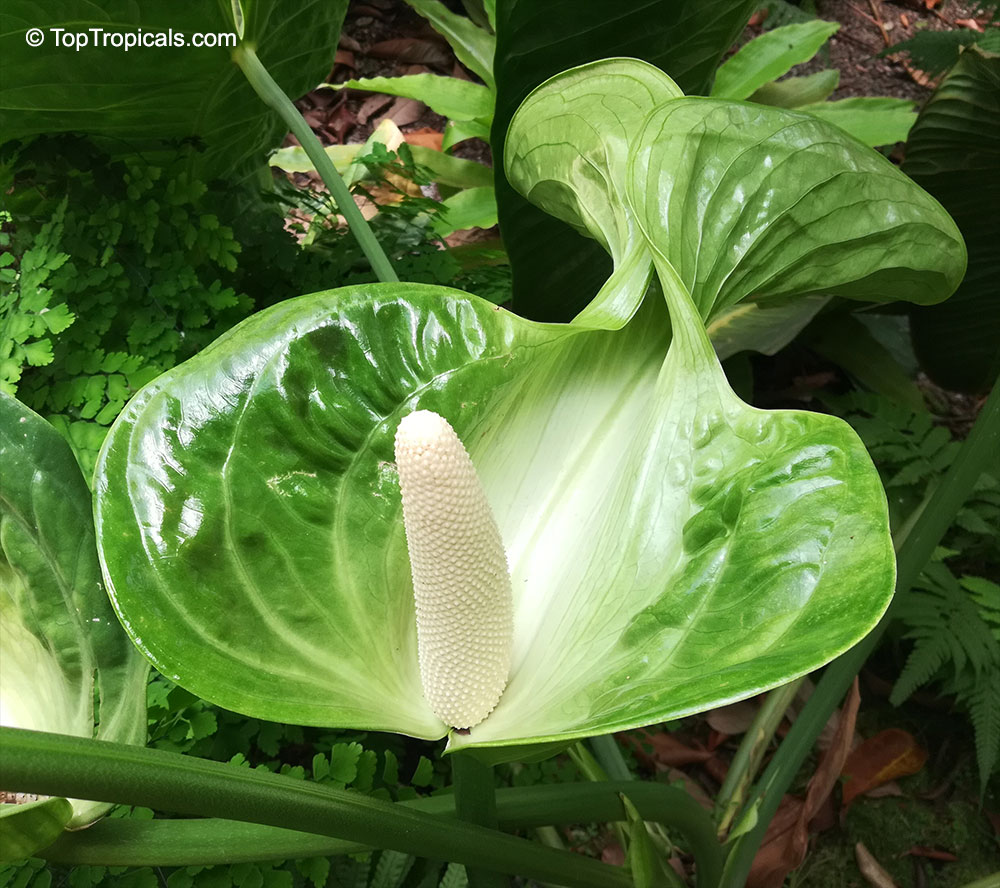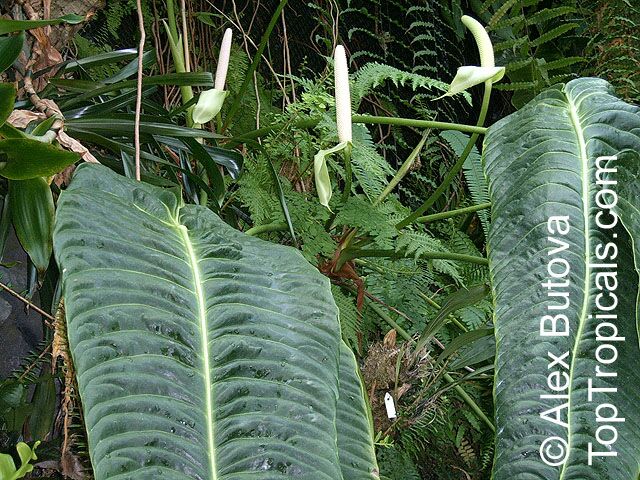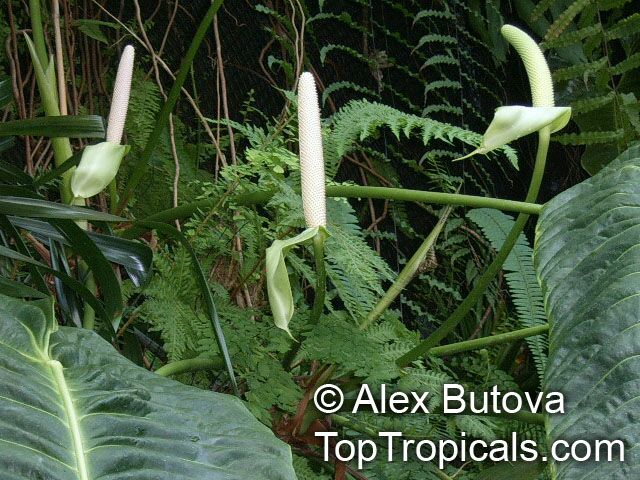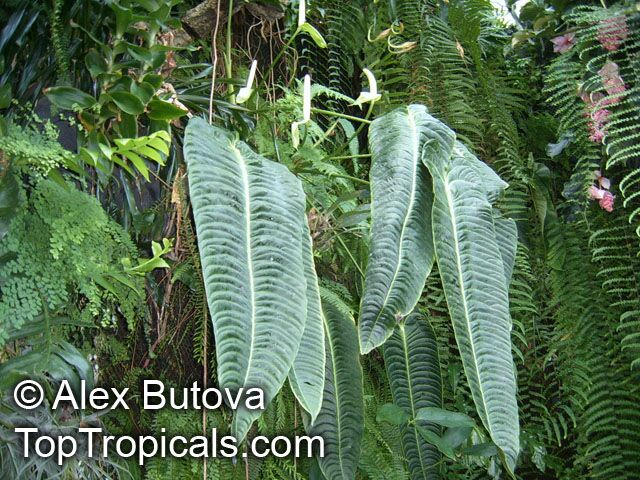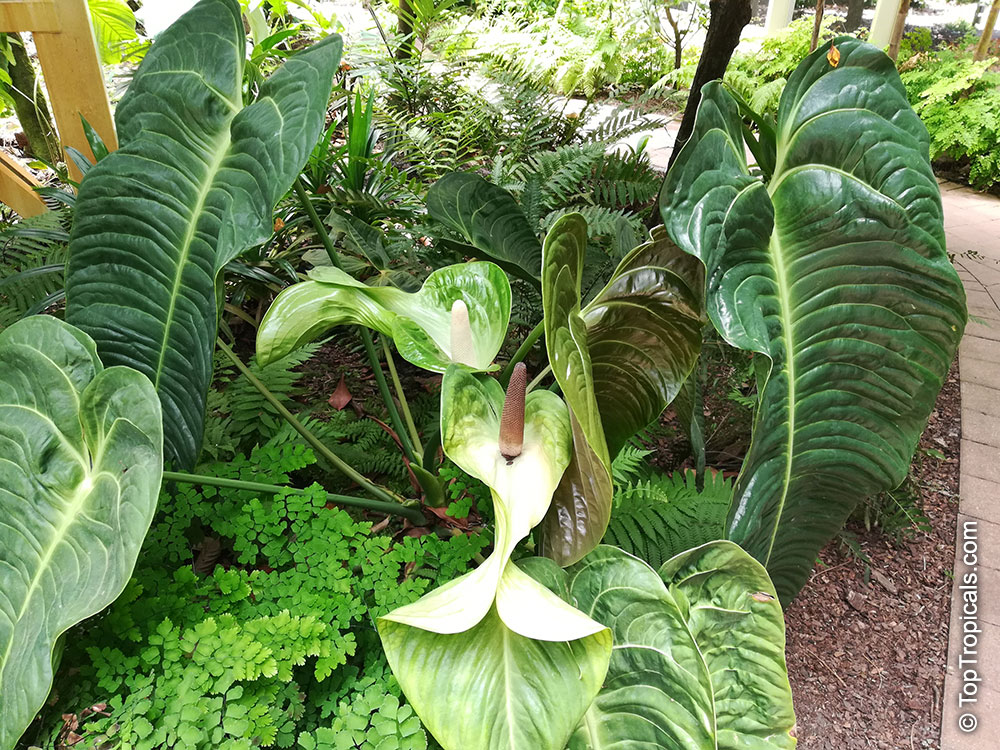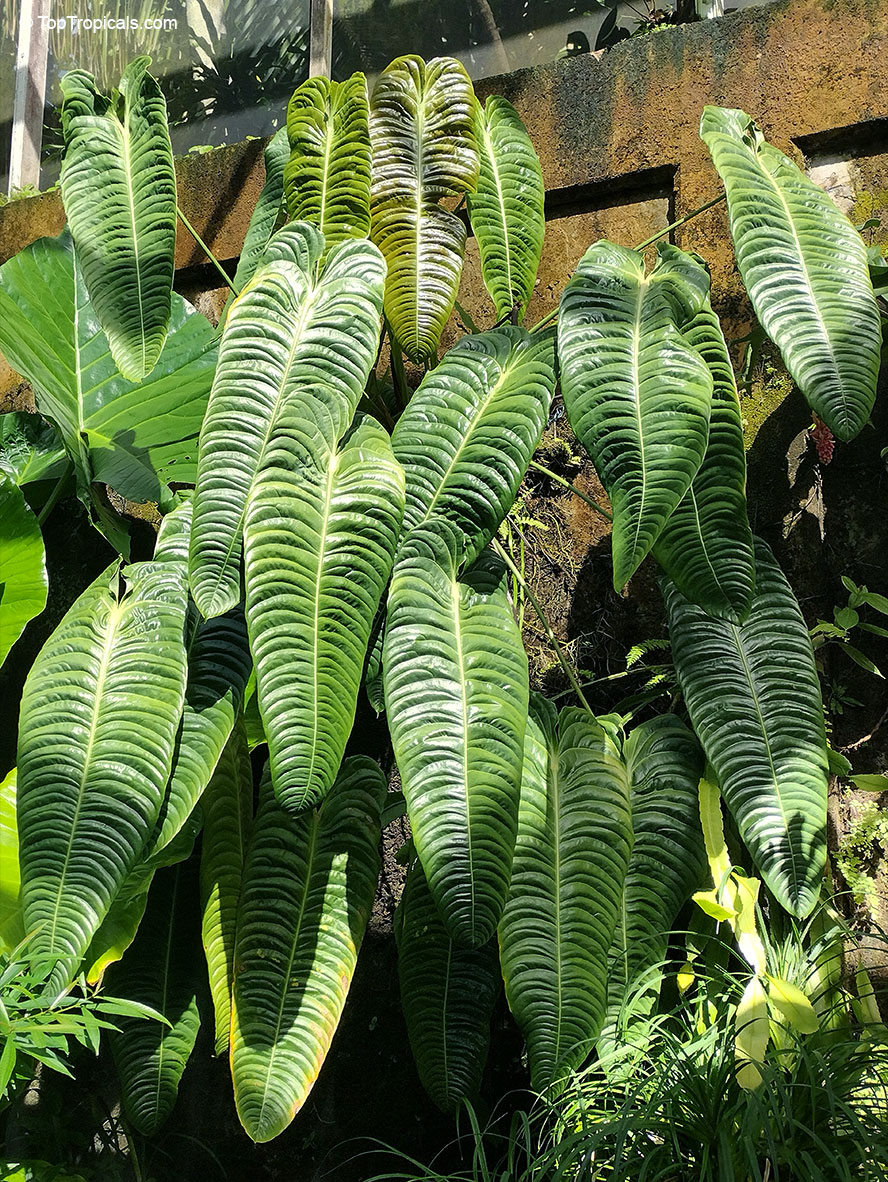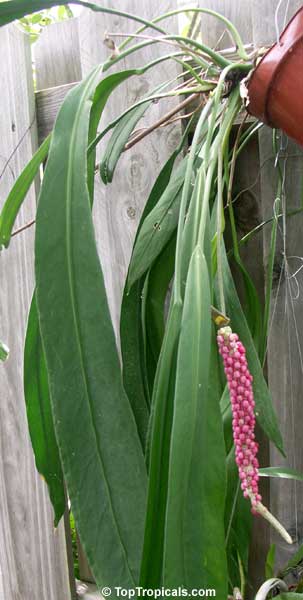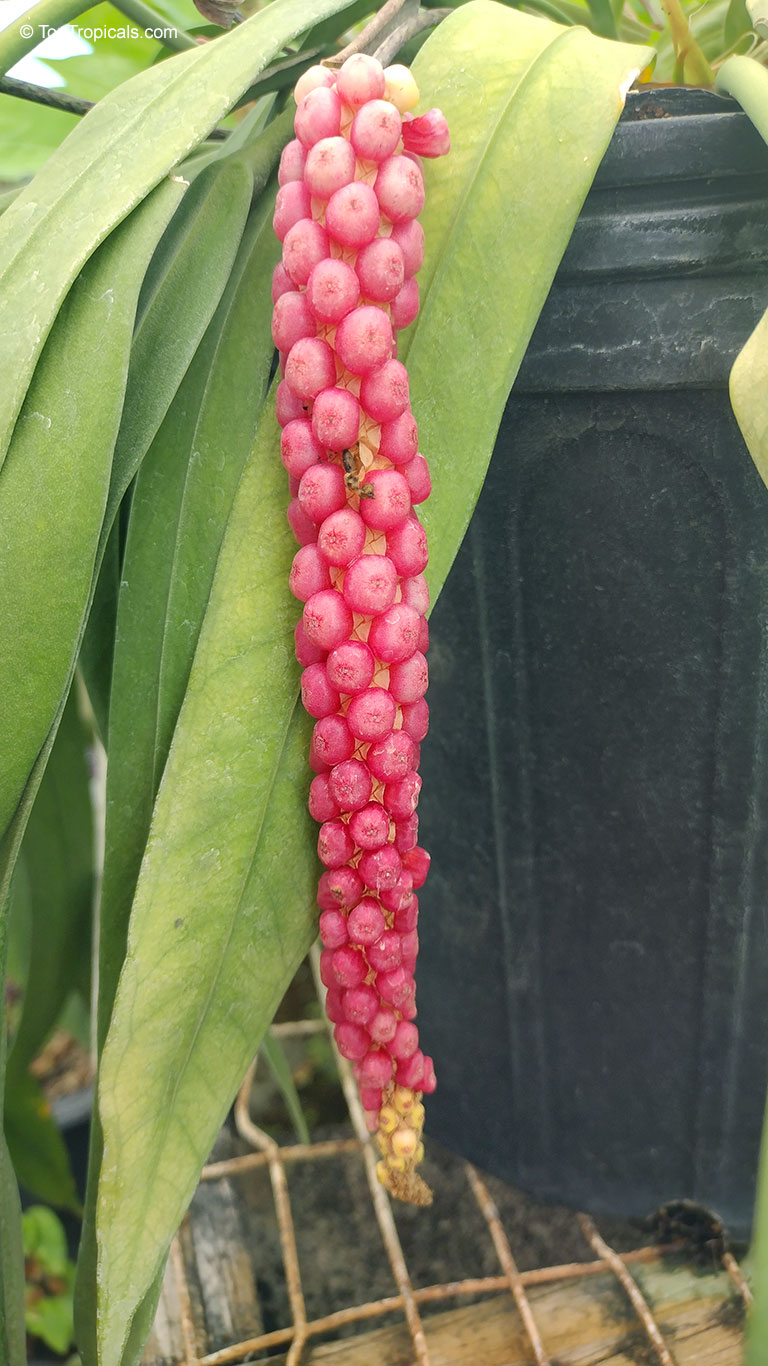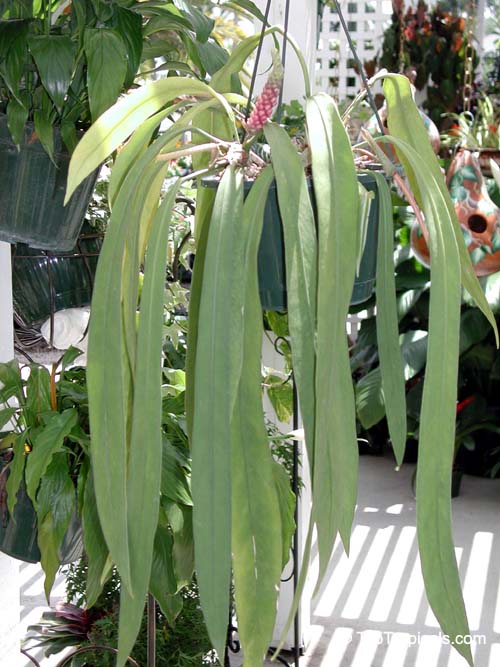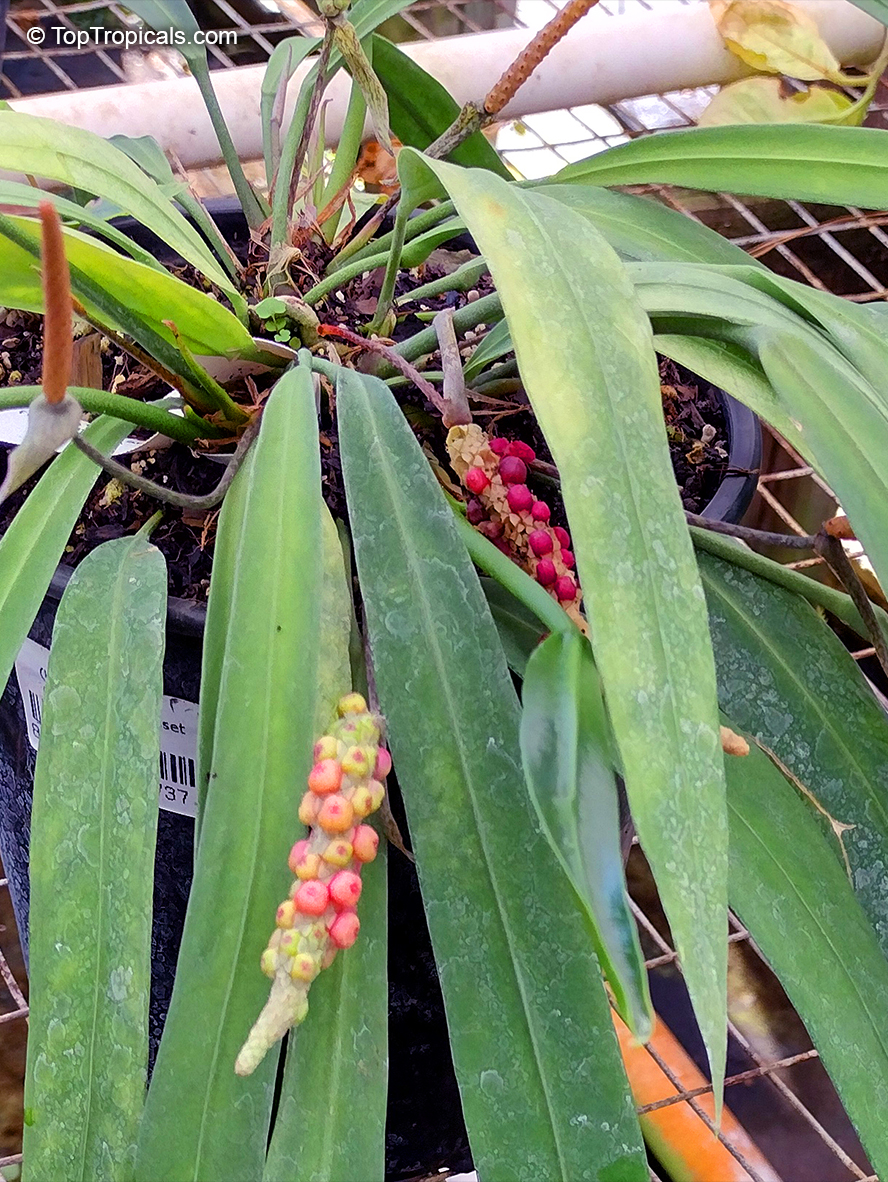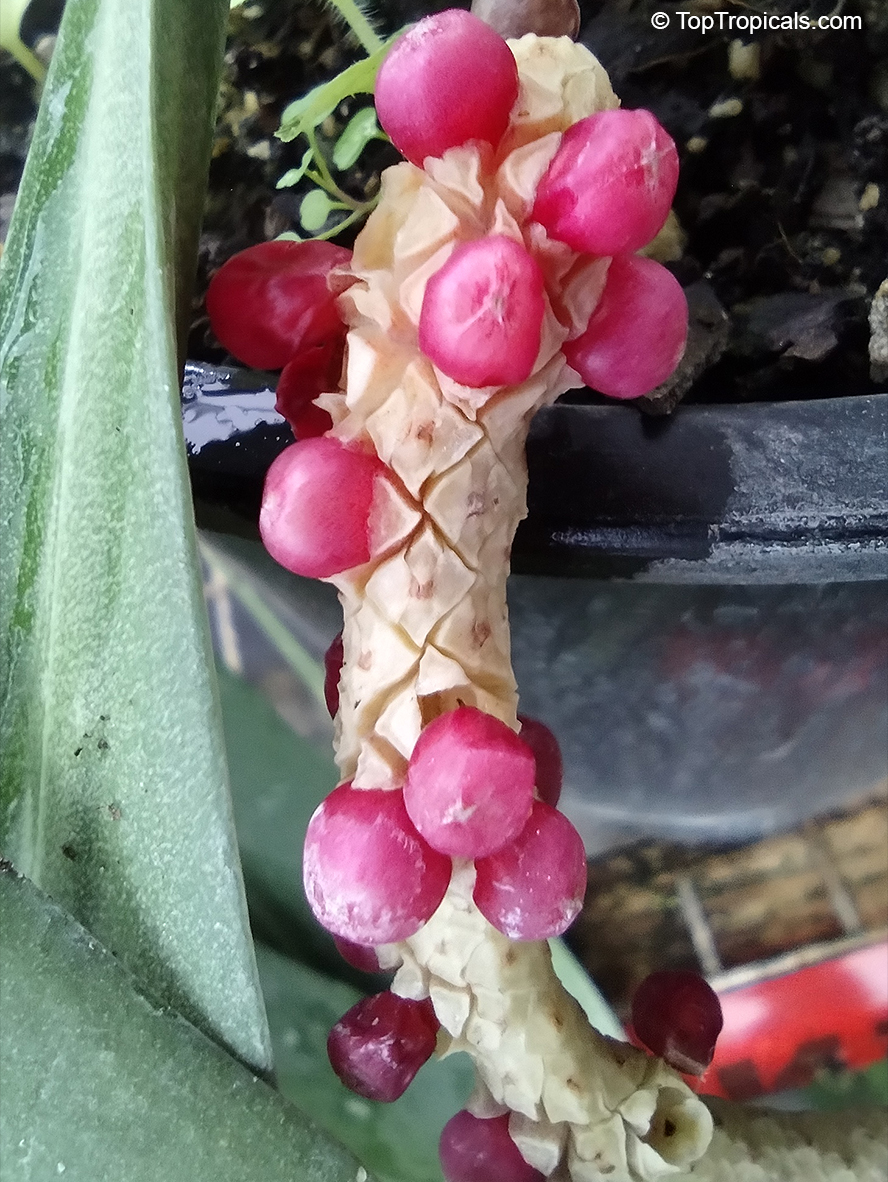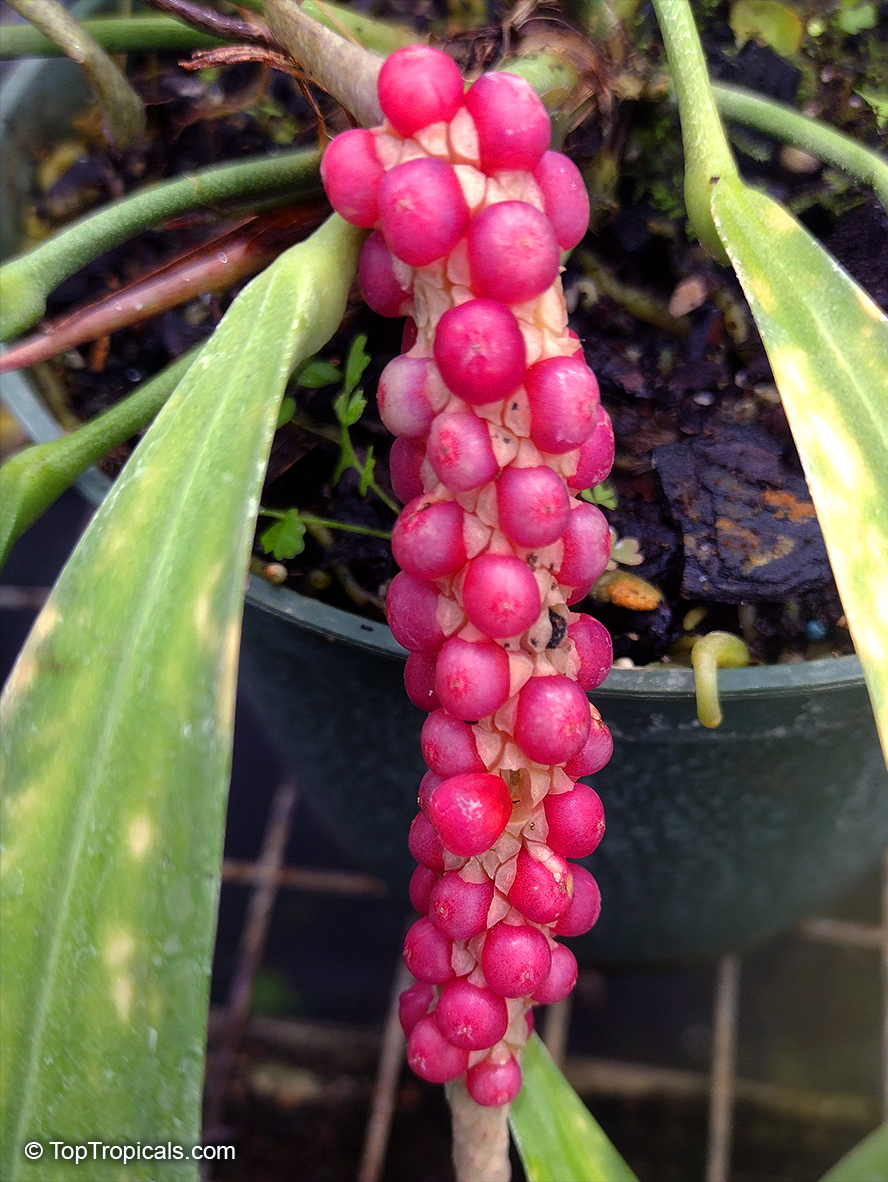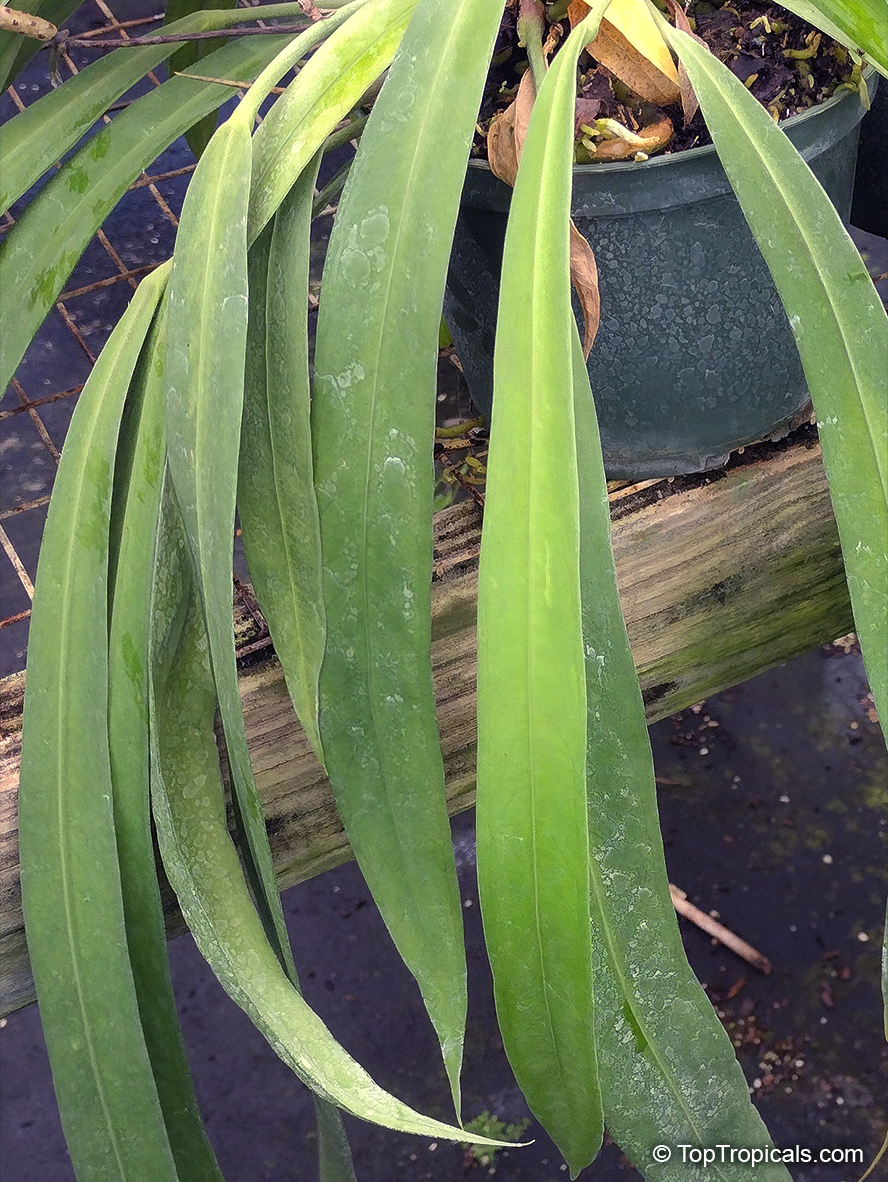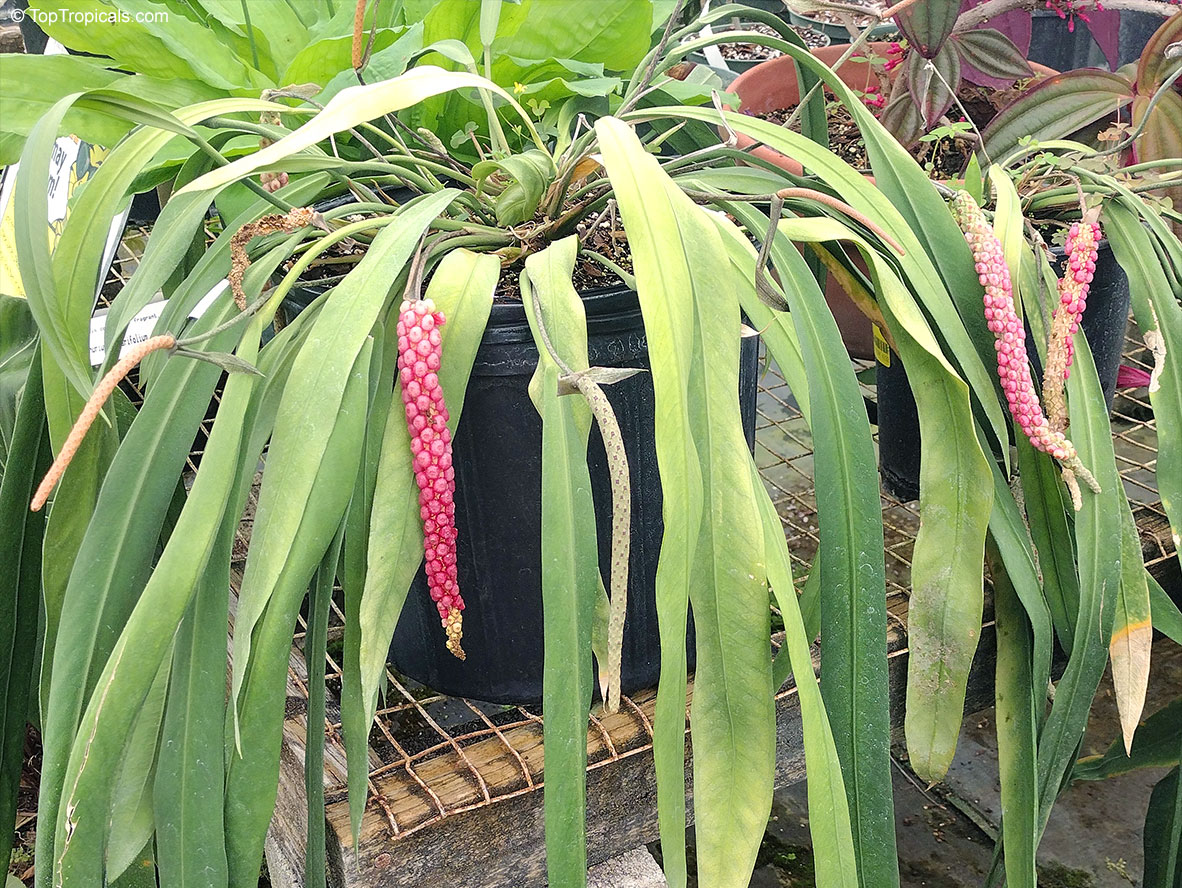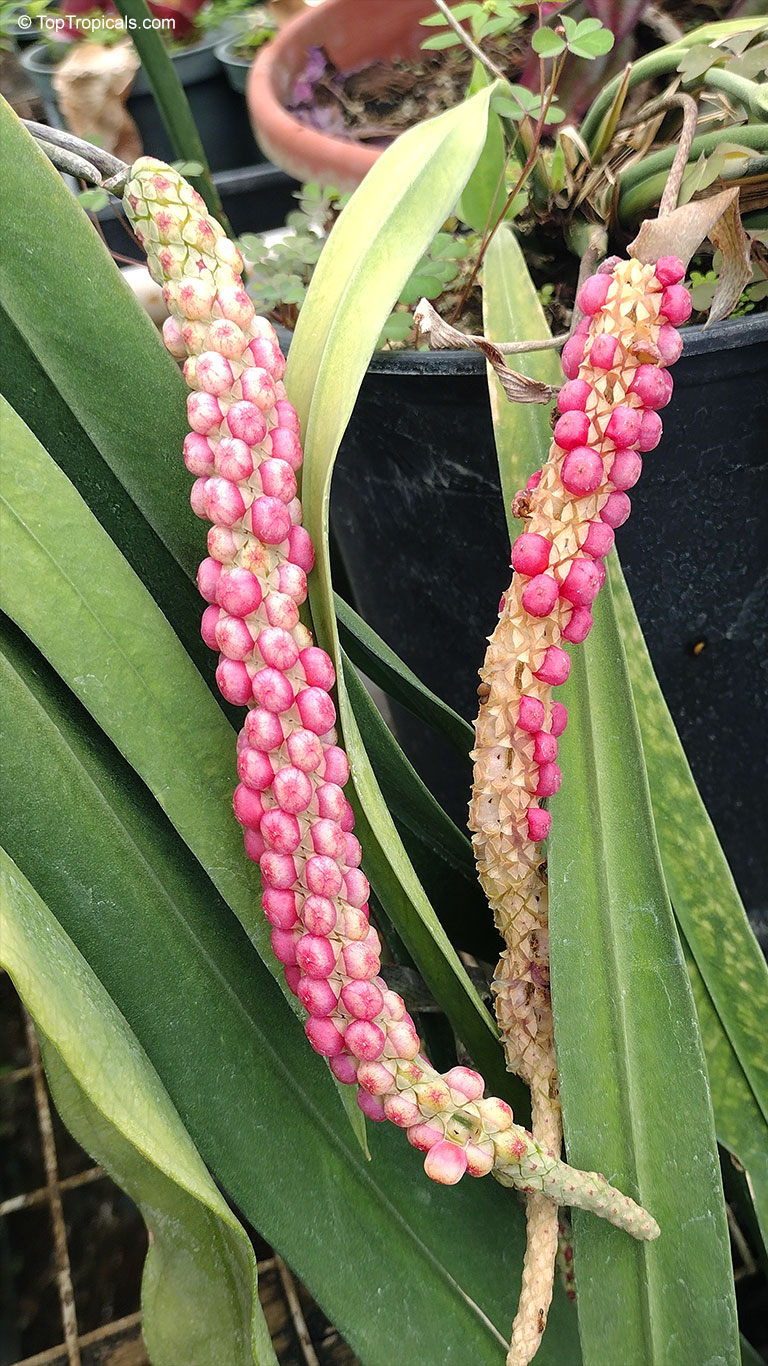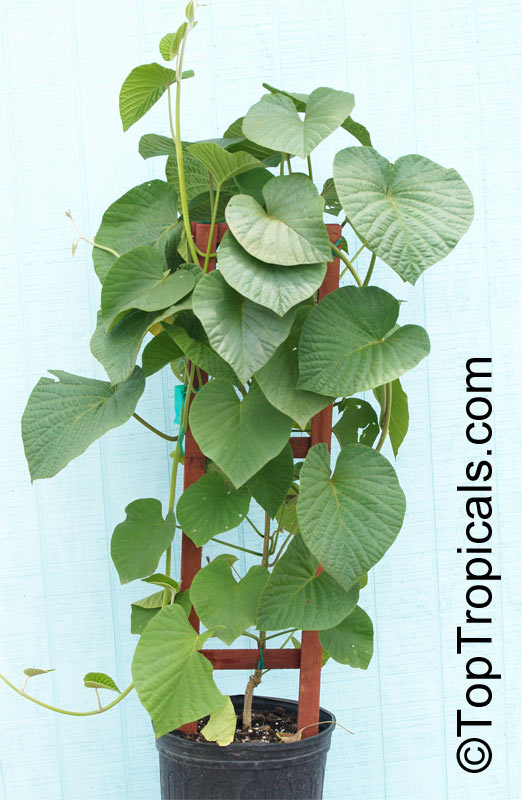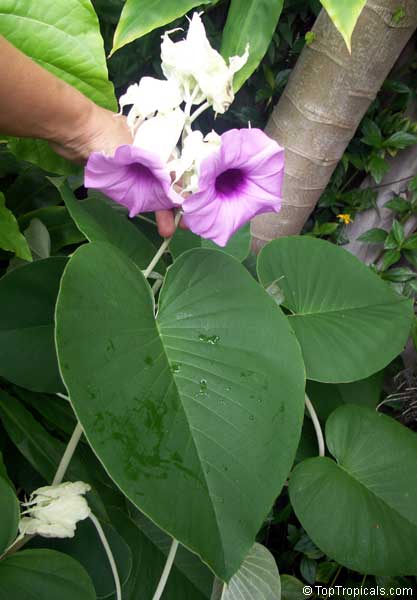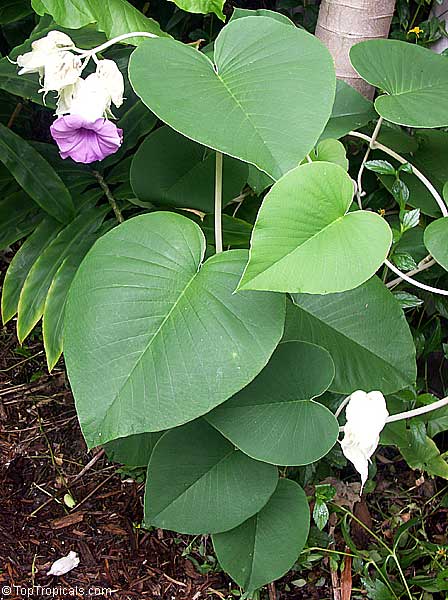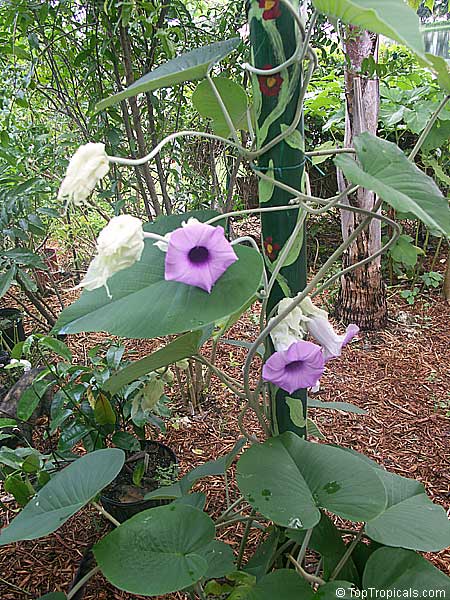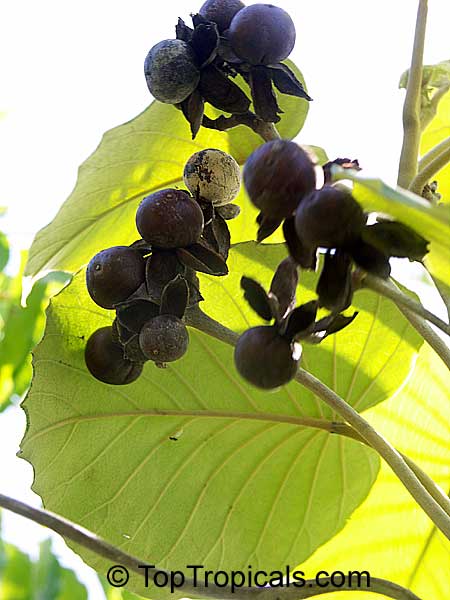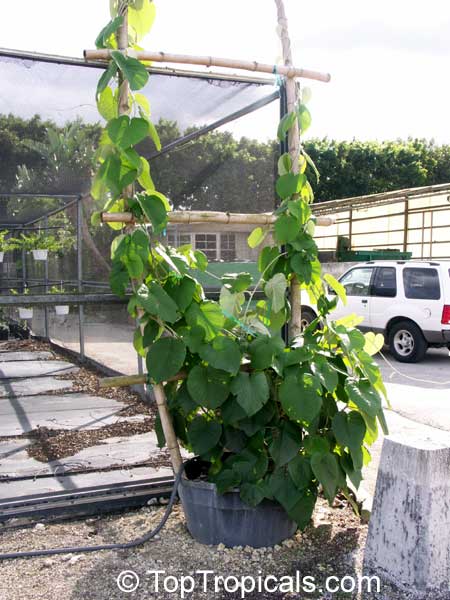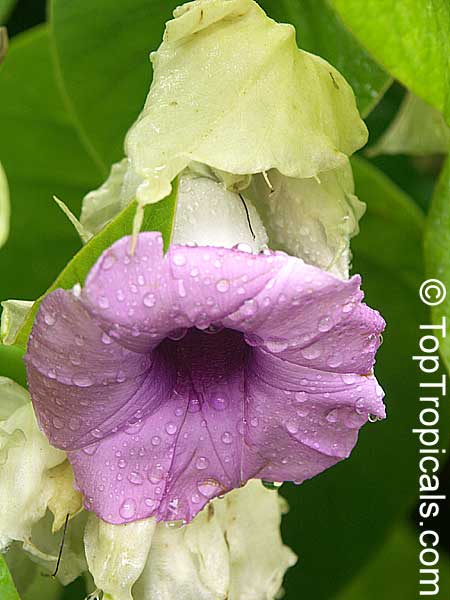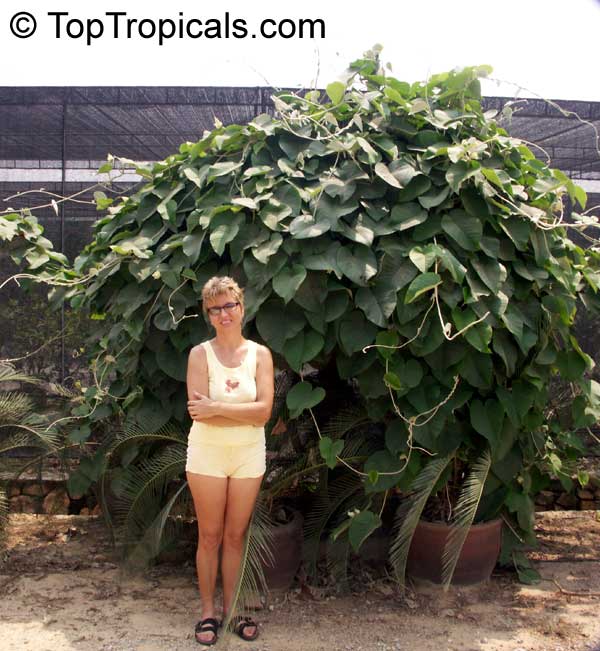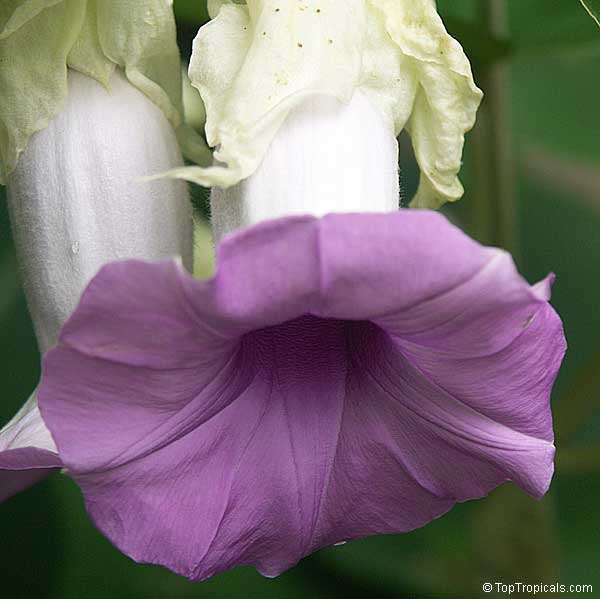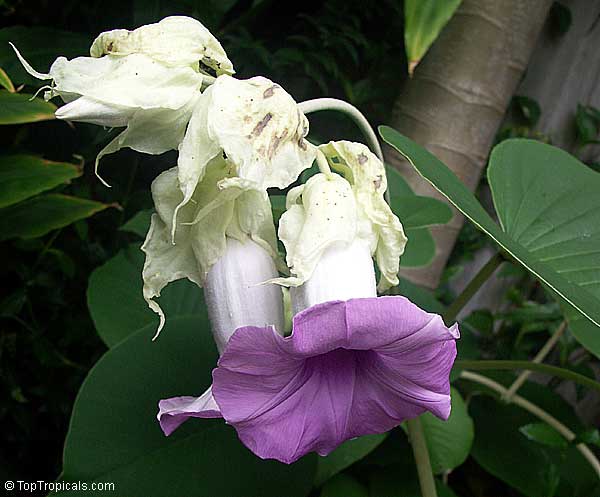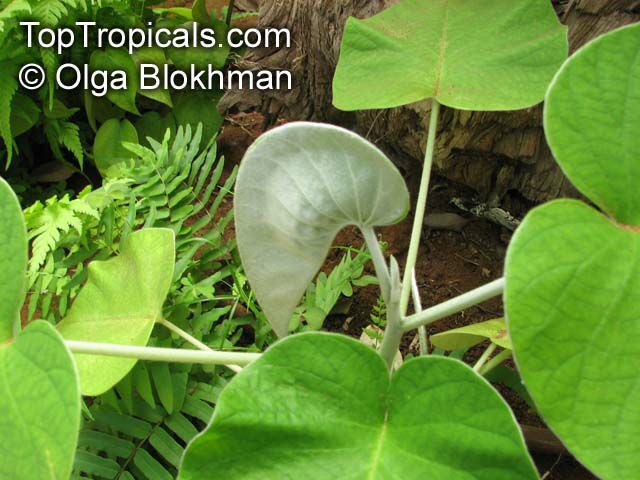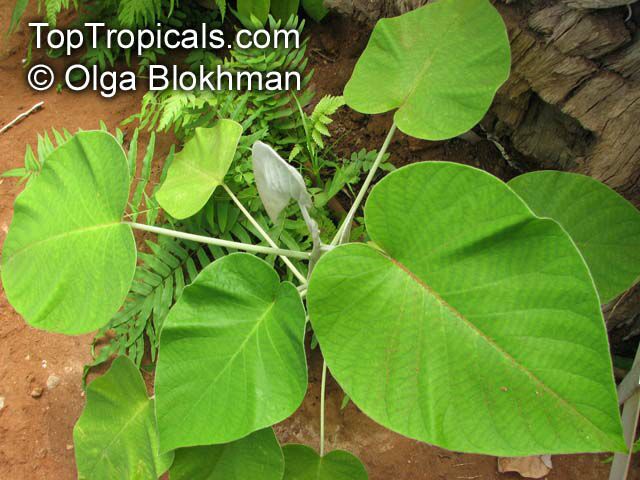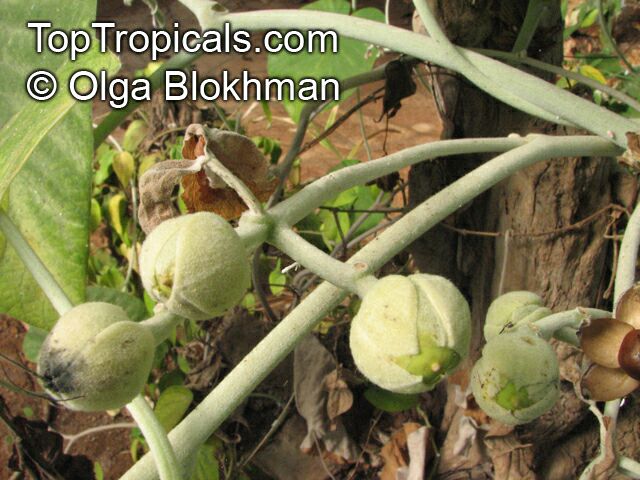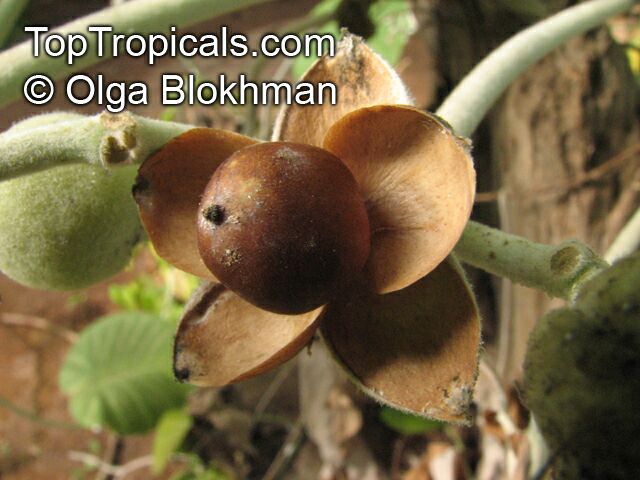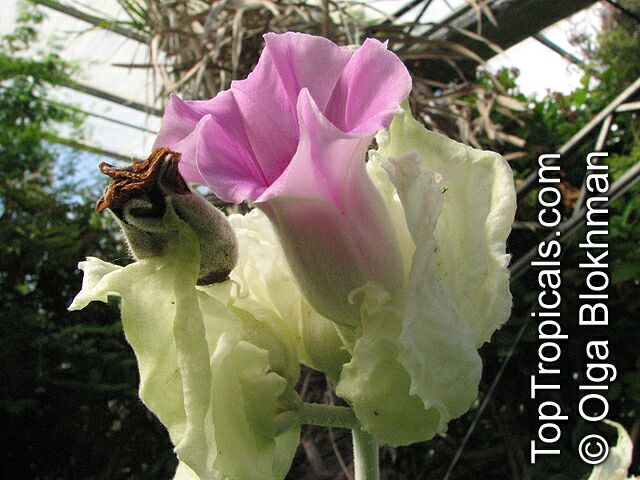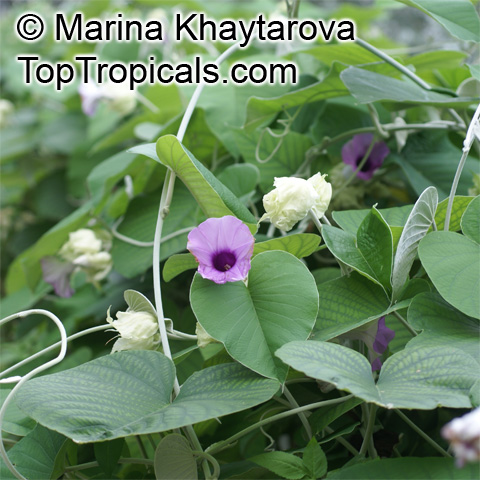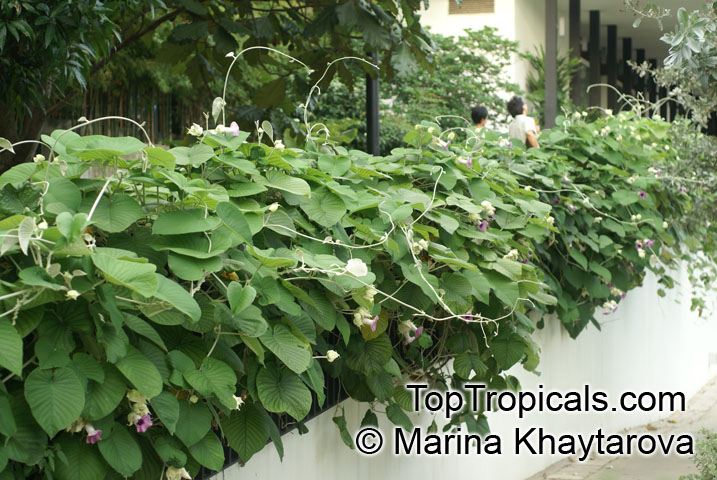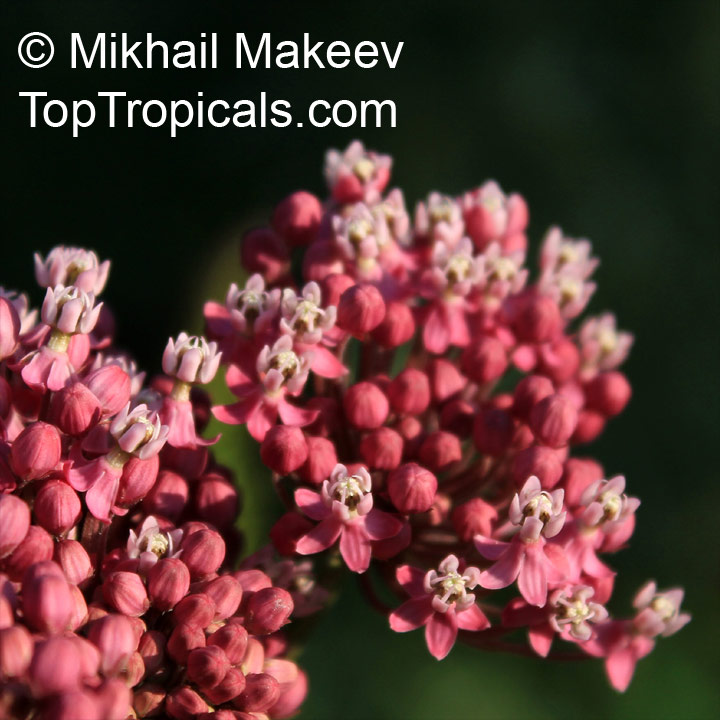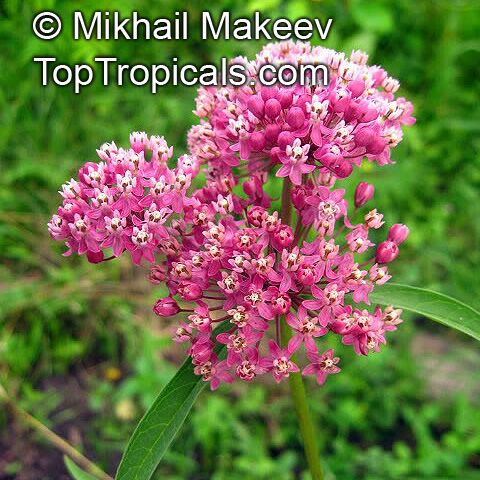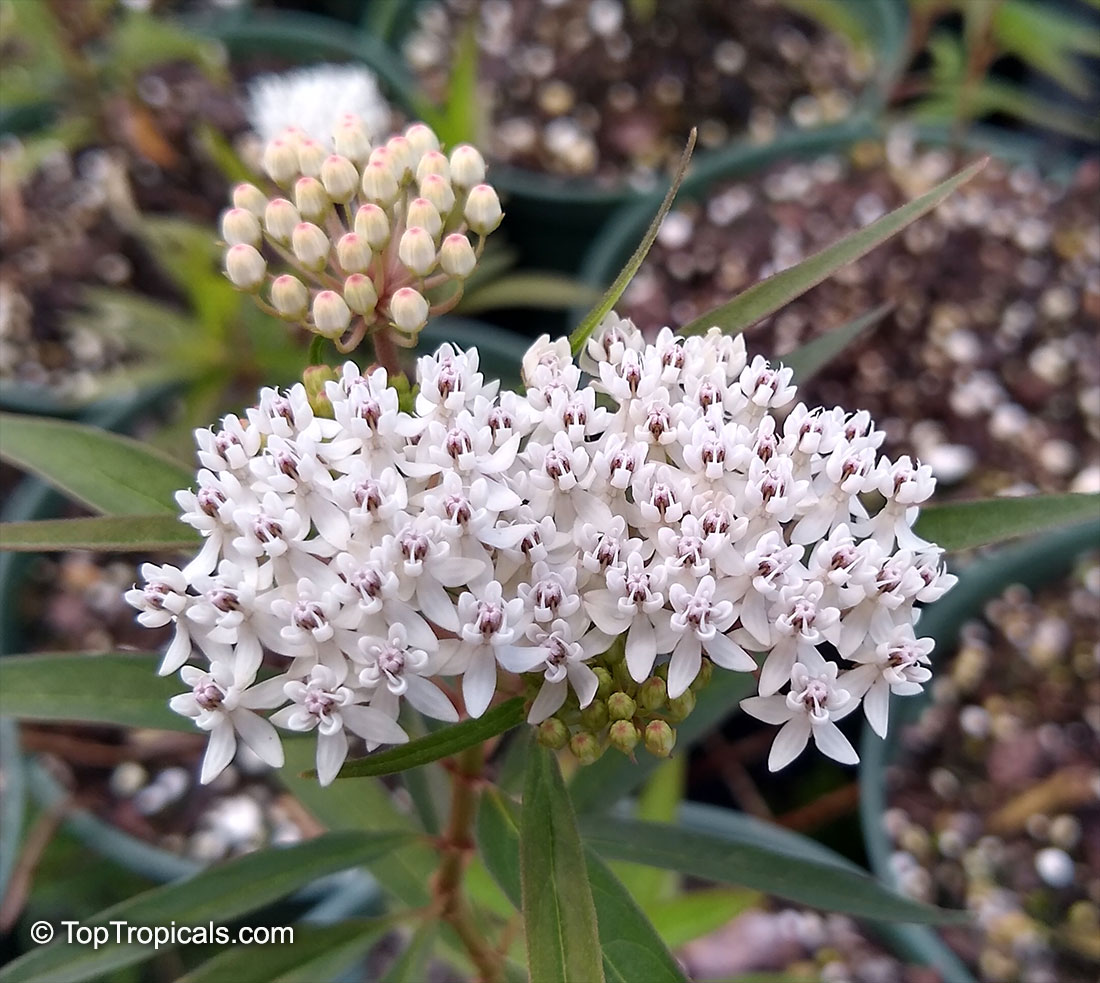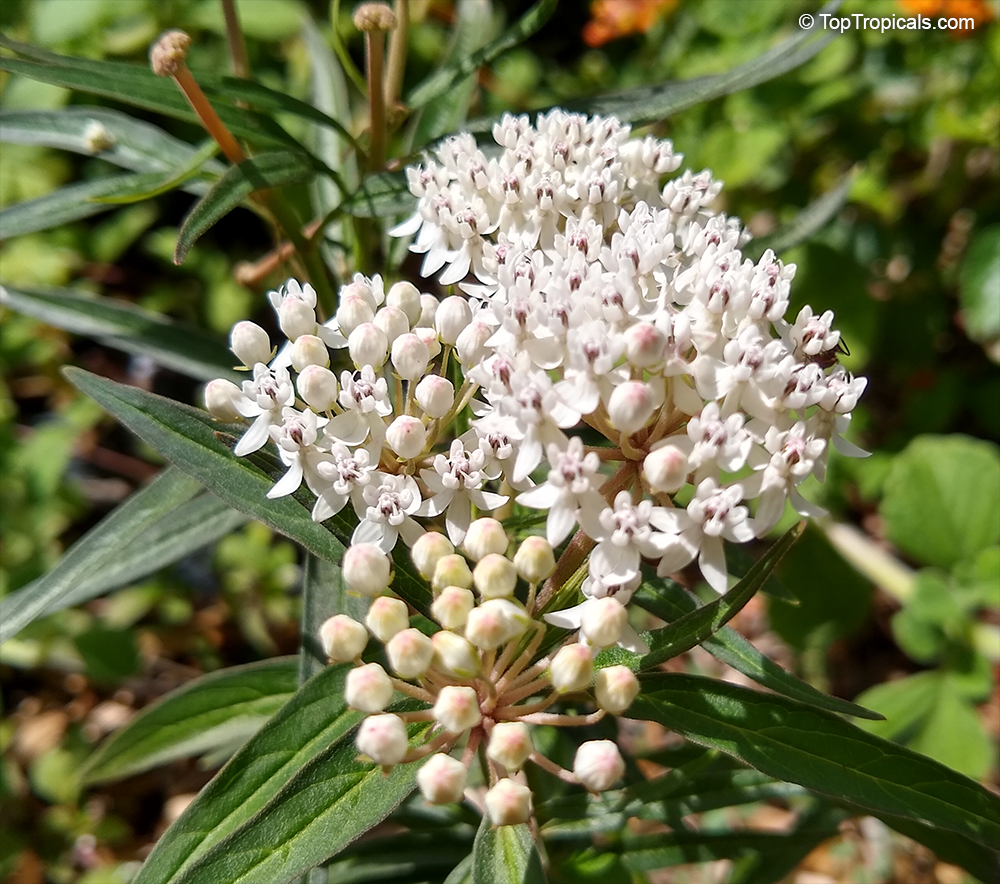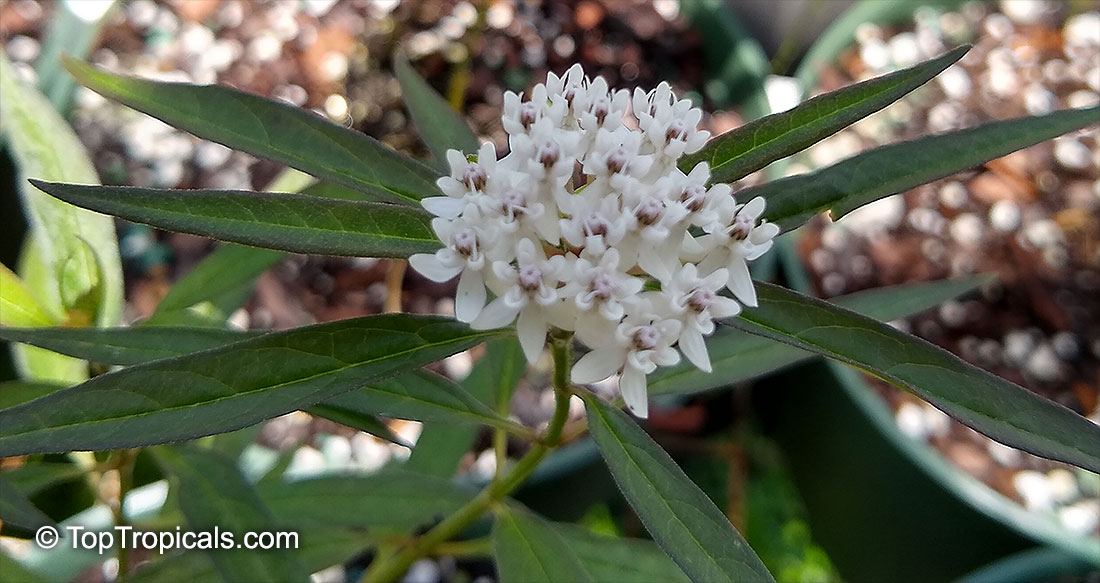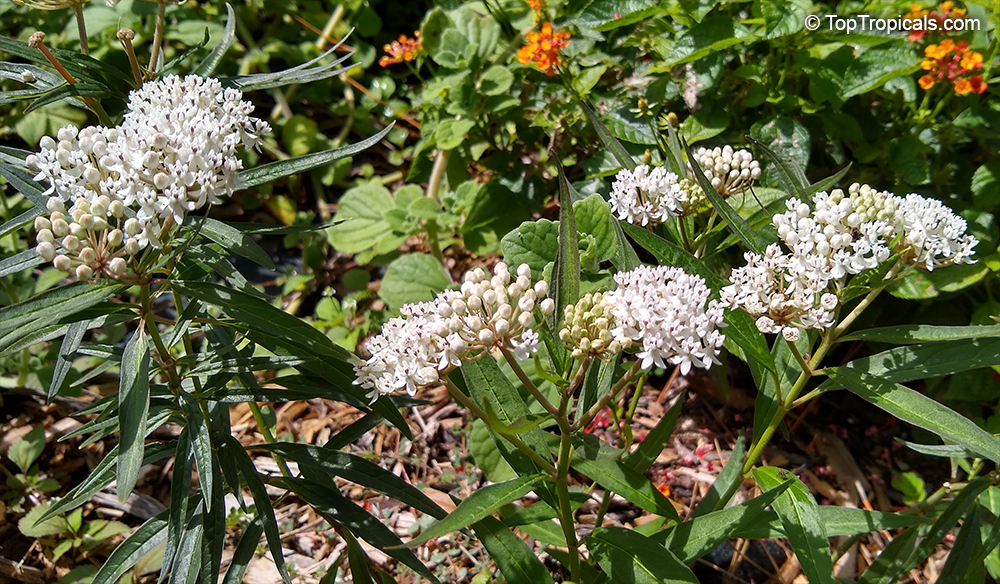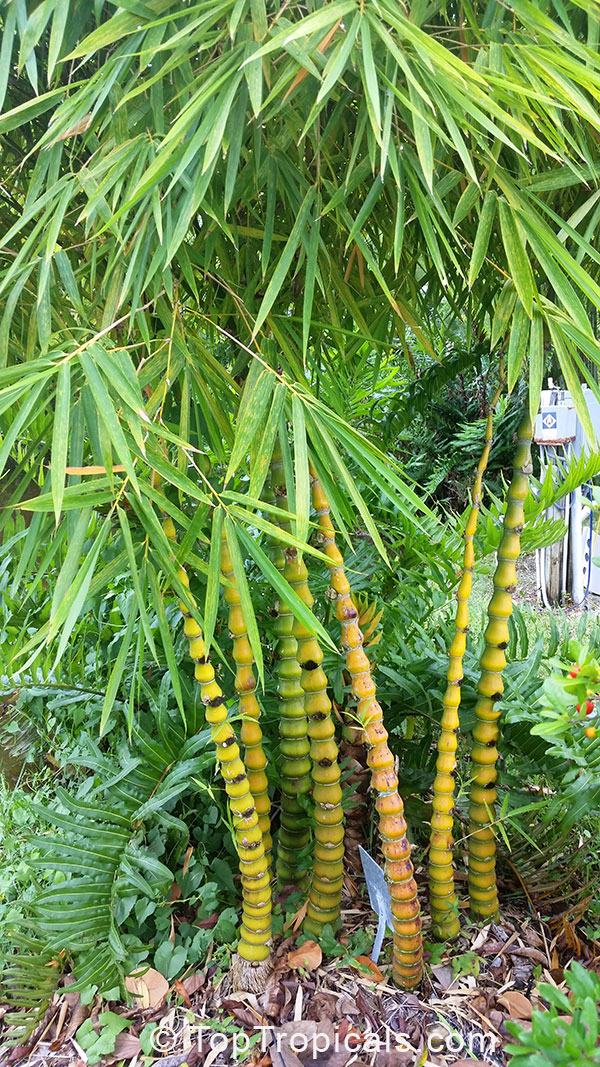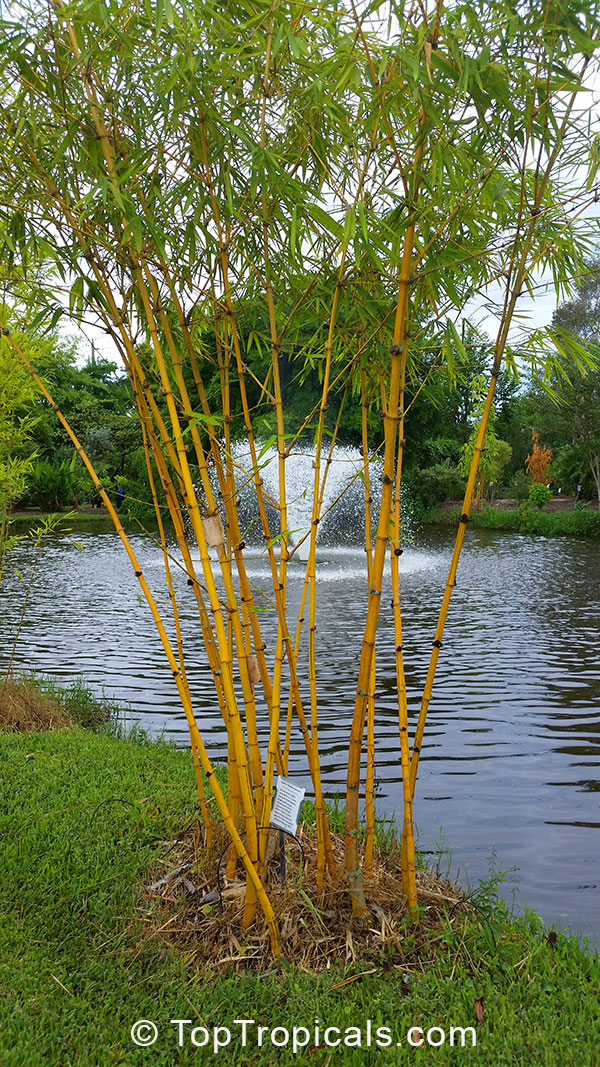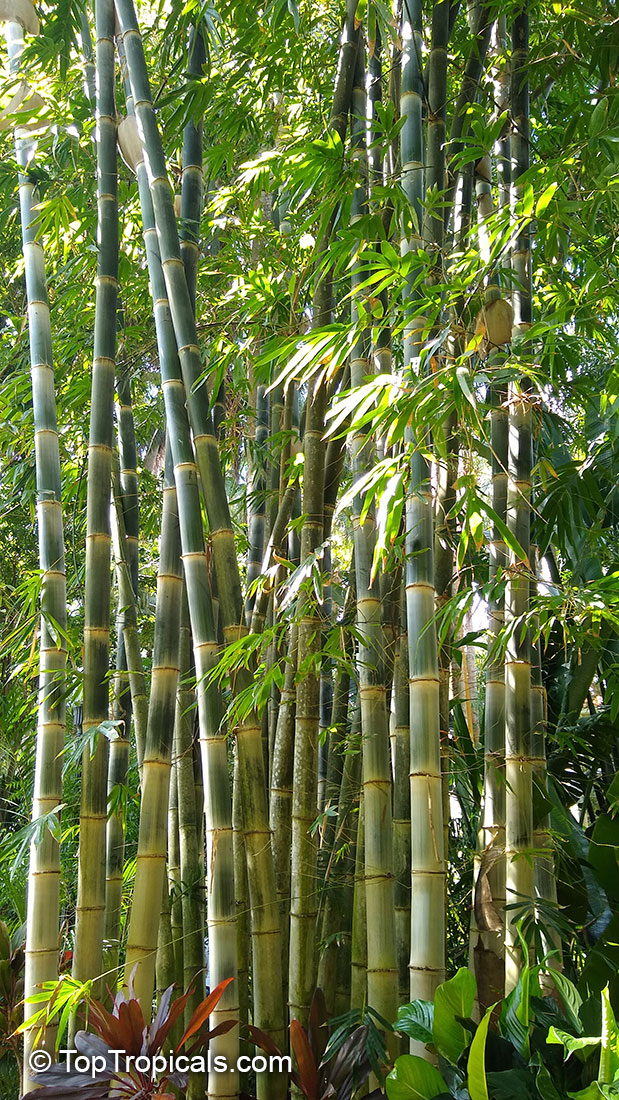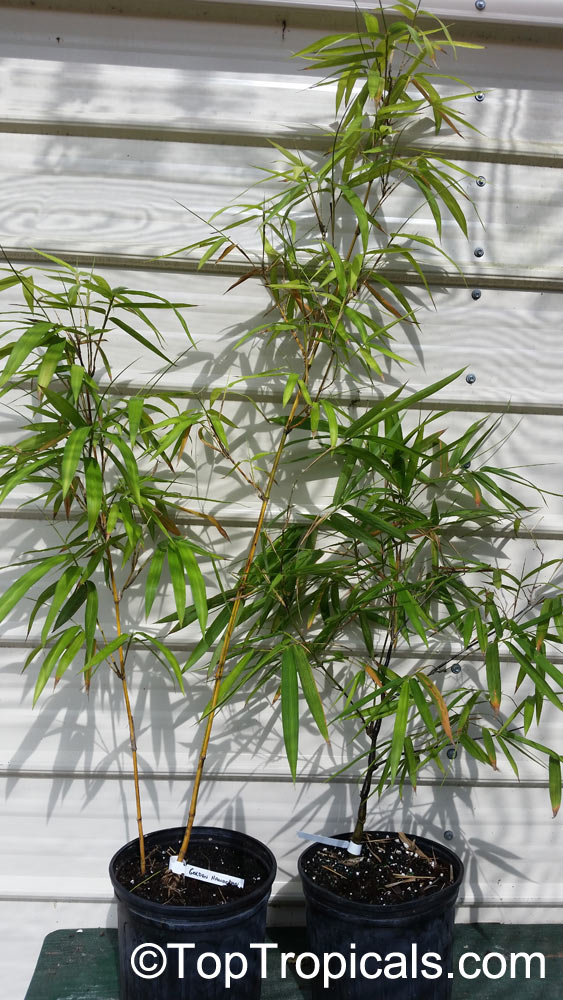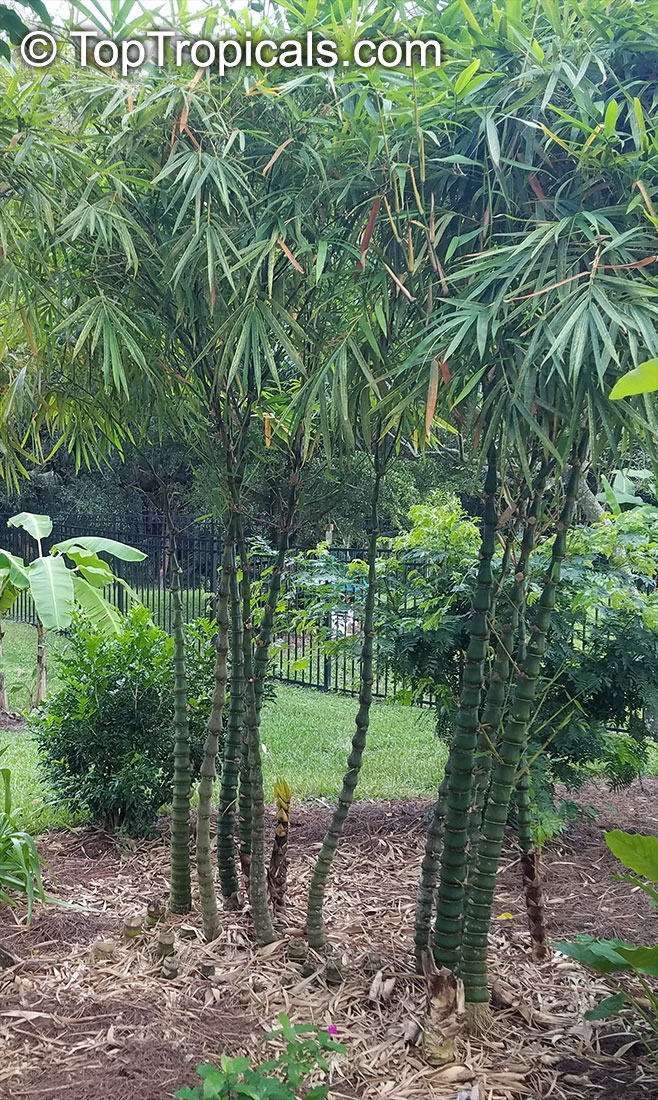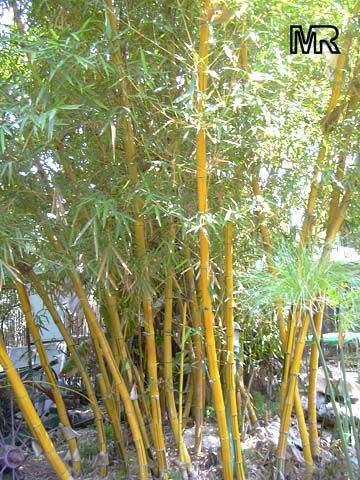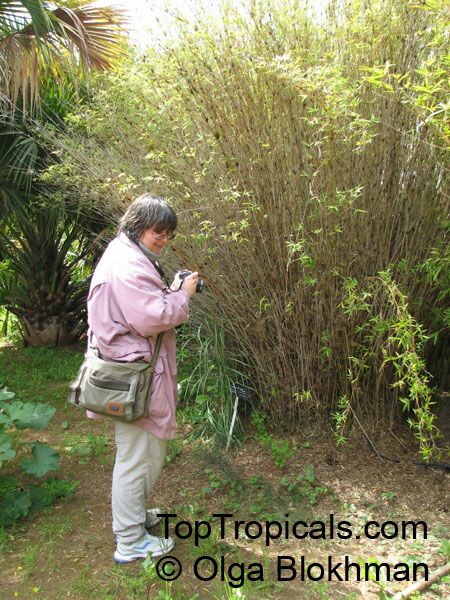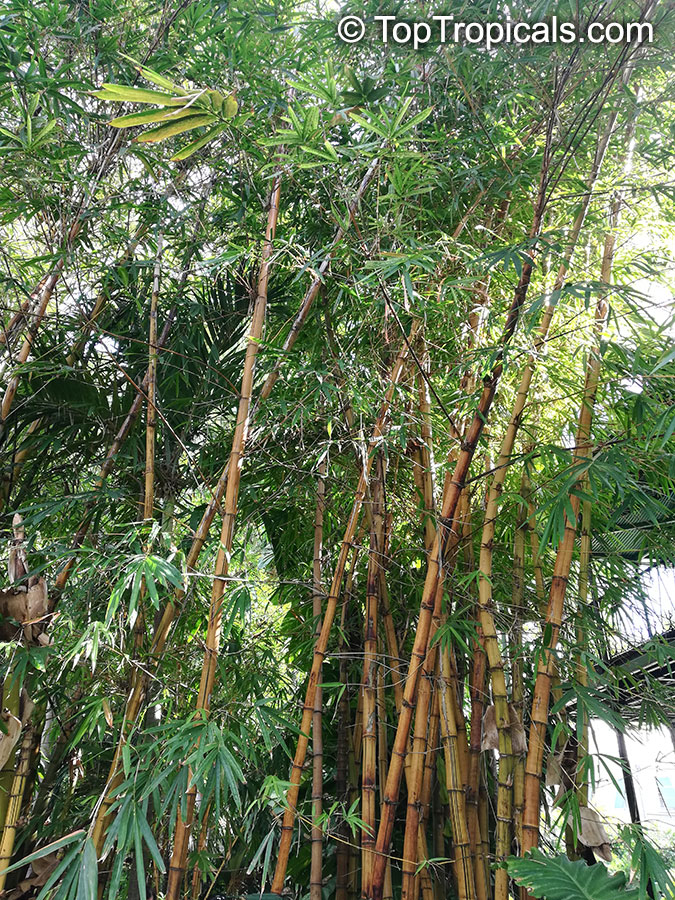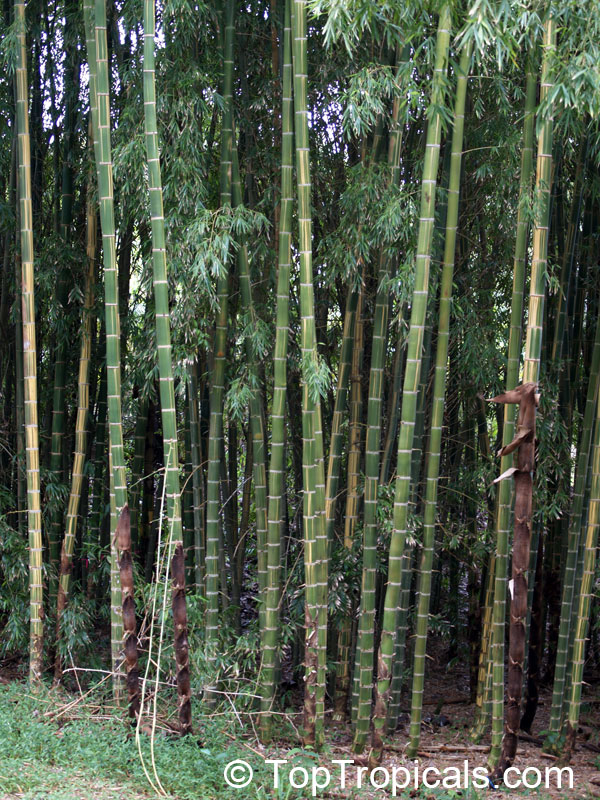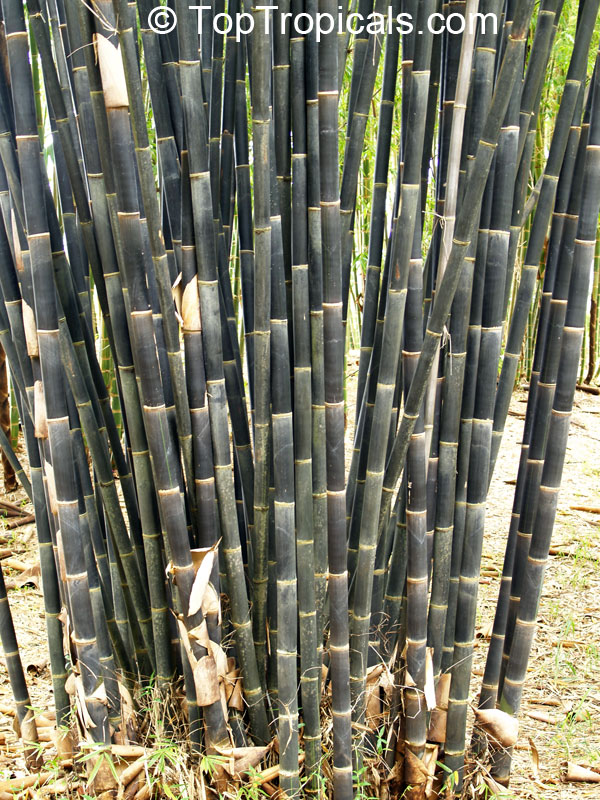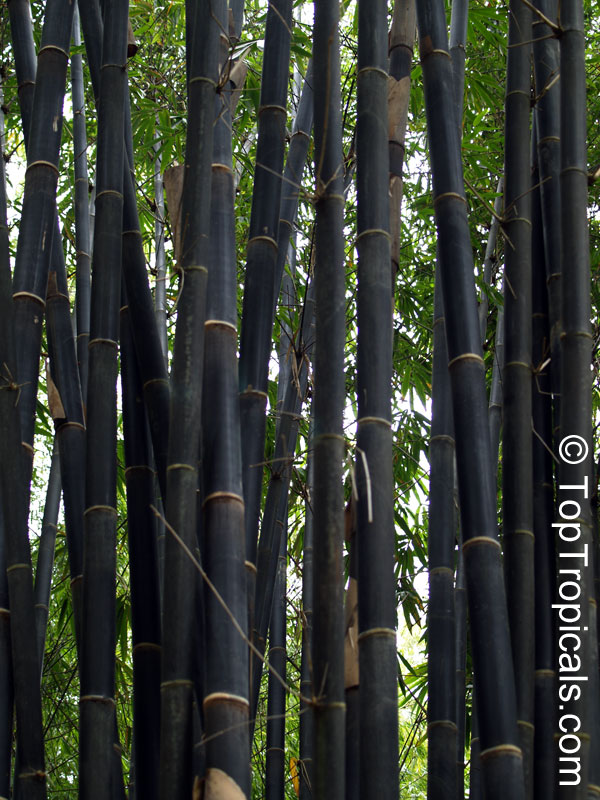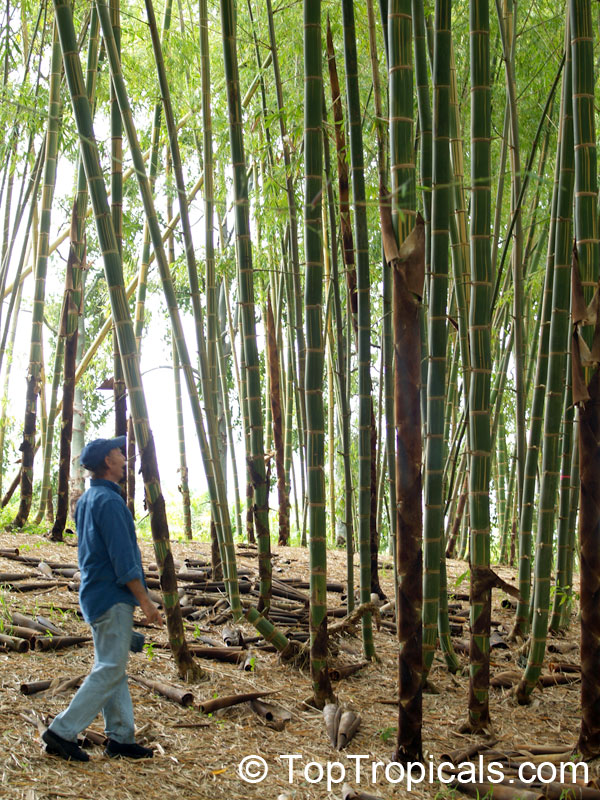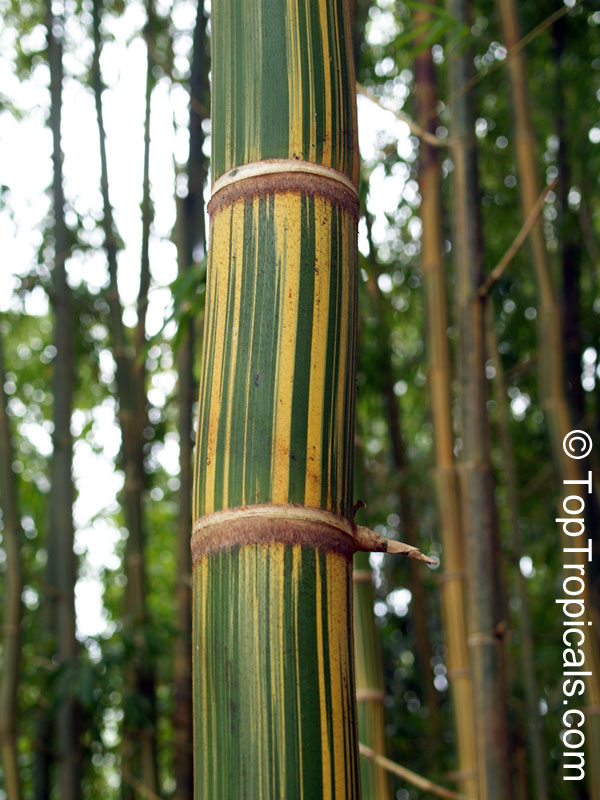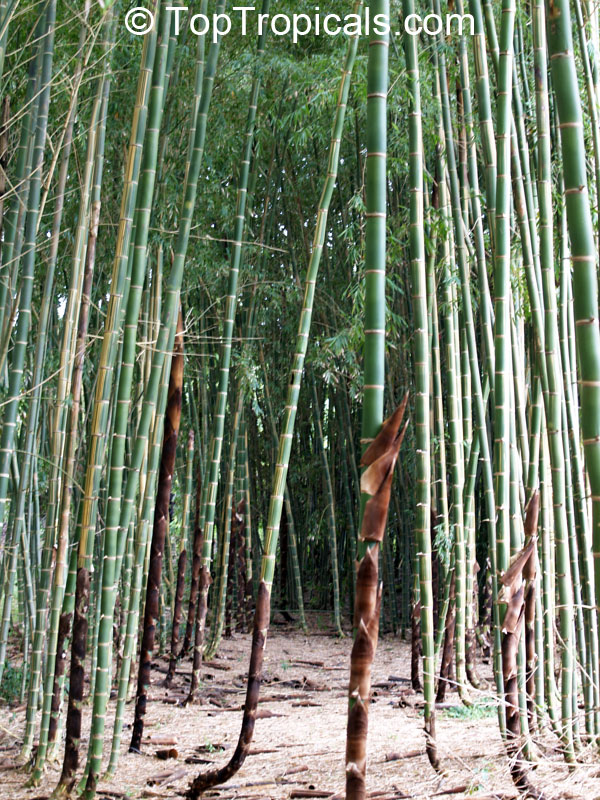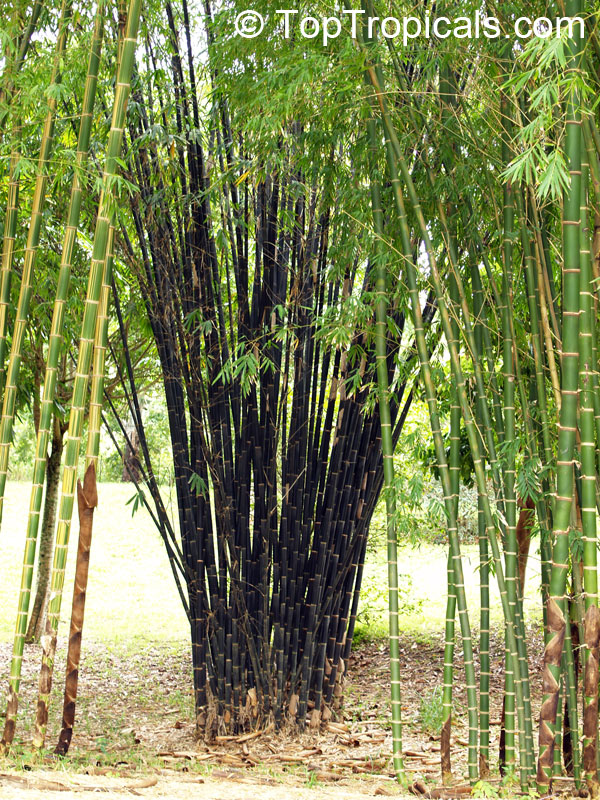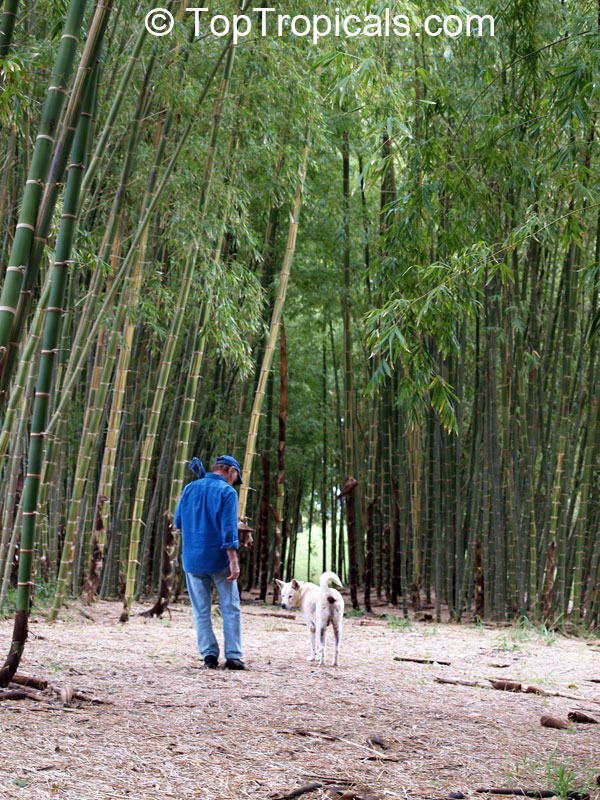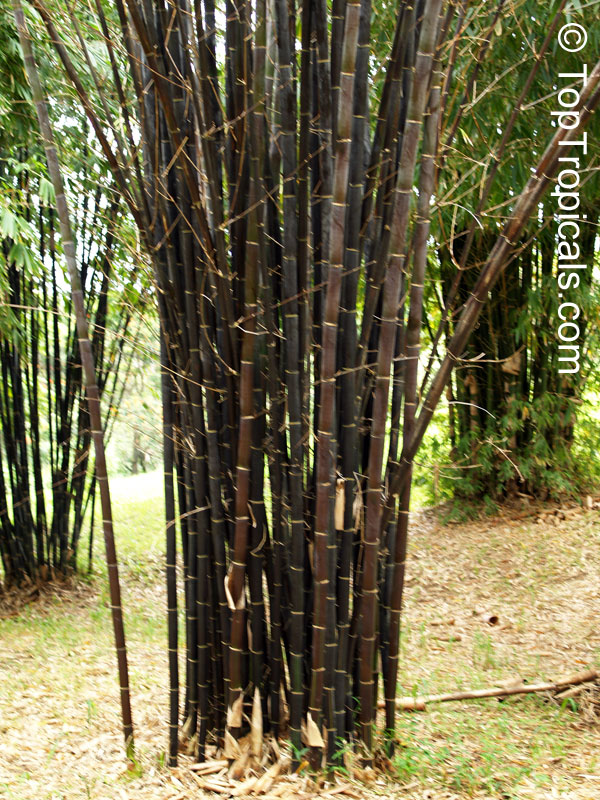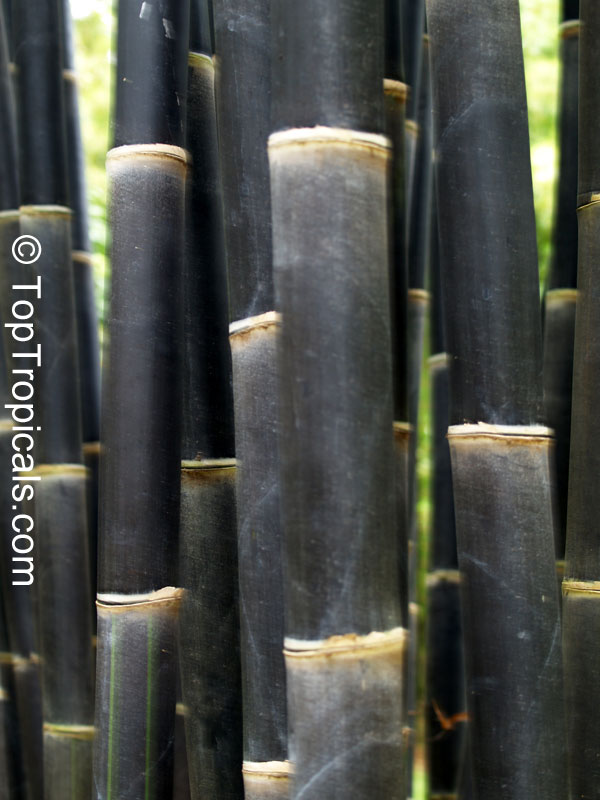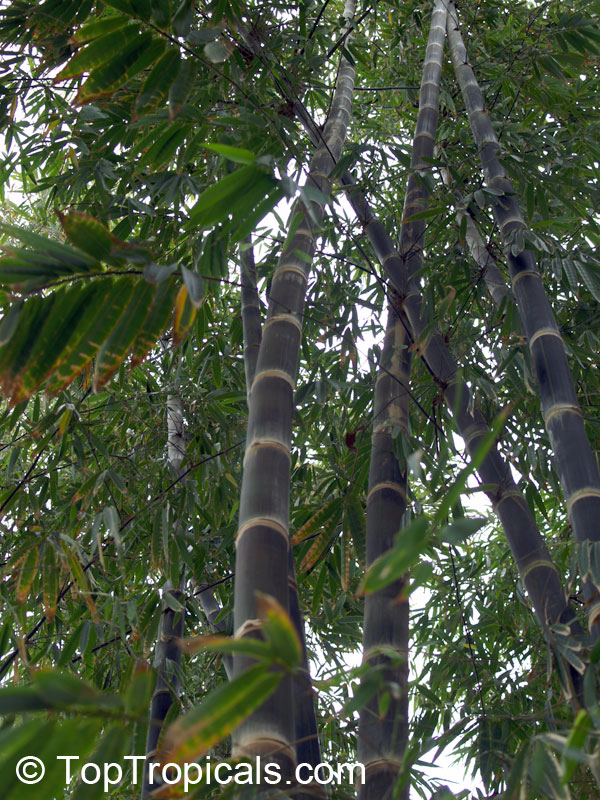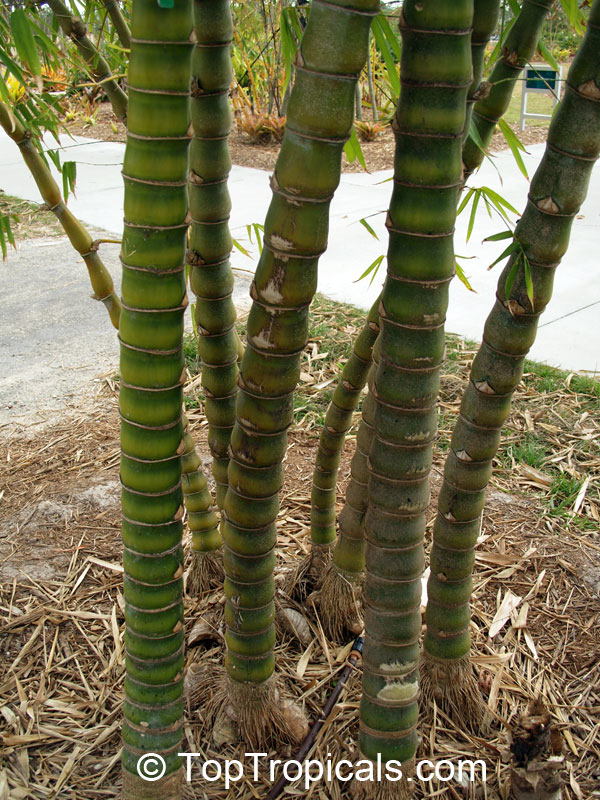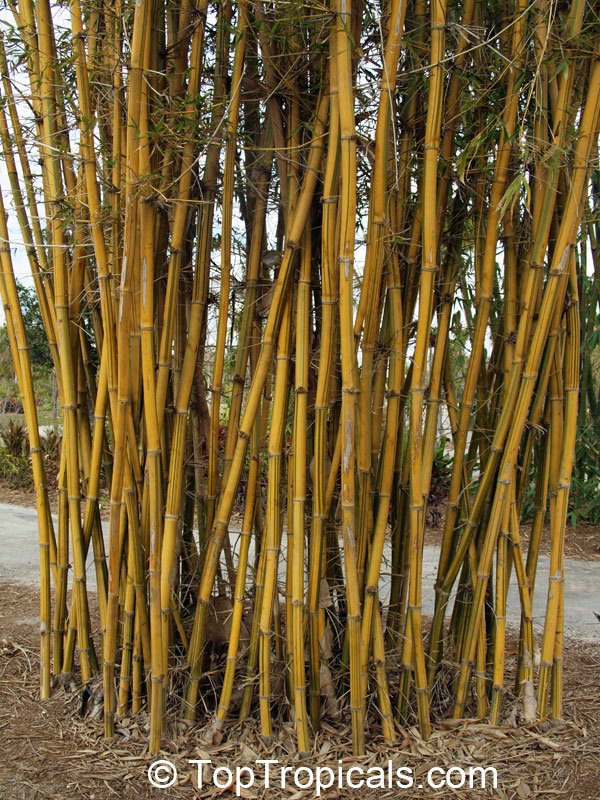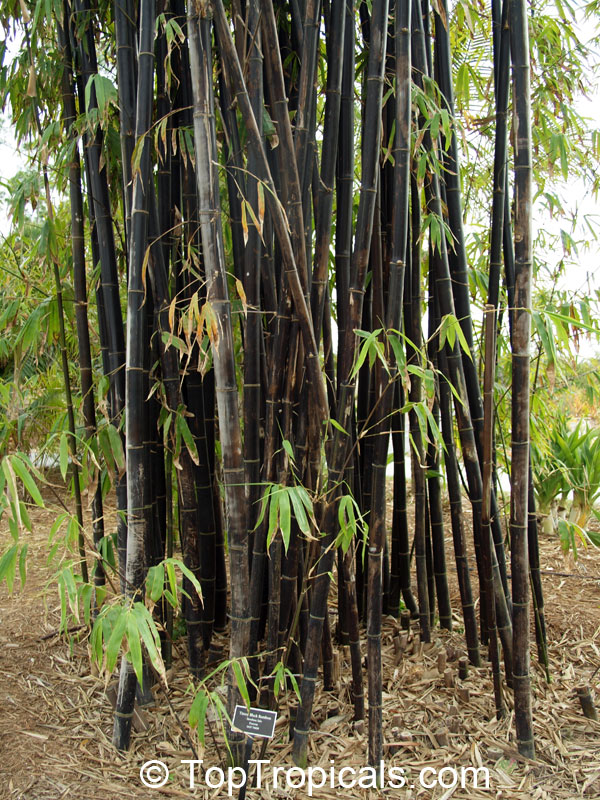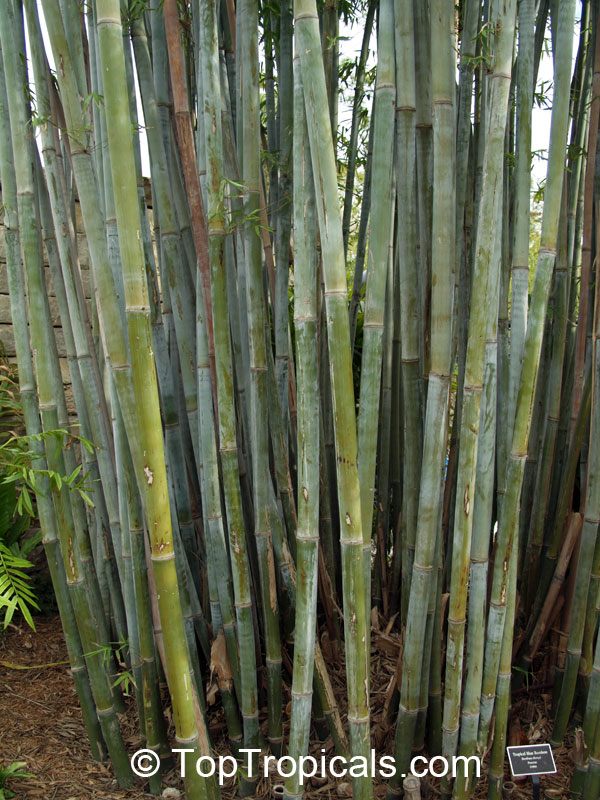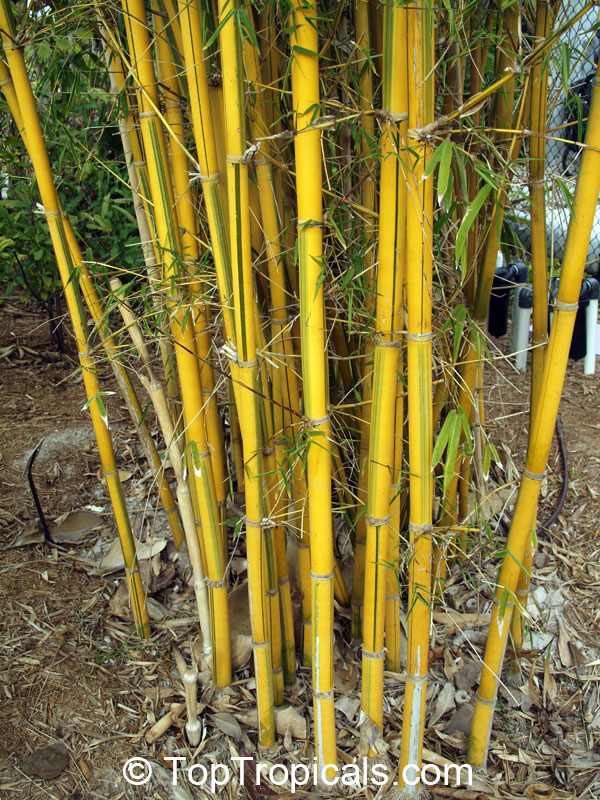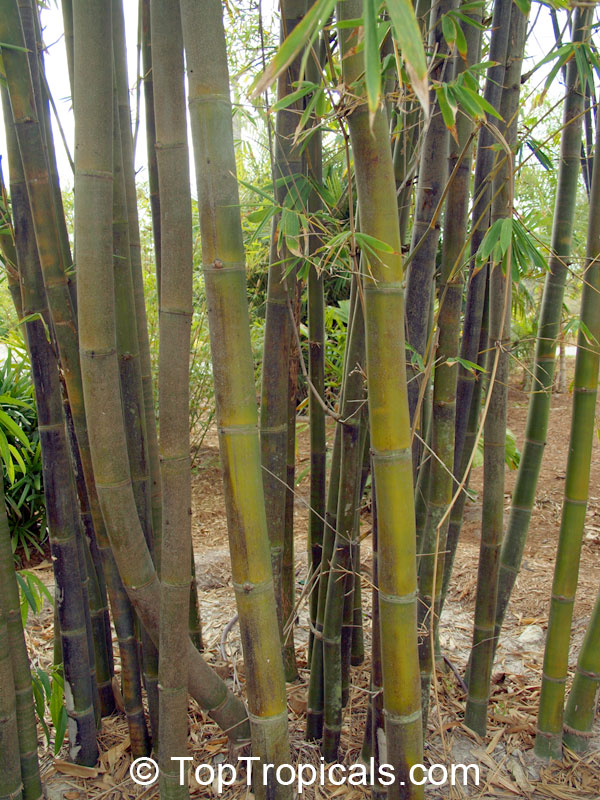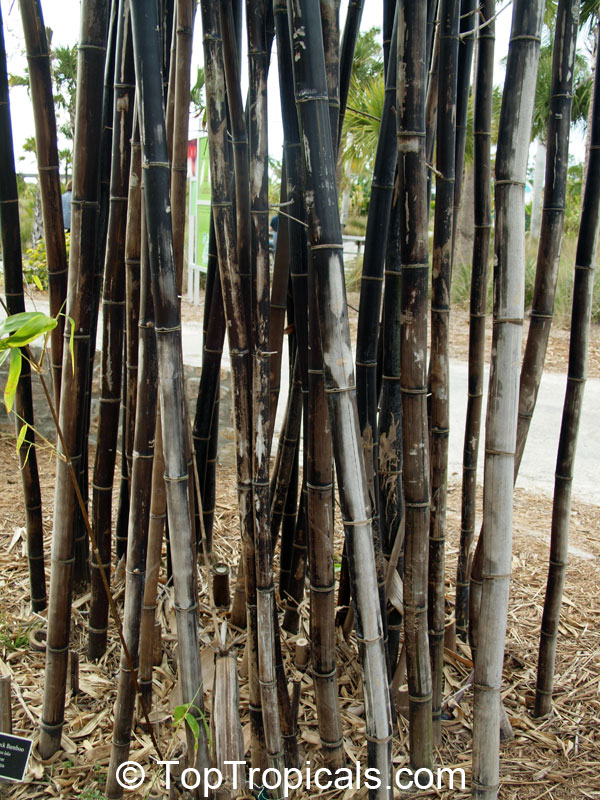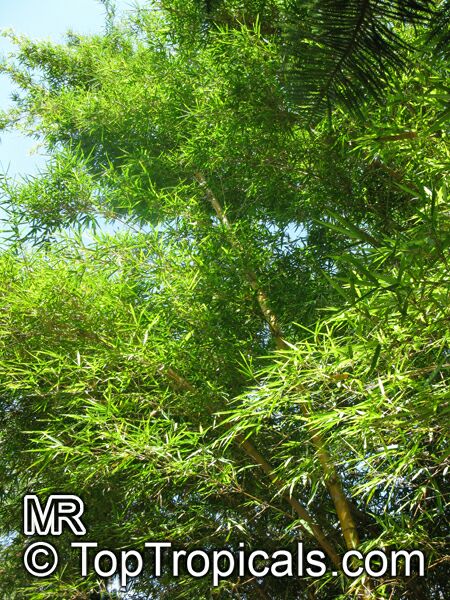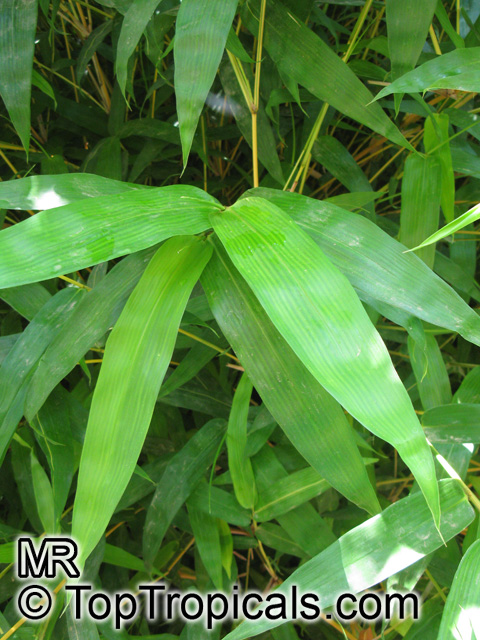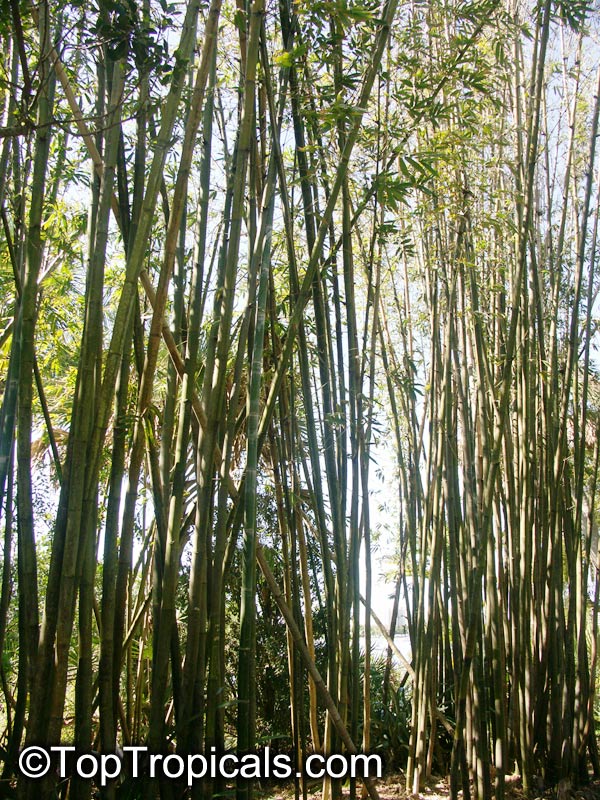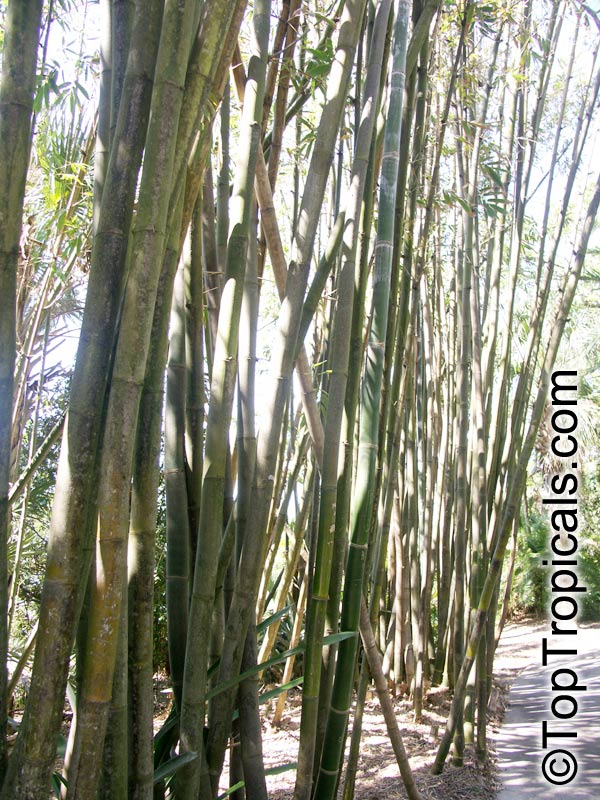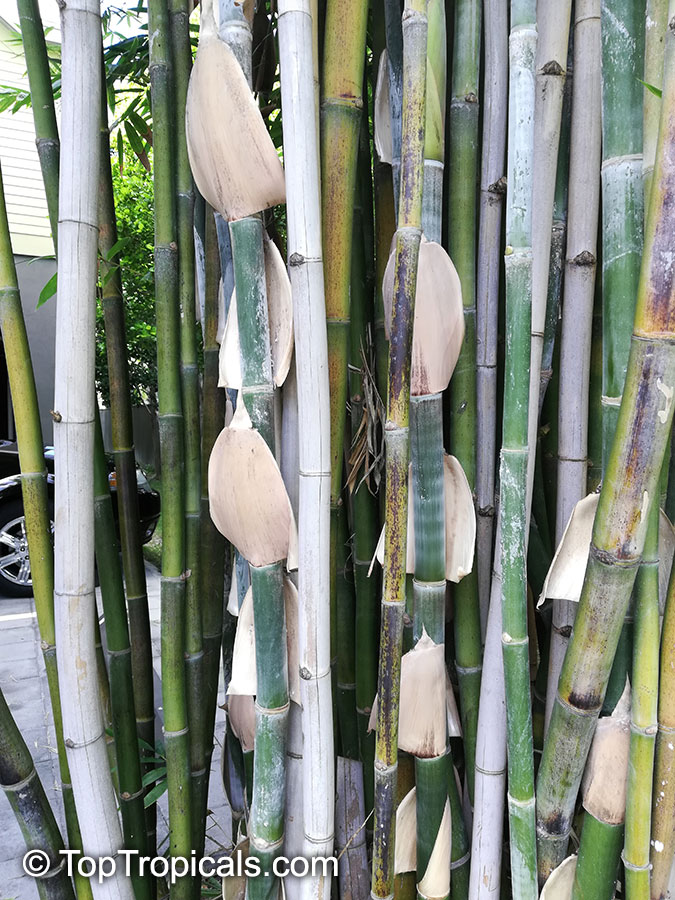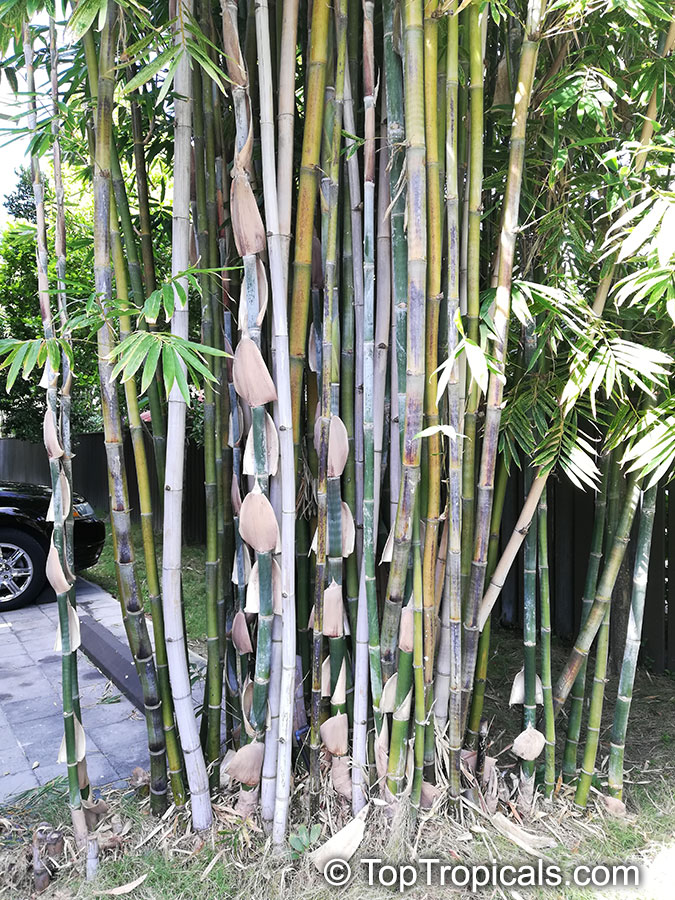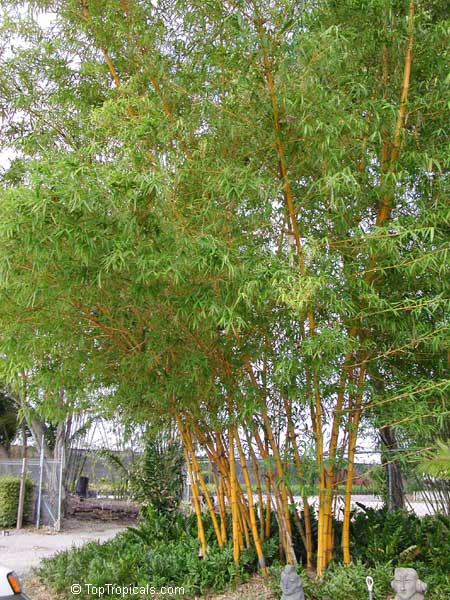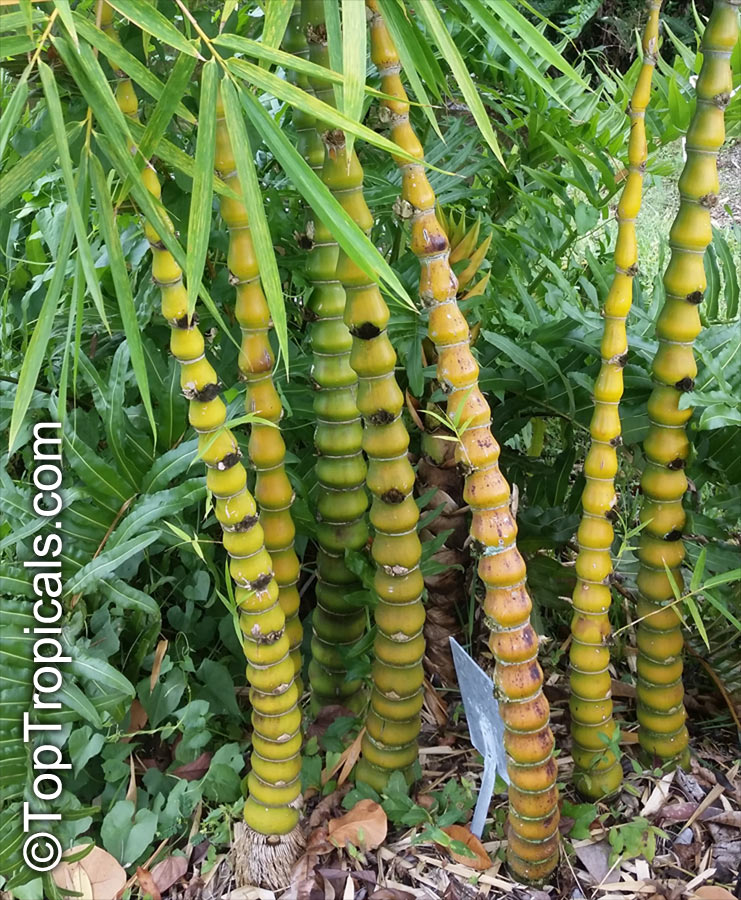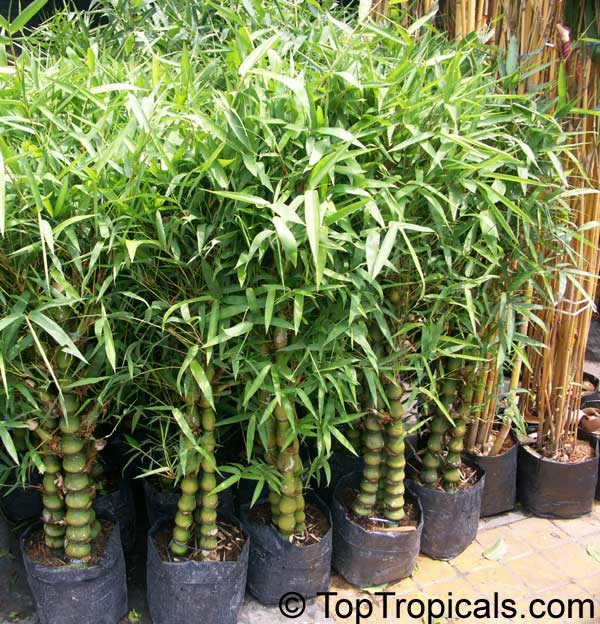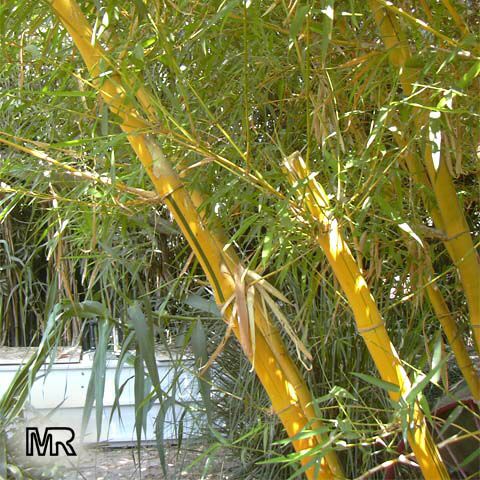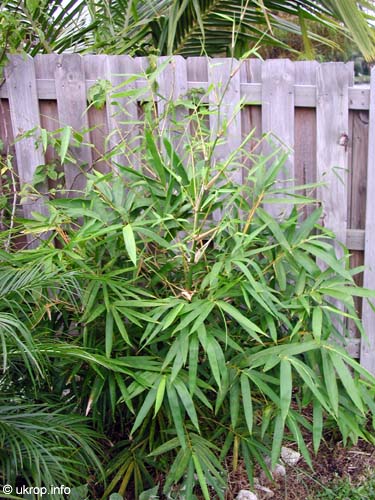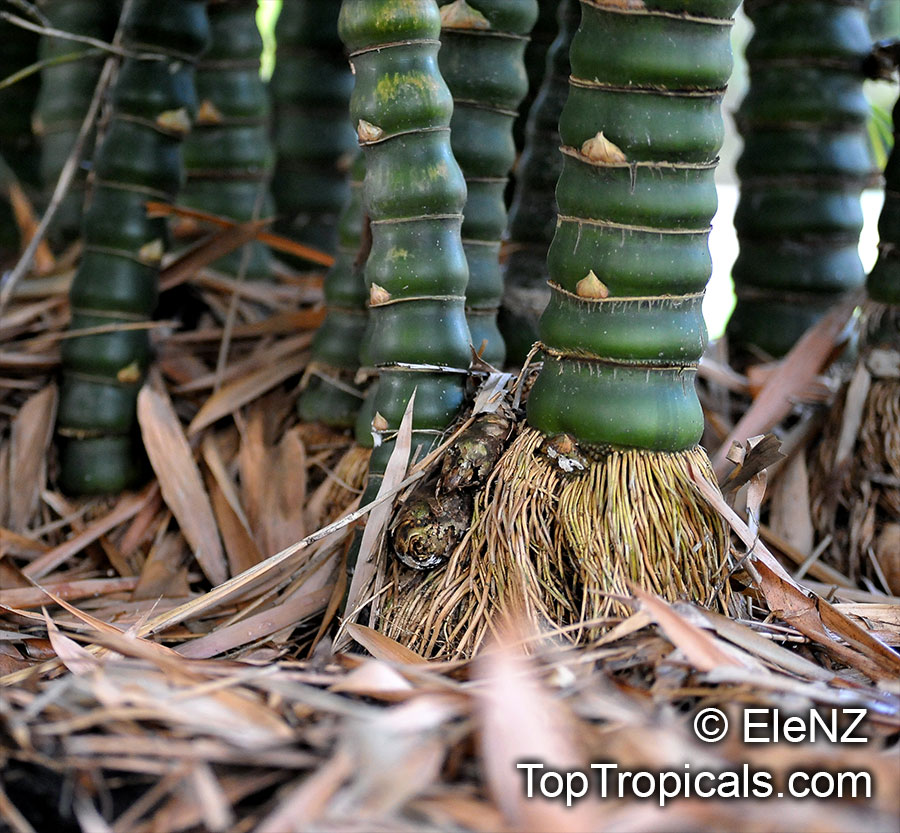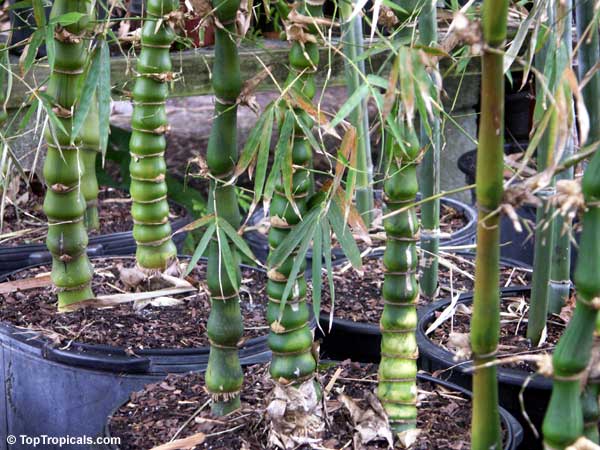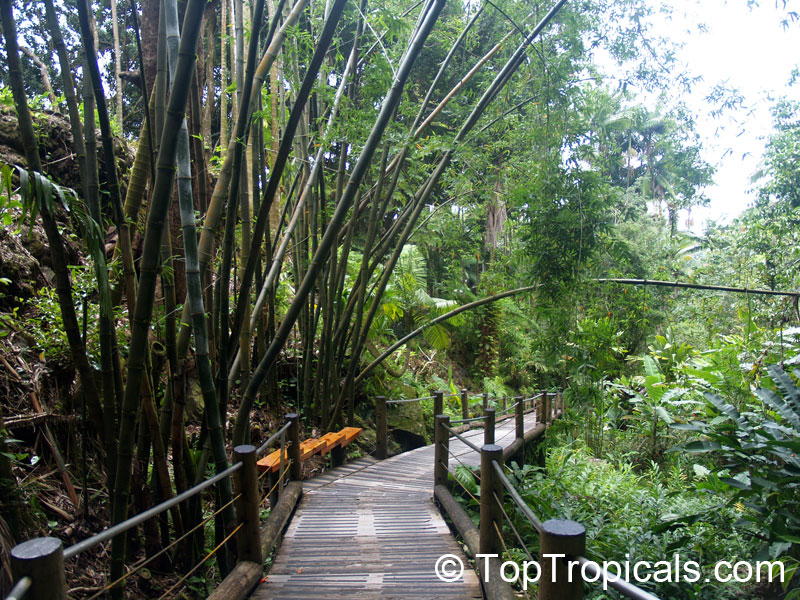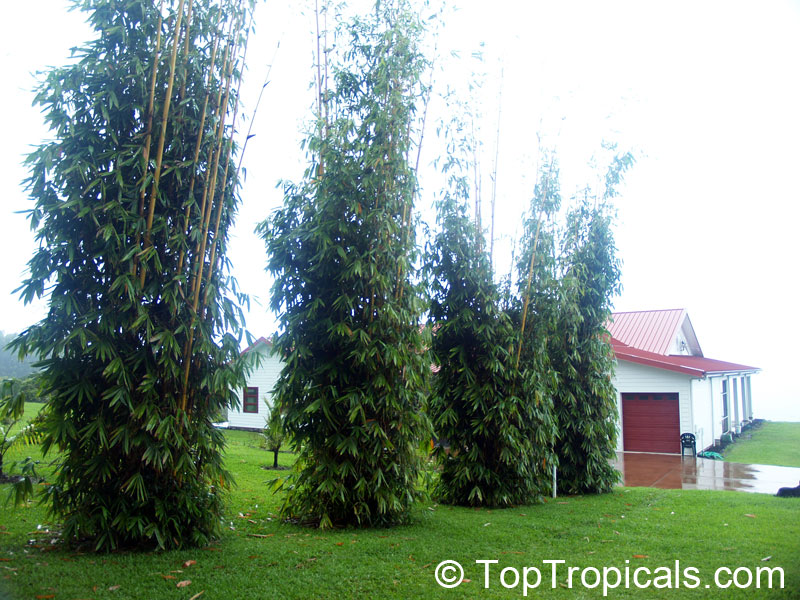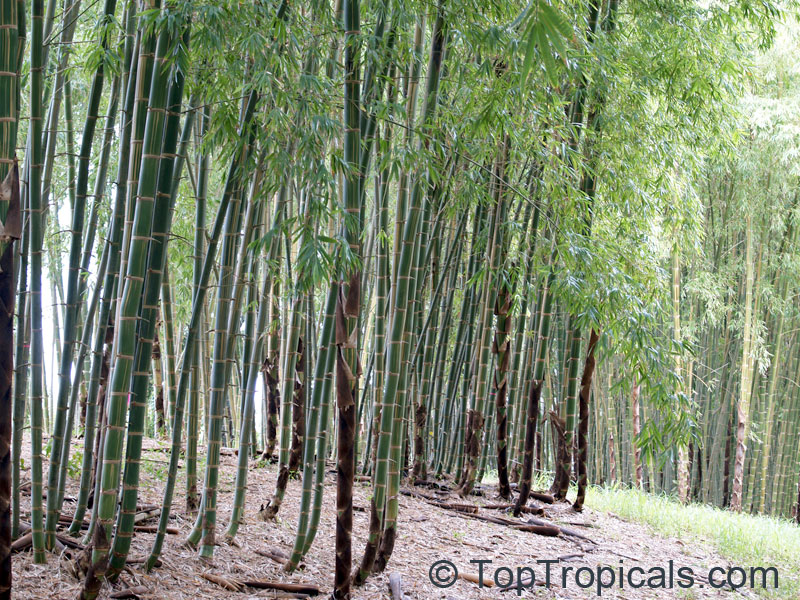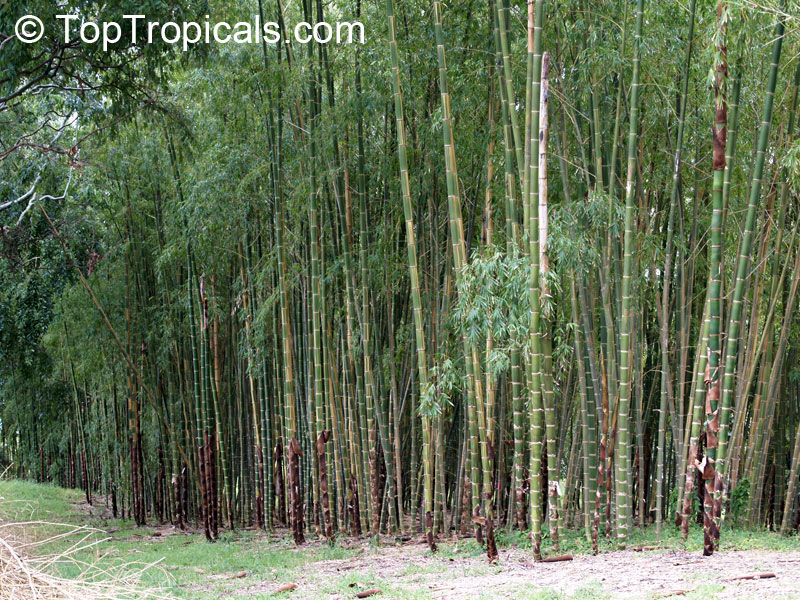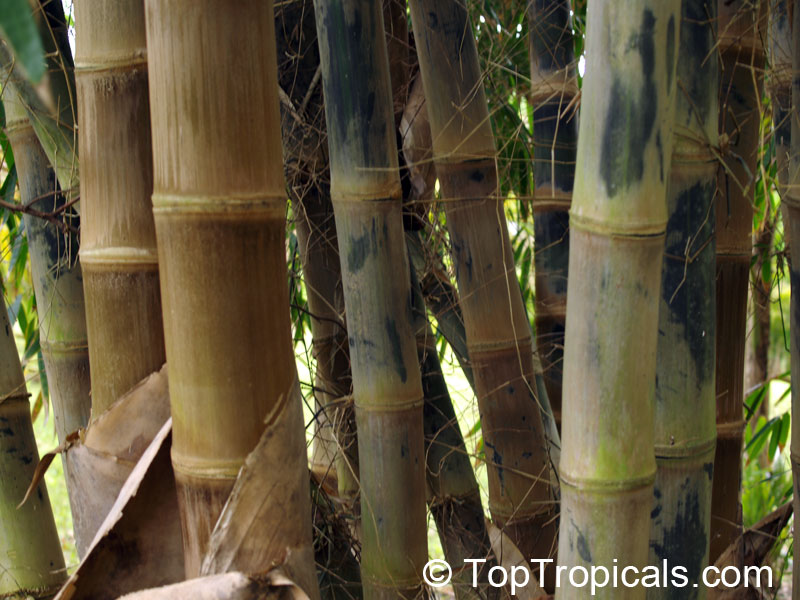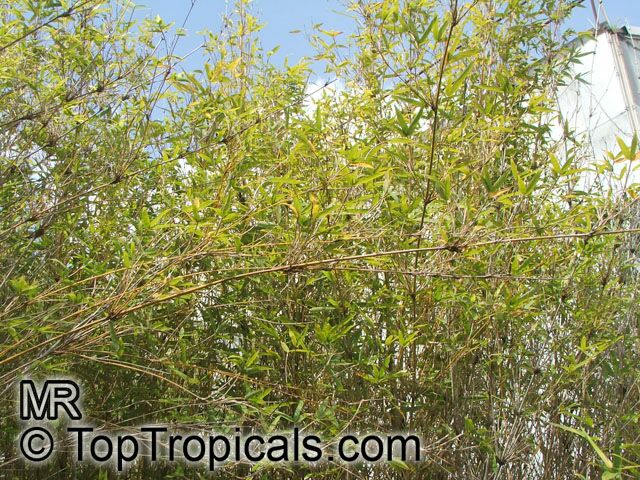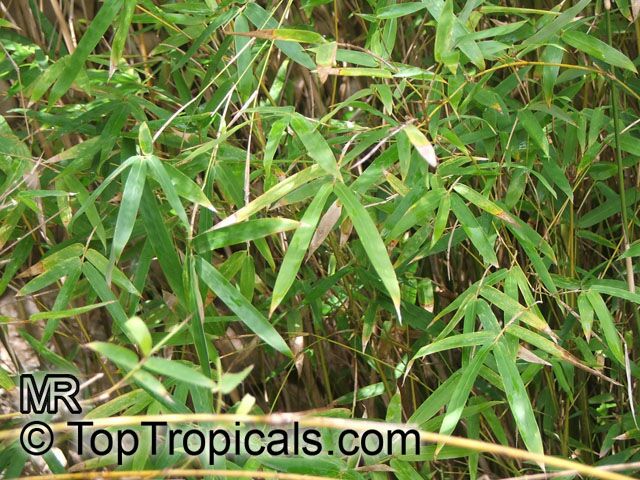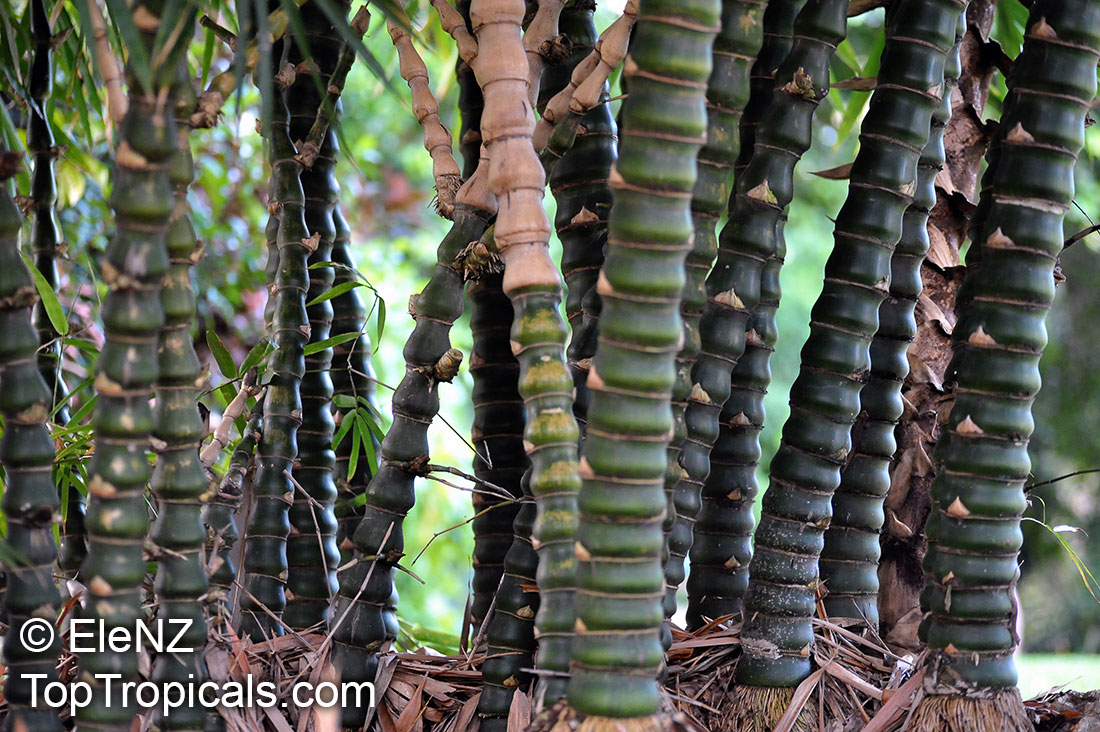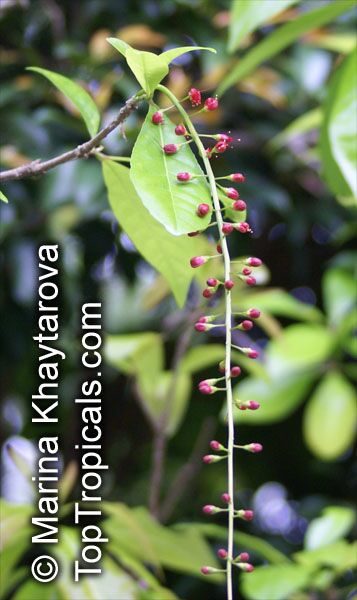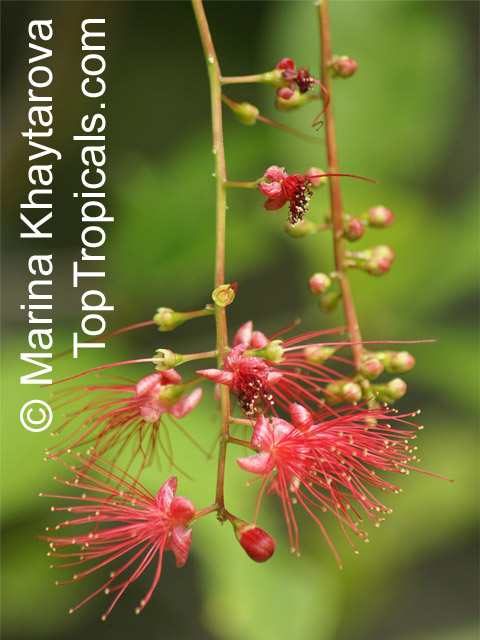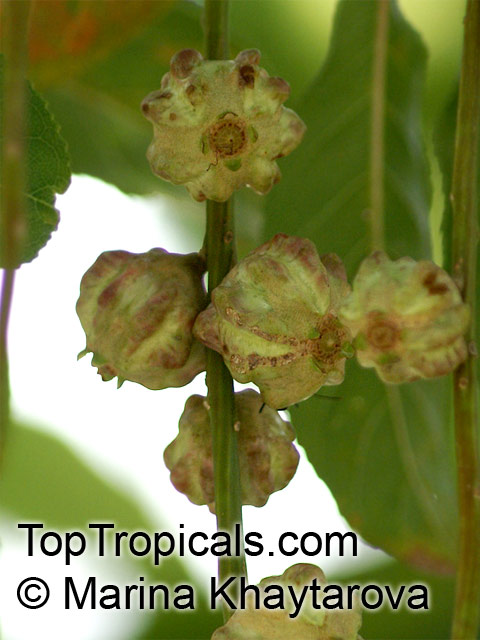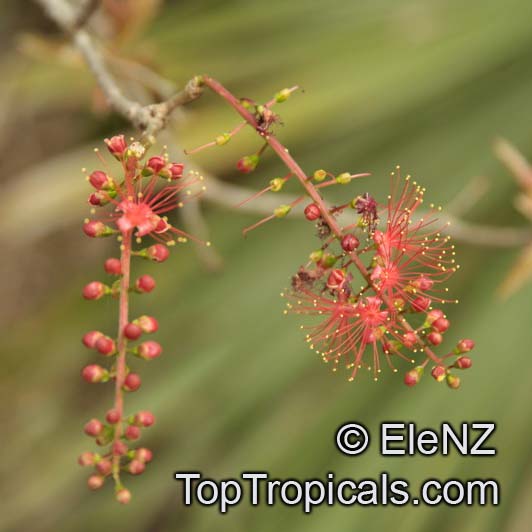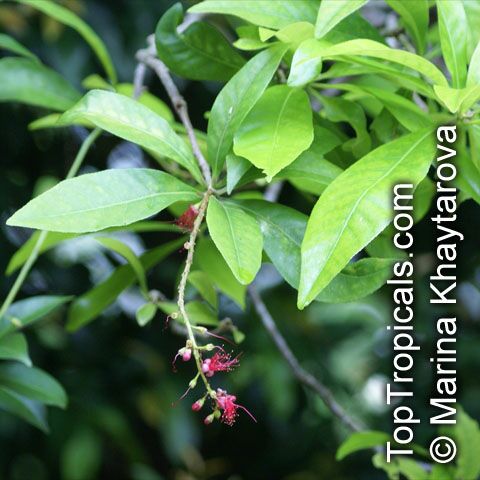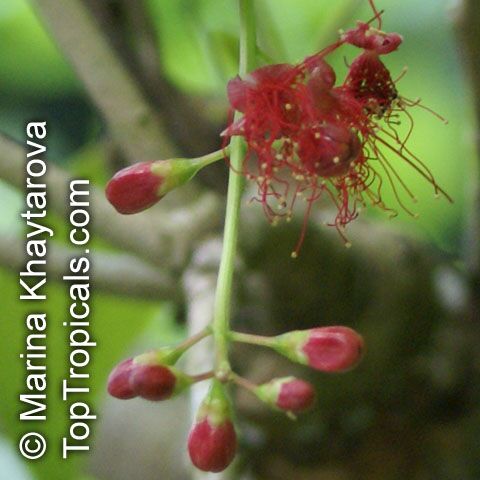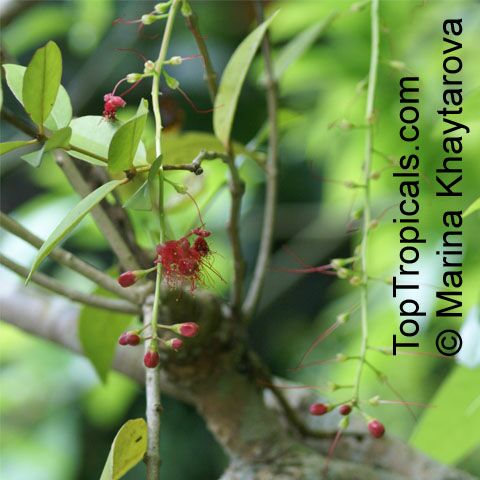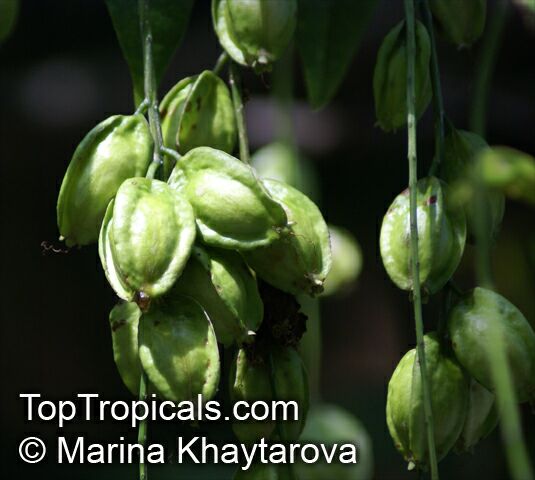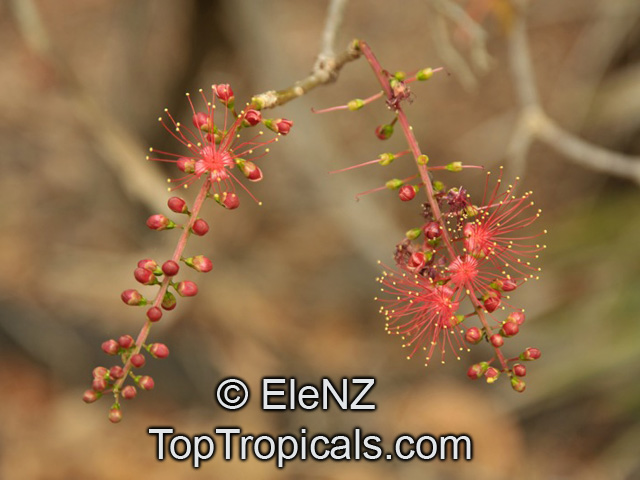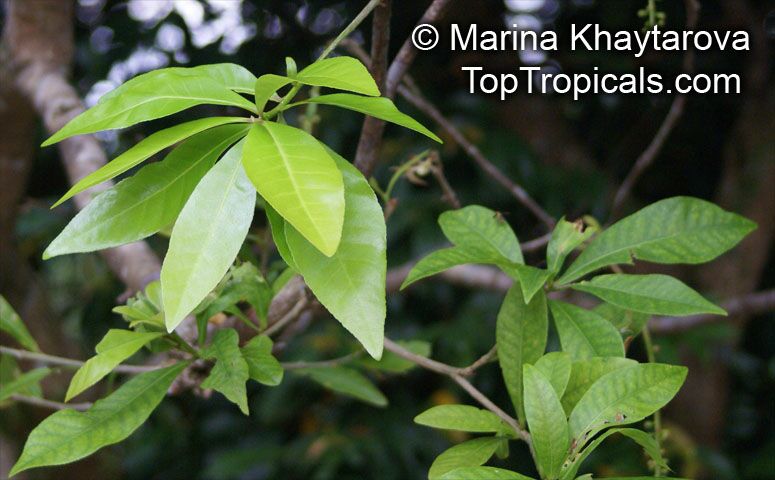Keep soil moist - Search results
Top Tropicals Plant Encyclopedia
| Number of plants found: 144 | Next | 
|
Go to page: | 1 | 2 | 3 | 4 | 5 | Last |
Botanical name: Acanthus ilicifolius
Common names: Holly-leaved Acanthus, Sea Holly, Holy Mangrove
Family: Acanthaceae
Origin: India, Polynesia












Acanthus ilicifolius, or Holly-leaved Acanthus, is a perennial plant native to India and Polynesia. This plant can reach a large size, typically growing up to 5-10 ft tall. It has a semi-woody and sprawling structure, with thin stems coated in a glossy green hue speckled with white. The leaves are oval-shaped with a pair of spines at each angle.
Holly-leaved Acanthus prefers full sun to semi-shade and can be grown either in a bog or aquatic environment. It requires plenty of moisture as well as regular watering to stay healthy and vibrant. This plant also tolerates flooding and salty conditions near the seaside very well. Therefore, it can be a great addition to any garden in the USDA hardiness zone of 8-11.
The Holly-leaved Acanthus is adorned with clusters of beautiful blue, lavender and purple flowers. It is also an ethnomedical plant, hence its use in traditional medicine. Its stems are thorny or spiny and may require careful handling when handling.
When growing Holly-leaved Acanthus in a pot, it is essential to keep the soil moist and use quality organic potting soil. A location with some protection from the elements is preferred in colder regions as well as a winter mulching of thick straw to prevent frost damage. Additionally, it is important to keep an eye out for any pests and diseases that may occur and act appropriately to keep the plant healthy.
Botanical name: Anthurium andraeanum
Common names: Flamingo Flower, Tail Flower
Family: Araceae
Origin: Ecuador and Colombia









There are hundreds of species of this genus, all members of the Araceae family. The majority are fairly nondescript and a few are grown for their handsome foliage. There are only two species which are generally grown for their flowers, Anthurium andraeanum and Anthurium scherzerianum. Both types are basically epiphytic and grown best in a mix of bark, perlite and fern fiber such as that used in orchids or bromeliads. They will grow in soil but rarely perform well in that medium. Anthurium andraeanum is the florist anthurium, a plant with red, white or pink spatches which have an artificial, plastic-like look. Give a moderately high light intensity but avoid direct sunlight during the spring and summer months when the sun is most intense. A high humidity is essential as is warm temperature, 70-75 days, 65 minimum at night. The potting mixture should be kept moist, but not soggy during the spring- summer period and allowed to dry slightly between waterings from late fall through winter. A feeding of weak manure water and a fish emulsion may be given every two weeks from late winter to mid summer.
Both species have a tendency to grow up out of the pot. The exposed aerial roots should be wrapped in moist sphagnum.
When the plant is eight inches or higher out of the pot it may be cut off at the base and repotted in fresh potting mixture. Plants will occasionally split and form pups. These can be divided when large enough. Plants are also propagated by stem cuttings and seed, both of which are extremely difficult without greenhouse facilities.
Real Hawaiian lava rock is hand selected to provide a happy home for Anthurium. With reasonable care your volcano bonsai should last for years. Place in a bright window or on a countertop without direct sun and just keep a small amount of water in the saucer/tray provided. Requires consistently moist soil.
Botanical name: Anthurium hookeri
Common name: Bird's Nest Anthurium
Family: Araceae
Origin: Ecuador, Colombia








For those that love jungly plants. Their enormous wrinkly leaves have an almost cardboard like texture and grow to about 2ft. Used in places that have good natural light and lots of space and could benefit from a little bit of drama... In the wild it is epiphytic or epilithic (meaning that it grows without soil either on trees, or in the rocks. Do not plant too deeply, keep moist but not soaked. Beware of slugs and snails, eliminate them with bait or pick them up at night. Wash the foliage regularly to control mites. Mulch abundantly, and fertilize monthly.
The true species produces white berries while the hybrid plant produces red berries.
Anthurium x hookeri, known as the Giant Bird's Nest Anthurium, is a true jungle statement piece. With massive, wrinkled leaves that can reach up to 7 feet long and a unique cardboard-like texture, this plant adds bold tropical character to any space. Bright red berries enhance its dramatic appeal, while its low-maintenance nature makes it easy to grow. It thrives in bright, indirect light but also tolerates shade, making it ideal for both indoor and outdoor settings. A natural air purifier and conversation starter, this giant beauty brings instant lush, green vibes to your home or garden.
Learn more about Giant Birds Nest:
Yearning for Jungle Vibes? Discover the Giant Birds Nest Anthurium - look at the size of this monster!
Recommended Fertilizer: SUNSHINE Robusta - Rapid Growth Booster
Botanical name: Anthurium veitchii
Common name: King Anthurium
Family: Araceae
Origin: Colombia








Anthurium veitchii isn't called the "King" for nothing! This majestic houseplant shows off long, rippling leaves that can stretch up to 3 feet, starting with a heart-shaped base -because even royalty has a soft side!
Its glossy, textured foliage gives your space instant jungle vibes, making it a standout in any room. Low-maintenance and full of personality, the King Anthurium brings a regal flair to your plant collection.
Just give it bright, indirect light, and watch this leafy monarch rule your home with elegance!
Anthurium veitchii is known as the king of anthuriums. It's not a particularly fast-growing plant, but it is easy to keep.
This small shrub, which typically grows to be between 2-5 feet tall, is native to Colombia and loves partial shade to shade. Regular watering is necessary to keep the soil moist, but not wet, as overwatering can cause rot. Anthurium veitchii produces white or off-white flowers with ornamental foliage that's sure to attract attention. This is an ideal choice for a houseplant, needing warmth and humidity, and will thrive in USDA Zone 9-11.
Those living in colder climates can still enjoy this plant thanks to its ability to be grown in a pot indoors. A well-draining, soilless potting mix is recommended for growing Anthurium veitchii inside a pot. While the pot should be watered more during the warmer months, it should be reduced during the winter season. The soil should remain moist, without becoming waterlogged, and it should be fertilized every few months. Temperature should also be kept relatively consistent and warm, with daytime temperatures between 65-75 degrees Fahrenheit and nighttime temperatures between 50-60 degrees Fahrenheit. As with all anthurium plants, direct sunlight should be avoided as this can cause scorching.
Its glossy, textured foliage gives your space instant jungle vibes, making it a standout in any room. Low-maintenance and full of personality, the King Anthurium brings a regal flair to your plant collection.
Just give it bright, indirect light, and watch this leafy monarch rule your home with elegance!
Recommended Fertilizer: SUNSHINE Robusta - Rapid Growth Booster
This is a hot seller, limited quantities. This is small plant. Demand is very high, these plants sell faster than we can grow them bigger. Please do not order if size matters to you. Contact us before making purchase if you have any questions
Botanical name: Anthurium vittarifolium
Common name: Long Leaf Anthurium
Family: Araceae
Origin: Columbia
Hardiness: 30°F








Anthurium vittarifolium is a rare epiphytic species from the rainforests of Colombia and Ecuador, admired for its long, ribbon-like foliage and elegant pendant inflorescences. In its natural habitat, it grows high in the canopy, with leaves cascading gracefully downward. Mature plants can produce strap-shaped leaves reaching 3 6 ft in length, deep green and leathery, creating a striking curtain-like effect. Almost inconspicuous blooms, appearing as a long slender spadix with a woven pattern in pale green and cream, are followed by striking clusters of bright scarlet and magenta berries, reminiscent of glossy beads.
This tropical plant thrives in warm, humid conditions with bright, filtered light. It prefers a very well-drained, airy substrate rich in organic matter, similar to that used for orchids. Water regularly to maintain consistent moisture, but avoid waterlogging. High humidity is essential to prevent leaf edge browning. Best suited for greenhouse culture or as a hanging specimen in frost-free climates (USDA Zones 10 11), it can also adapt to indoor growing if given sufficient humidity and light.
Recommended Fertilizer: SUNSHINE Robusta - Rapid Growth Booster
Ordering seeds info
RECOMMENDED SUPPLIES:
Seed Germination Mix #3, professional grade
SUNSHINE-Epi - Seeds and cuttings booster
SUNSHINE Bombino - Young Plant Booster
Botanical names: Argyreia nervosa, Argyreia speciosa
Common names: Elephant creeper; Woolly Morning Glory, Hawaiian Baby Woodrose
Family: Convolvulaceae
Origin: India










A native of eastern India and Bangladesh, this vigorous twiner will grow 30 ft (9 m) or more into the treetops, but can be trained over a post or stump and kept trimmed to a moundlike form. A dense white down covers both young stems and leaf undersides. The leaves are ovate-cordate, to 1 foot across, white tomentose beneath with lateral veins conspicuous on the undersides. Tight clusters of trumpet-shaped bright pink flowers about 2 in (5 cm) across on pedicels to 6 inches long appear among the foliage in spring and summer. In a tropical climate cultivation is simple, the plants making very vigorous growth in a sunny position in moist soil. In cooler climates they can be grown in a sunny conservatory, but due to their rampant growth will need frequent cutting back. Propagate from seed or cuttings. Used medicinally in India. The roots and seeds of Elephant Creeper have been used as a support of the nervous system, a geriatric tonic and mild aphrodisiac. The whole plant is reported to have purifying properties. It is also taken to help maintain healthy joints.
Botanical name: Asclepias incarnata
Common names: Swamp Milkweed, Rose Milkweed, Swamp Silkweed
Family: Apocynaceae (Formerly:Asclepiadaceae)
Subfamily: Asclepiadoideae
Origin: North America










Swamp milkweed (Asclepias incarnata) is a drought-tolerant plant with a strong taproot, making it ideal for areas with limited water. It can thrive in pots with good drainage and regular watering, and appreciates occasional light fertilization and weed-free conditions.
This Missouri native plant grows well in grows in USDA zones 9-11. It is clump-forming and grows 3-4 feet tall on branching stems. It is commonly found in swamps, river bottomlands, and wet meadows in the state. Its small, fragrant flowers are pink to mauve and have five reflexed petals and an elevated central crown. These flowers appear in tight clusters at the ends of the stems in the summer and are a popular nectar source for butterflies, particularly the Monarch butterfly. The plant also produces attractive seed pods, which split open to release silky-haired seeds when ripe.
The genus name of swamp milkweed honors the Greek god of medicine, Asklepios, while the specific epithet refers to the flesh-colored flowers. This plant is easy to grow in full sun and tolerates average, well-drained soils in cultivation, despite being native to swamps and wet meadows. Its deep taproots make it best left undisturbed once established, and its foliage may take longer to emerge in the spring. Swamp milkweed is suitable for sunny borders, stream or pond banks, and butterfly gardens, and it is a good plant for moist areas in the landscape. However, it is important to note that its stems exude a toxic milky sap when cut.
Botanical name: Asclepias perennis
Common names: Aquatic Milkweed, White Swamp Milkweed
Family: Apocynaceae
Origin: North America










Found in low wet woods, cypress swamps, lake and pond margins, slow streams, and wet ditches.Like all members of the Asclepias genus, it is a larval host plant for Monarch, Queen and Soldier butterflies. Swamp milkweed works well in mixed butterfly and wildflower gardens planted along pond edges or similar moist sites. It also does well in a container.
Botanical name: Bambusa sp.
Common name: Common bamboo
Family: Poaceae (Formerly:Poaceae / Gramineae)
Subfamily: Bambusoideae
Origin: China






All tropical forms of bamboo are fast growing plants that can reach tree-like proportions. It is more than just a decorative plant, is also a major producer of oxygen, great to have around. Bamboo is the most fast growing plant in the world. Some varieties were reported to grow as much as 3-4 ft a day. The plant requires moist soil, can tolerate a few days of flooding, but won't tolerate soggy conditions for a very long time.
Bambusa vulgaris, a stylish oriental plant, is the bamboo to thrive indoors. With an excellent life expectancy it can be relied upon to create a long and lasting impression. There are 3 varieties sold under Bambusa vulgaris: Bambusa vulgaris (yellow stems), Bambusa ventricosa (green, bumpy stems), and Bambusa siamensis (smooth green stems). It is advisable to plant them in a large pot because they can die if the root ball is allowed to dry out. Can torerate a small amount of light. B. melangensis - one of the most fast and tall growing varieties. Most of bamboo are hardy to frost, and some are hardy to as low as 16-18F.
Botanical name: Barringtonia acutangula
Common names: Freshwater Mangrove, Indian Oak, Indian Putat
Family: Lecythidaceae
Origin: Southeast Asia











Barringtonia acutangula is native to coastal wetlands in southern Asia and northern Australasia, from Afghanistan east to the Philippines and Queensland. The plant is used medicinally in fold remedies. Its bark contains potent opioid painkillers
| Next |  |
Use link to repeat this search:
https://toptropicals.com/cgi-bin/garden_catalog/cat.cgi?search_op=and&keyword_op=and&language=e&number=10&no_change_lang=1
&v1=mst&user=tt&sale=1&first=0
